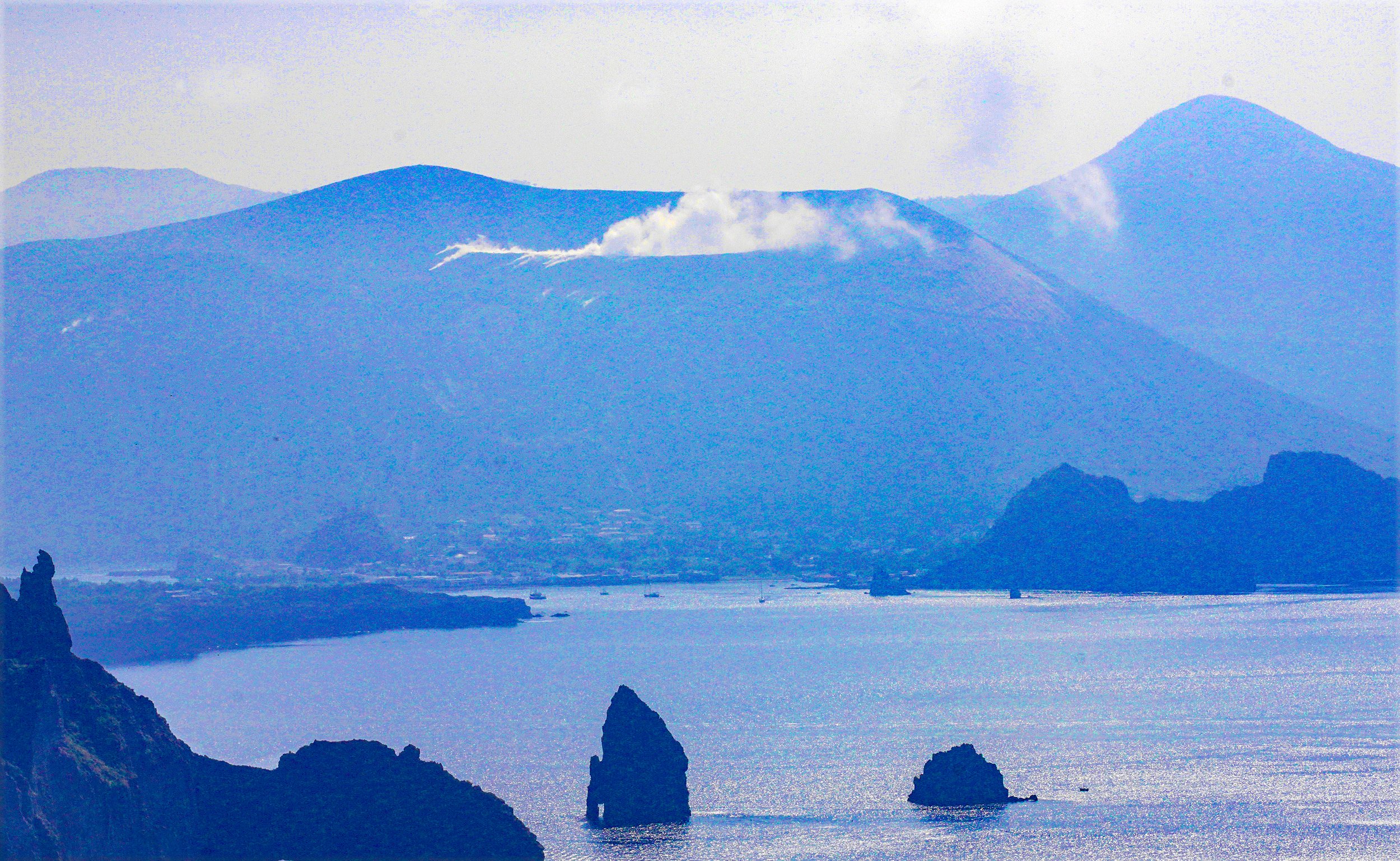
The Aeolian Islands archipelago rose from the sea about 700,000 years ago due to volcanic activity. This volcanic activity resulted in lava flows which formed obsidian, black volcanic glass. The earliest known human settlements on the island of Lipari date back to the 5,000 B.C. These populations used obsidian to fashion sharp utensils as well as export the resource throughout the Mediterranean. With the dawn of the Bronze Age in 2,500 B.C., obsidian lost its significance as a major export, but Lipari remained influential because of its location between the island of Sicily and the peninsula of Italy.
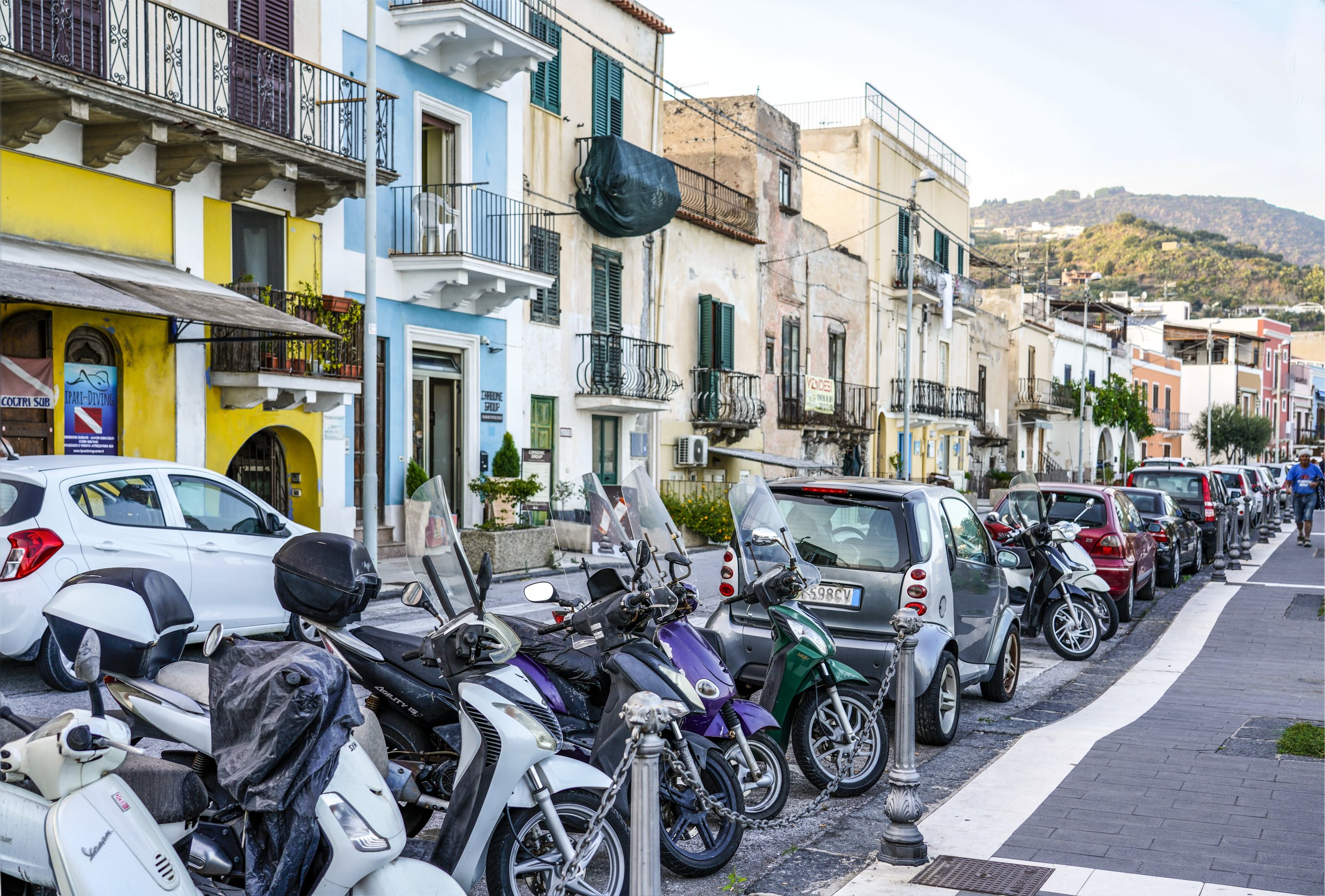

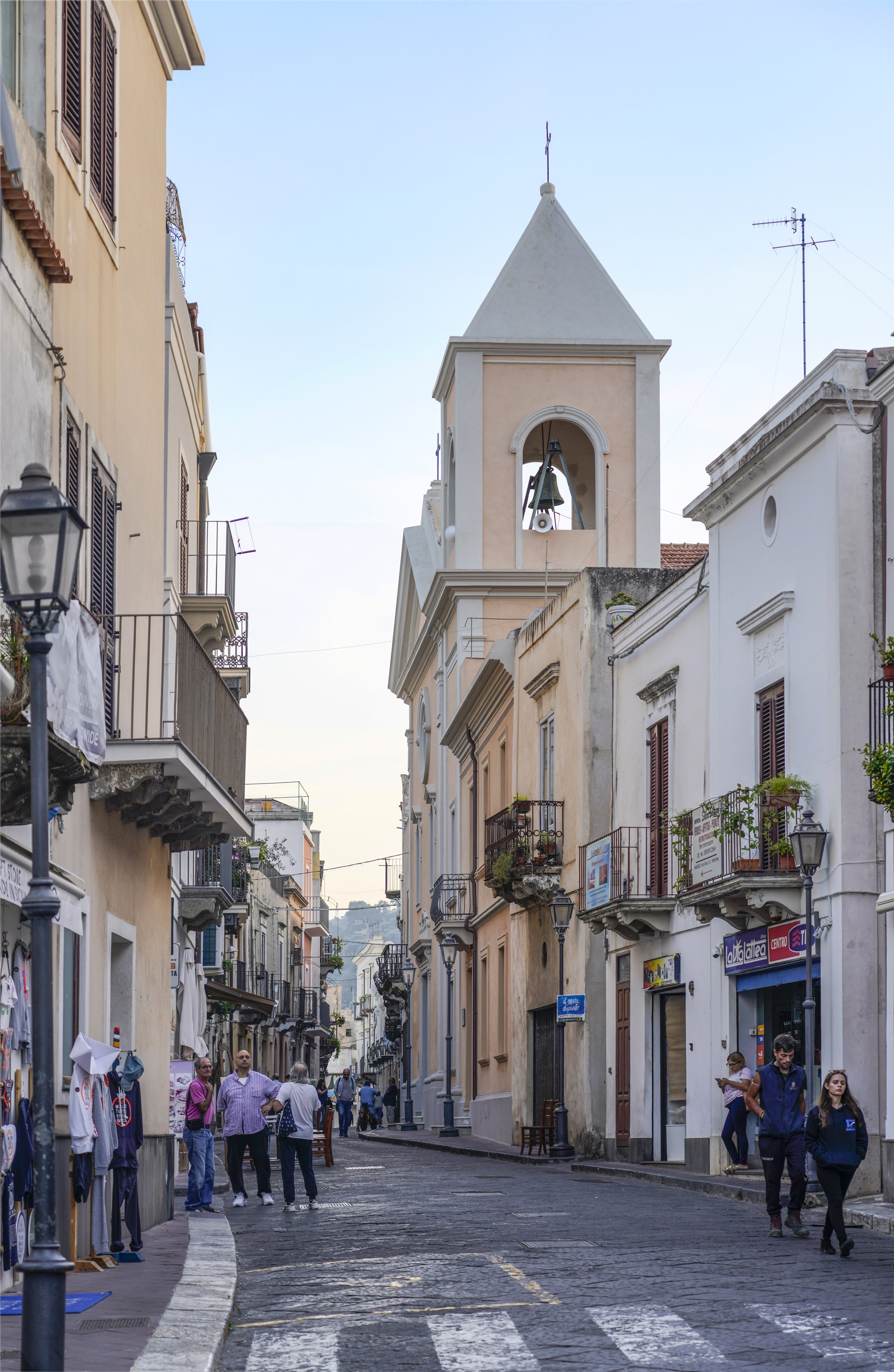
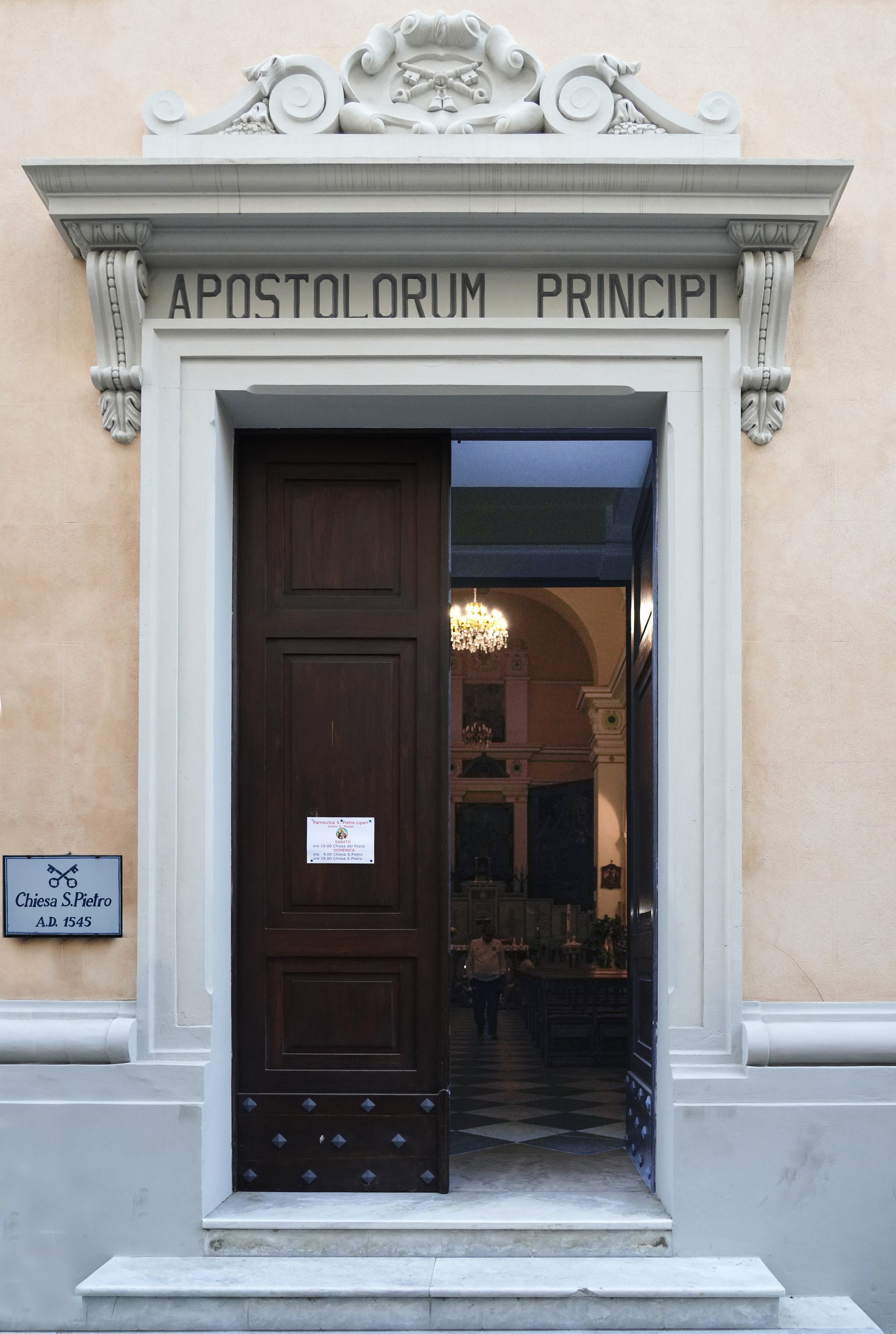
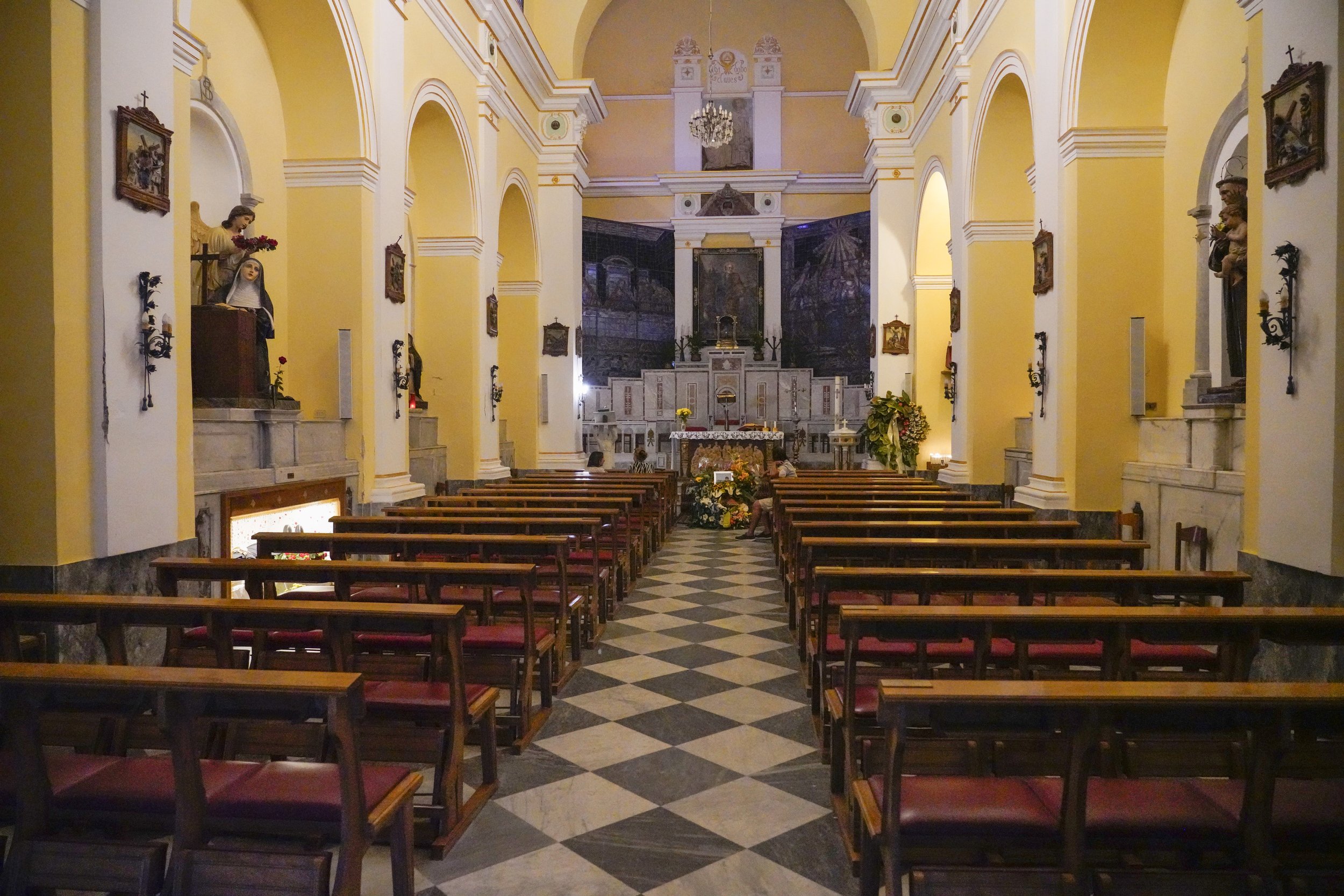
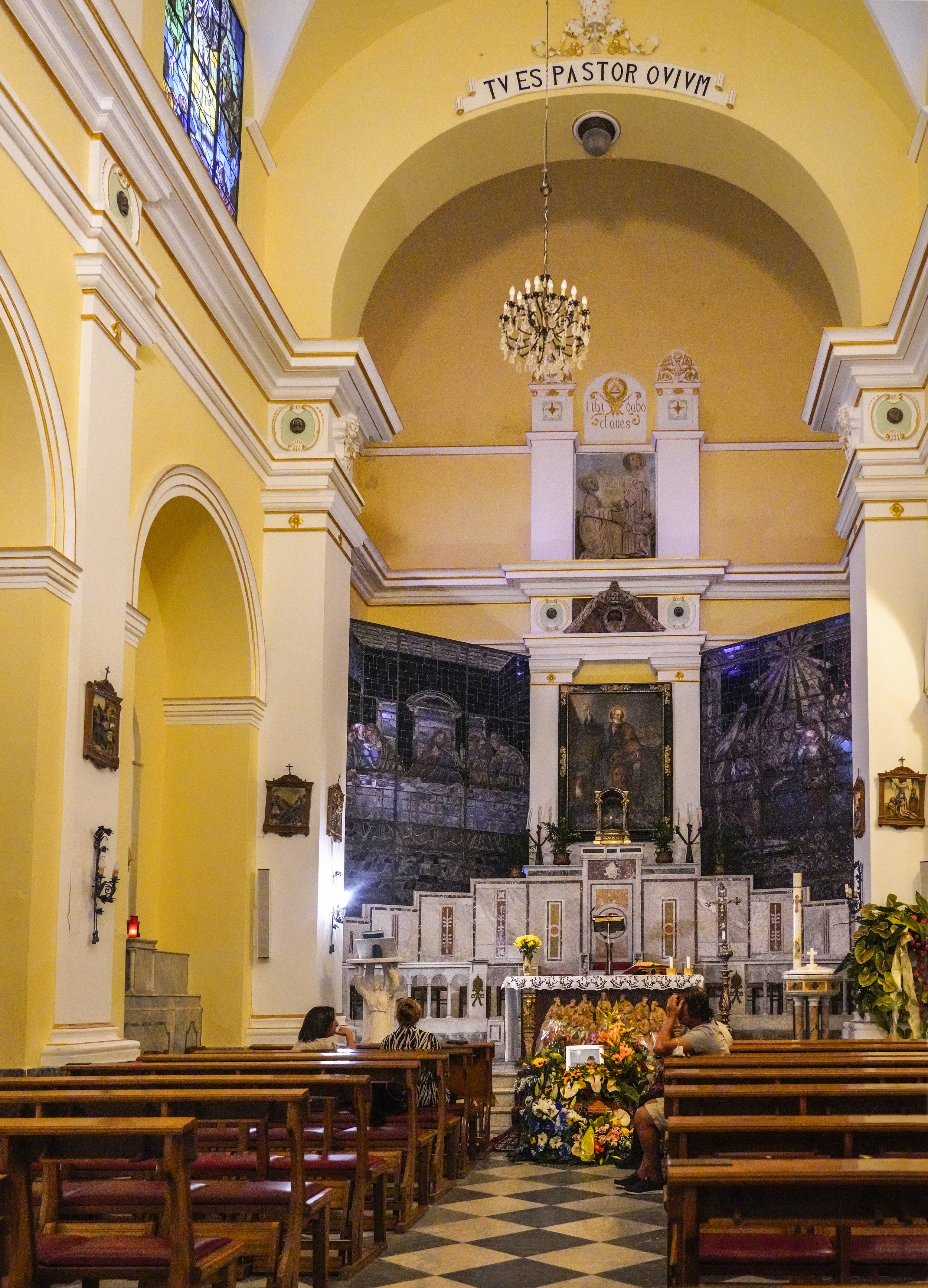
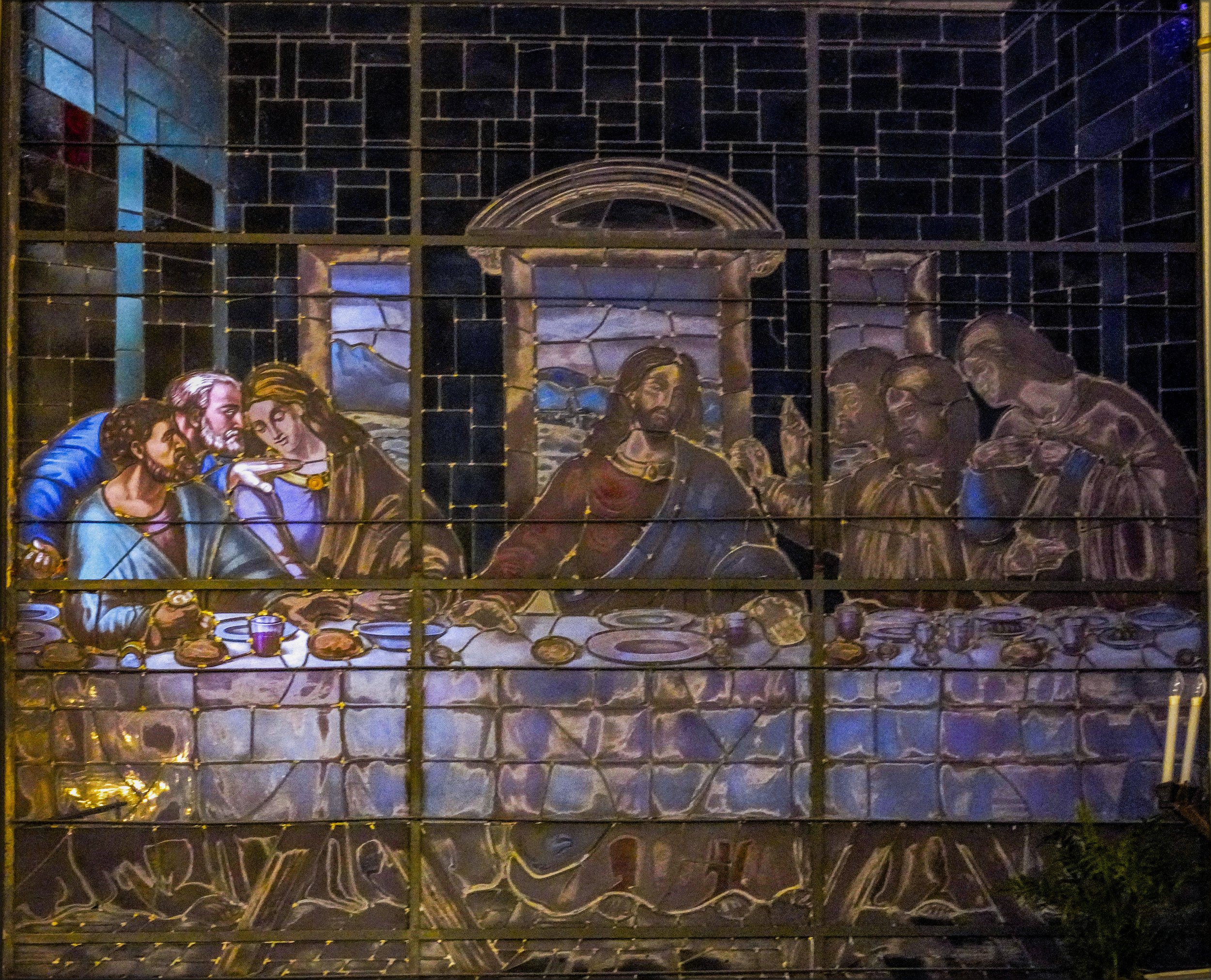
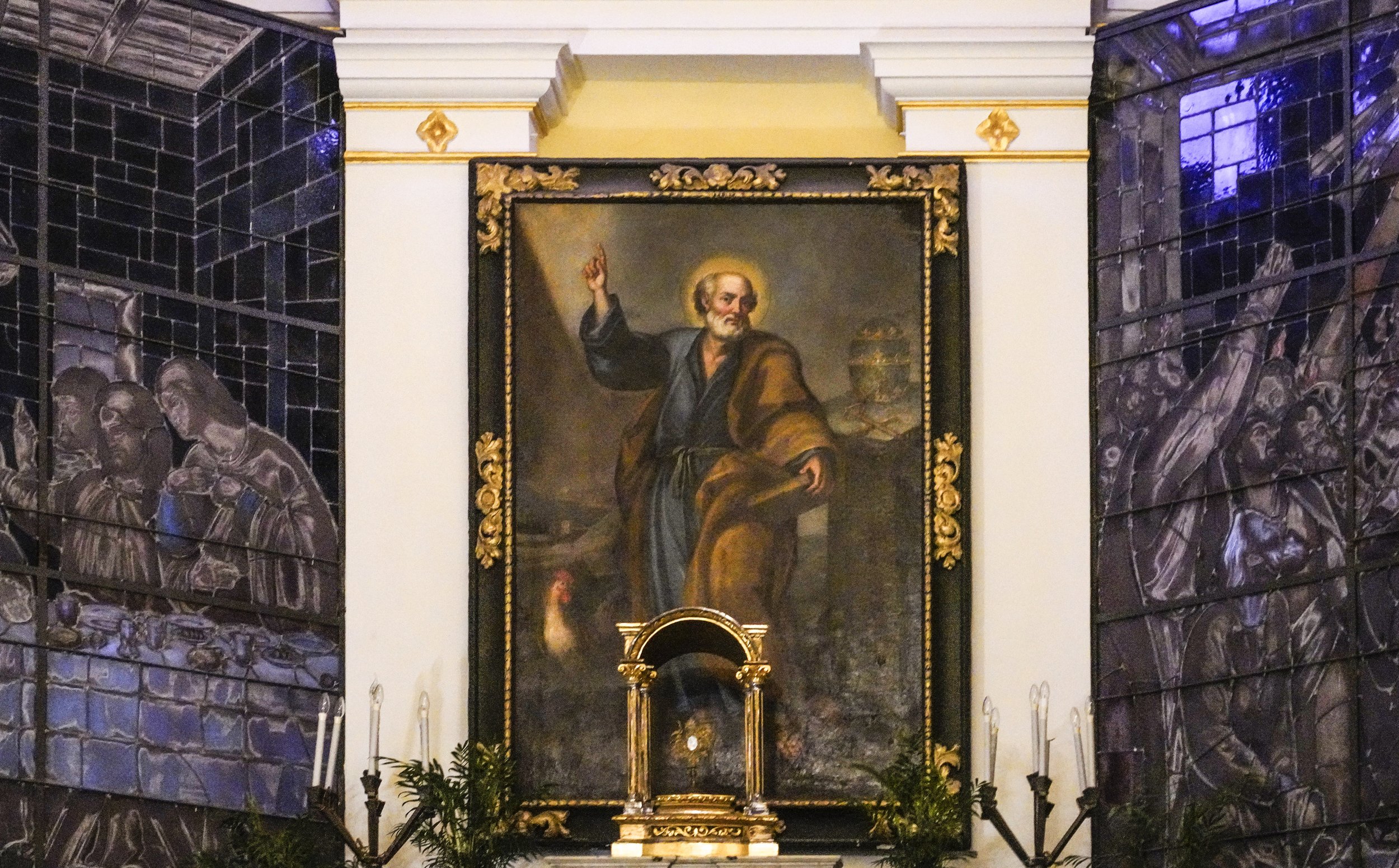
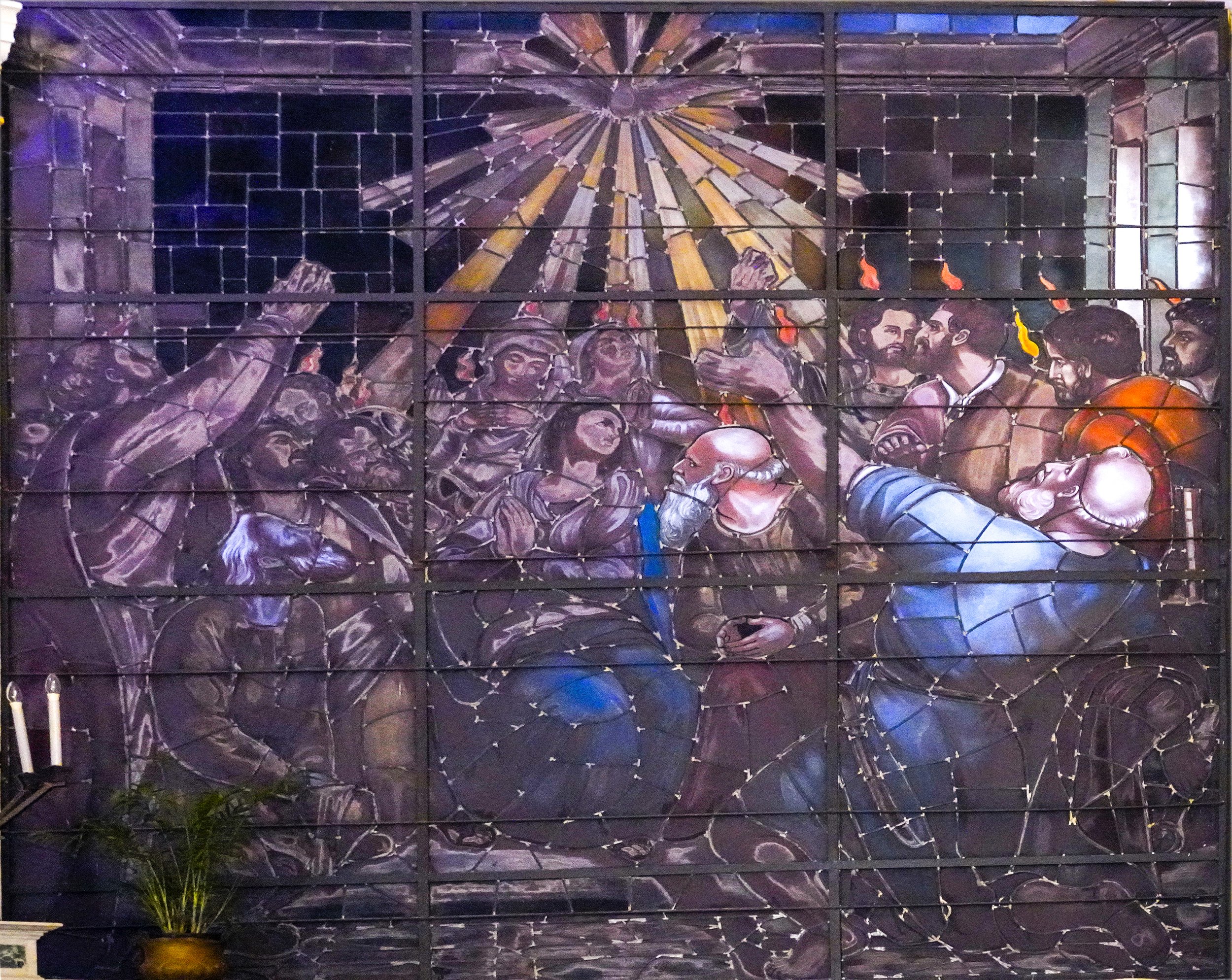
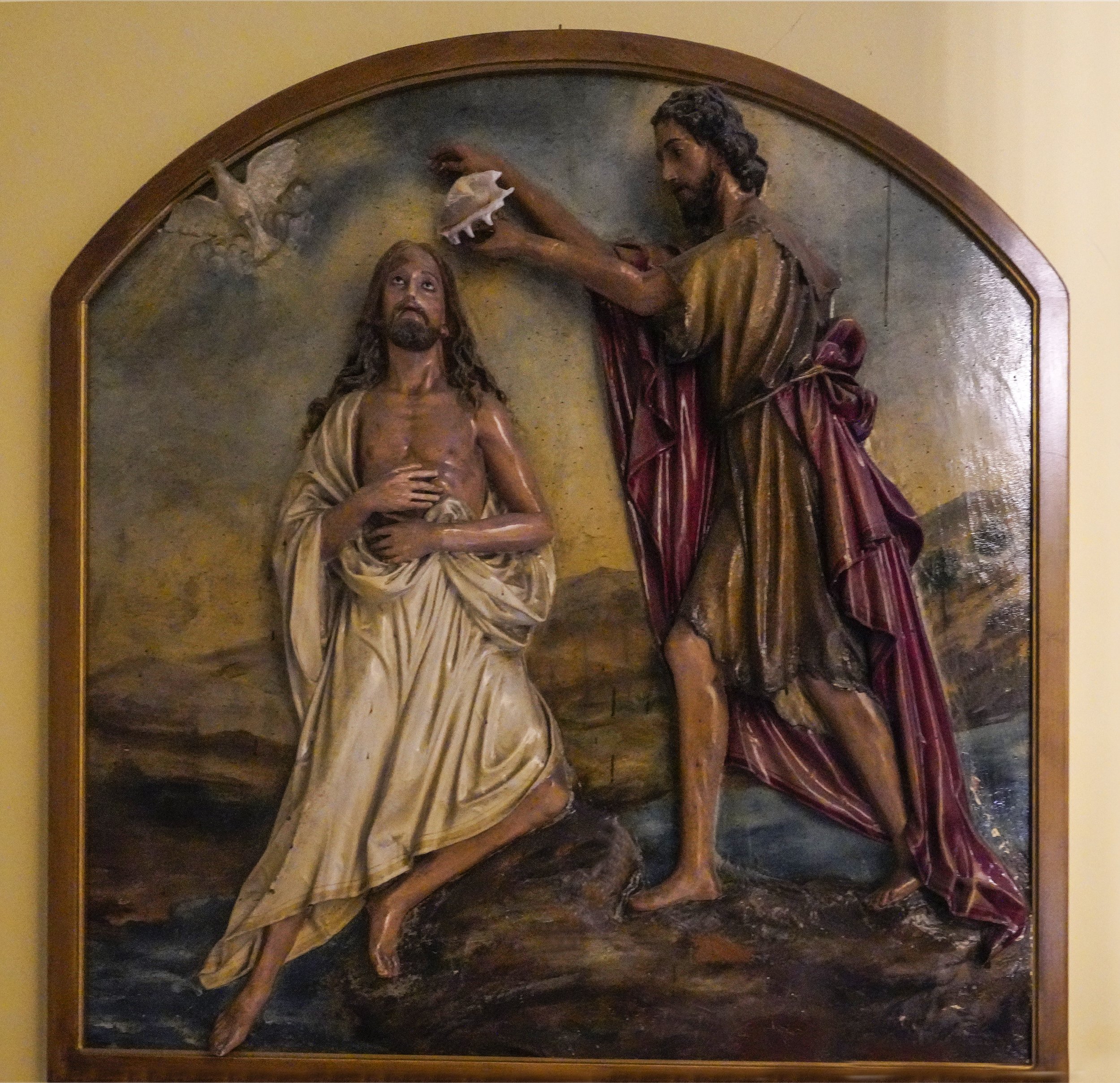
As we are on the island of Lipari, what more appropriate utensil would be used to baptize Christ than a seashell?
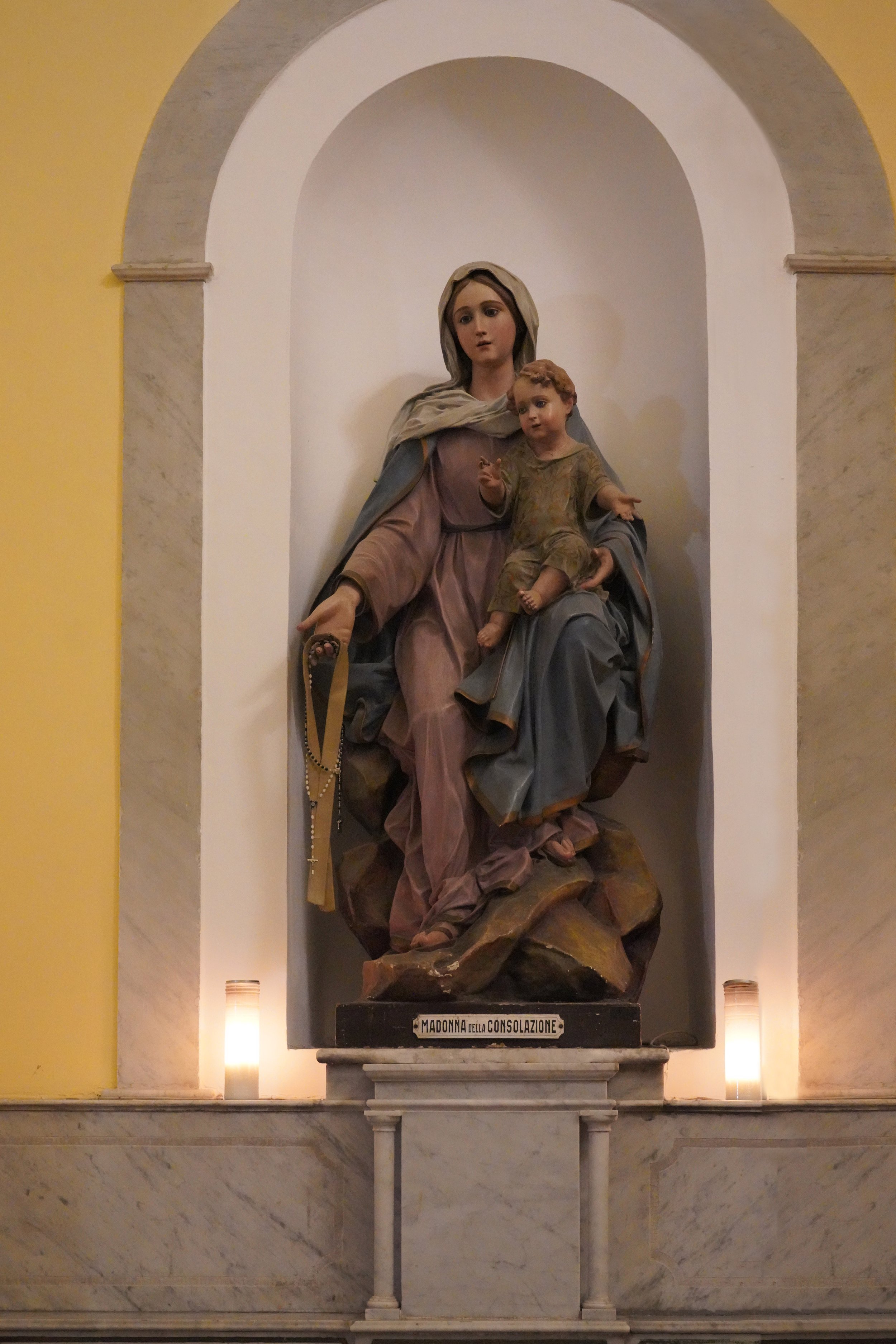
Given the hardships the people of Lipari have endured, e.g.,: annihilation, slavery, pestilence, and economic hardships and having been conquered by a variety of peoples and nations throughout its 500,000 year history, Our Lady of Consolation seems to be an appropriate focus for a Madonna in Lipari.
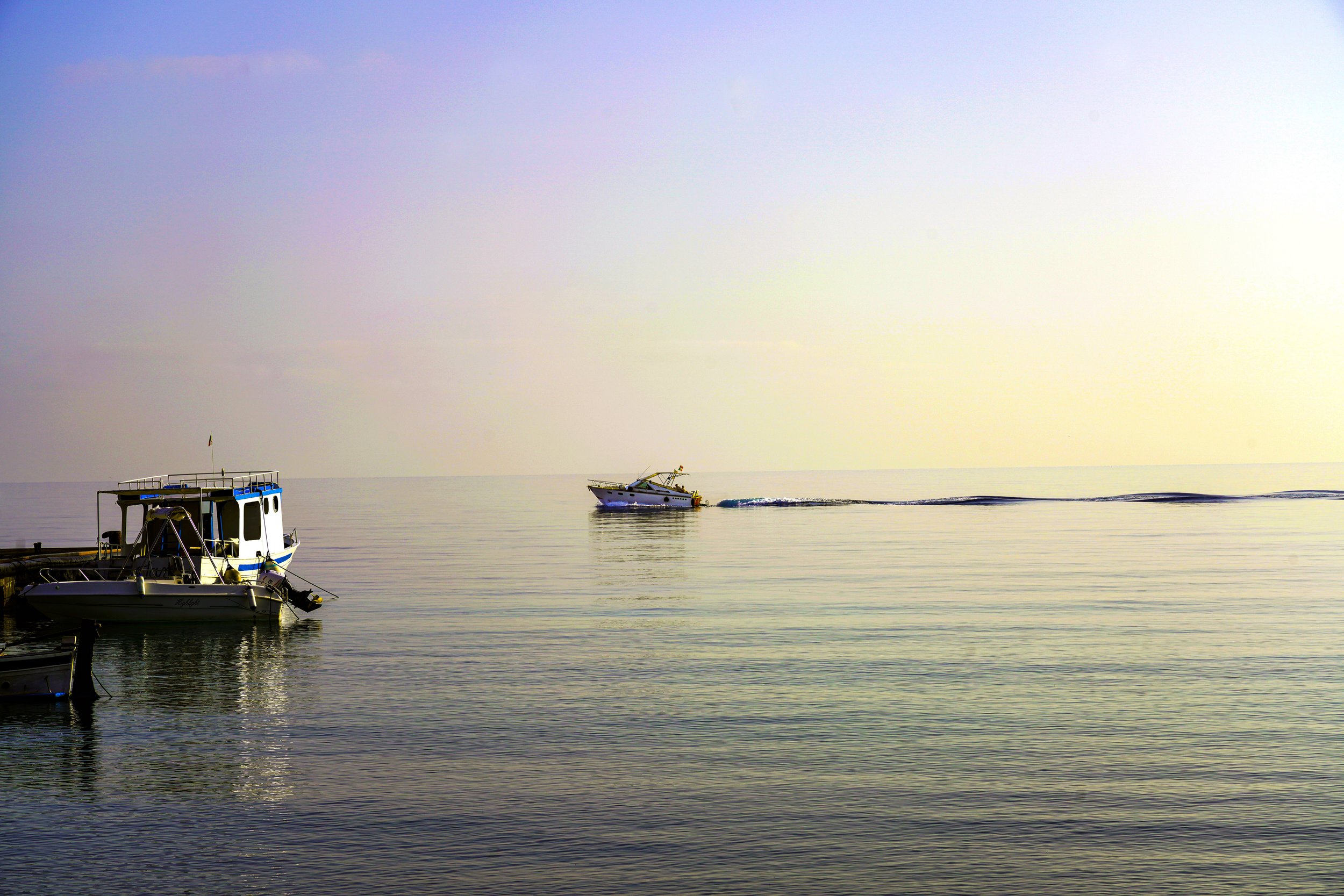

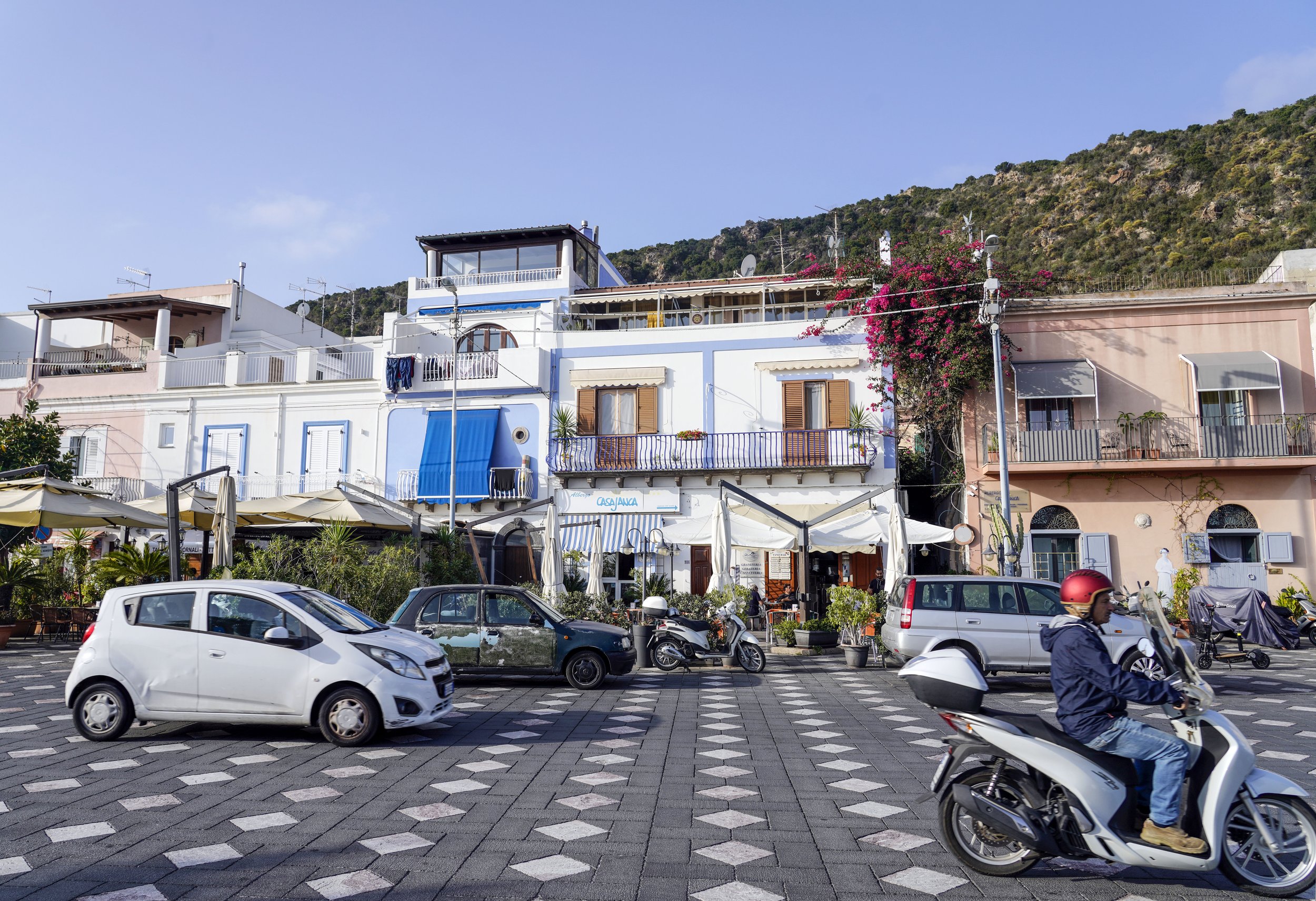
The Hotel Casajanca, the white building in the middle of this picture with the turquoise and white awning. The awning area inside the hotel is where breakfast is serve, which affords a beautiful view of the Tyrrhenian Sea.

Via Marina Garibaldi is dotted with stores, cafes and restaurants and provides a promenade, lined with palm trees, adjacent to the beach. Also. there is the ever present Catholic church, e.g., Saint Christopher’s.

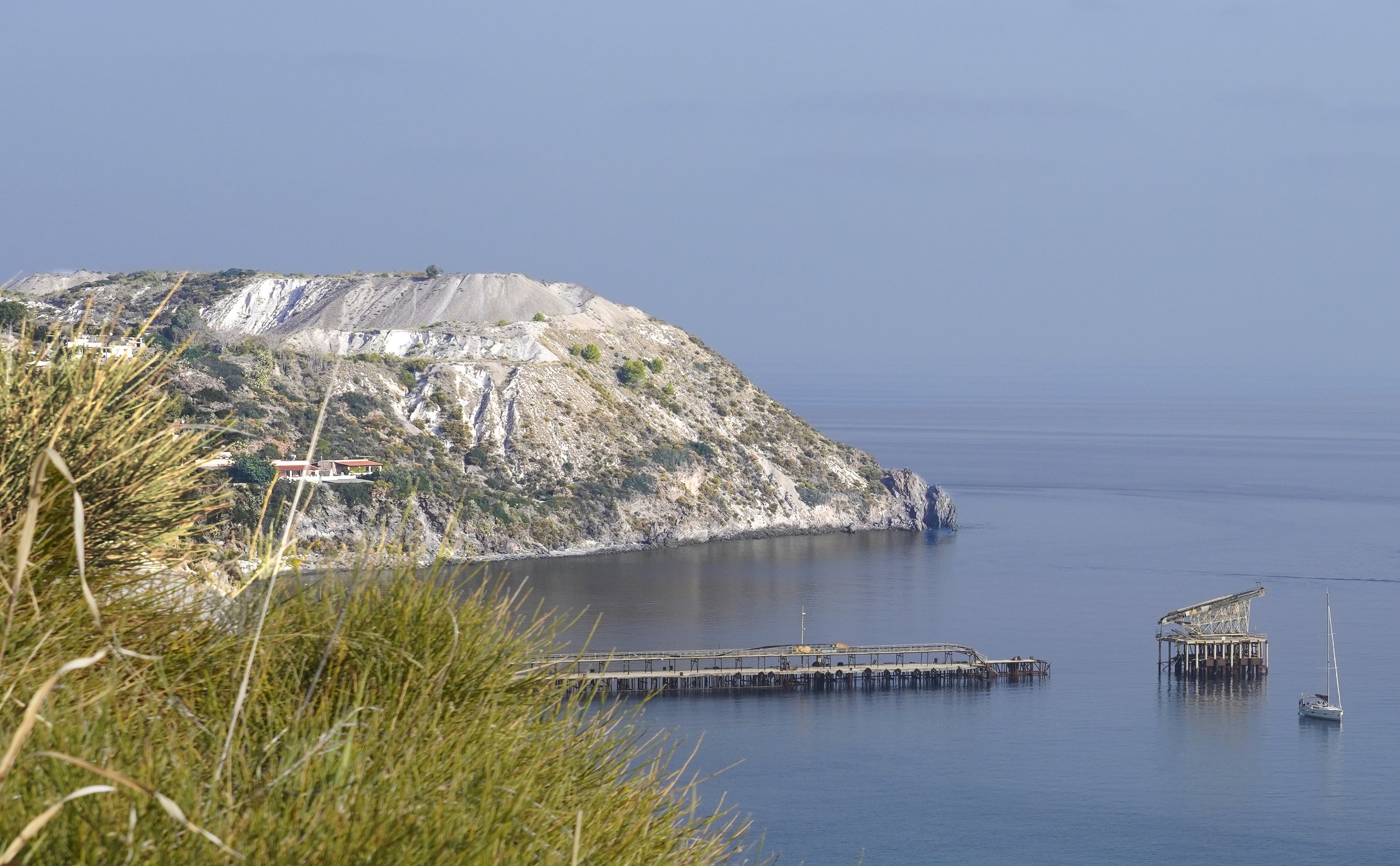
Lipari was volcanically active until the middle Neolithic. Around 9,000 years ago an obsidian flow came out of a crater on the northern part of the island. Covering much of the obsidian flow are huge deposits of pumice, ejected from the volcano during explosions. It is very light due to its high porosity - so, pumice can float in water. The high quality Lipari pumice stone was exported to much of the world up until the end of 2007 when the mines were forcibly closed.

In the Greek and Roman periods pumice was used for several reasons: it served as abrasive in producing marbles and metals to sharpen different tools and for tools and weapons during the middle-Neolithic; it was used: as a component in cement to lighten vaults, such as in domes like the Pantheon, during Roman age; in cosmetics and personal care products including for cleaning your teeth and getting a smooth skin; to sand and scrape writing scrolls during the middle ages; and in medicine to heal wounds.

In 2000 the Aeolian Islands became an UNESCO World Heritage site. At that time, it was decided that the pumice mining was to end by May 31, 2005. According to evidence provided, the northeast side of the island was totally devastated by the continuing operation of the pumice pits and the crater of Mount Pelato had, allegedly, become unstable. The National Park of the Aeolian Islands was established in 2007. Pumice mining was prohibited under National Law 354/1991 and new protected area boundaries drawn up for Lipari Island, excluding pumice quarries. In the end the mines were shut down by the police at the end of August 2007.

The earliest known human settlements on the island of Lipari date back to the 5th millennium B.C. These populations used obsidian to fashion sharp utensils as well as export the resource throughout the Mediterranean. With the dawn of the Bronze Age in 2,500 B.C., obsidian lost its significance as a major export, but Lipari remained influential because of its location between the island of Sicily and the peninsula of Italy.

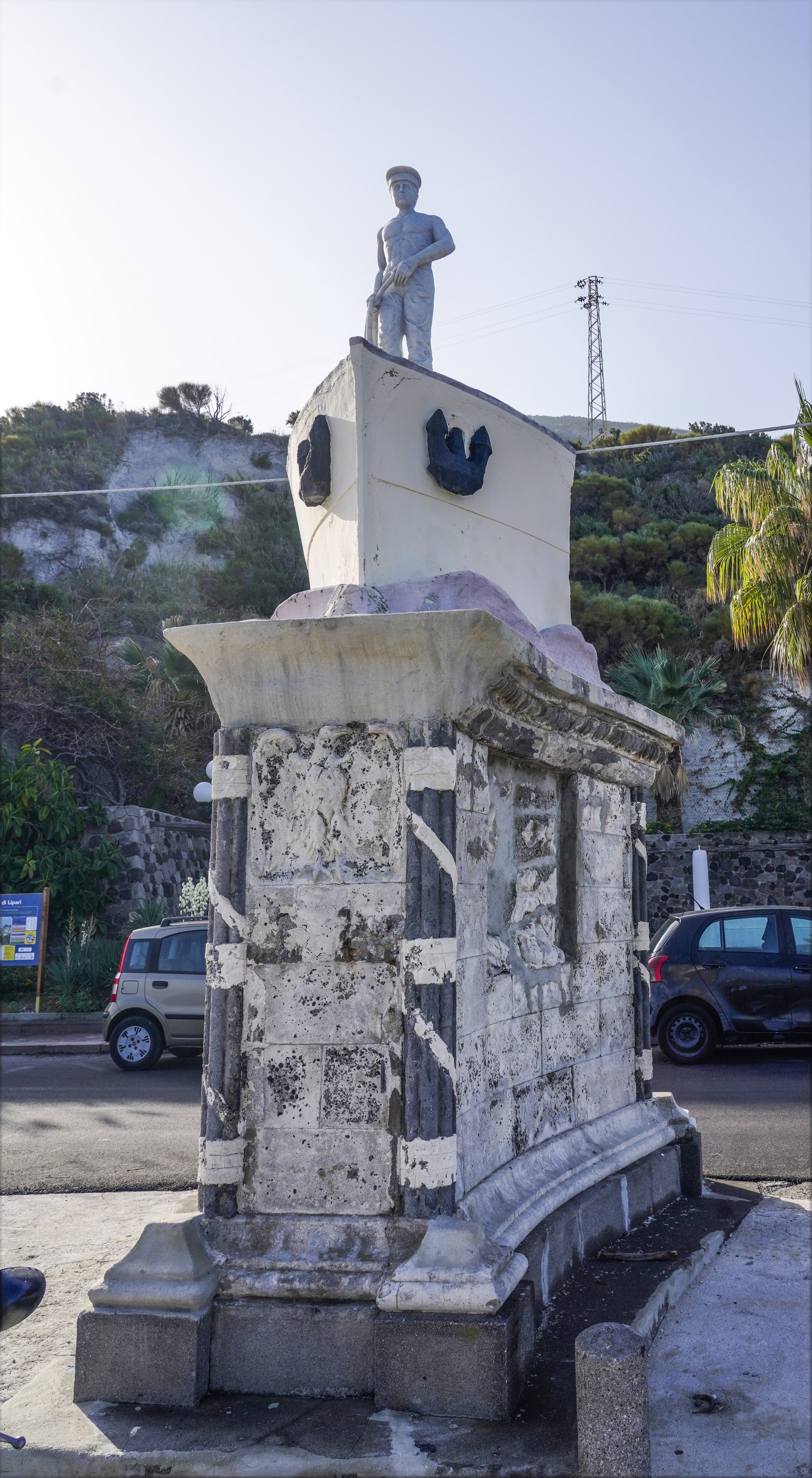
The war memorial shows a sailor behind a shape of the front of a ship. It is dedicated to “The fallen of Aquacaldo in the great war, 1915-1918.”
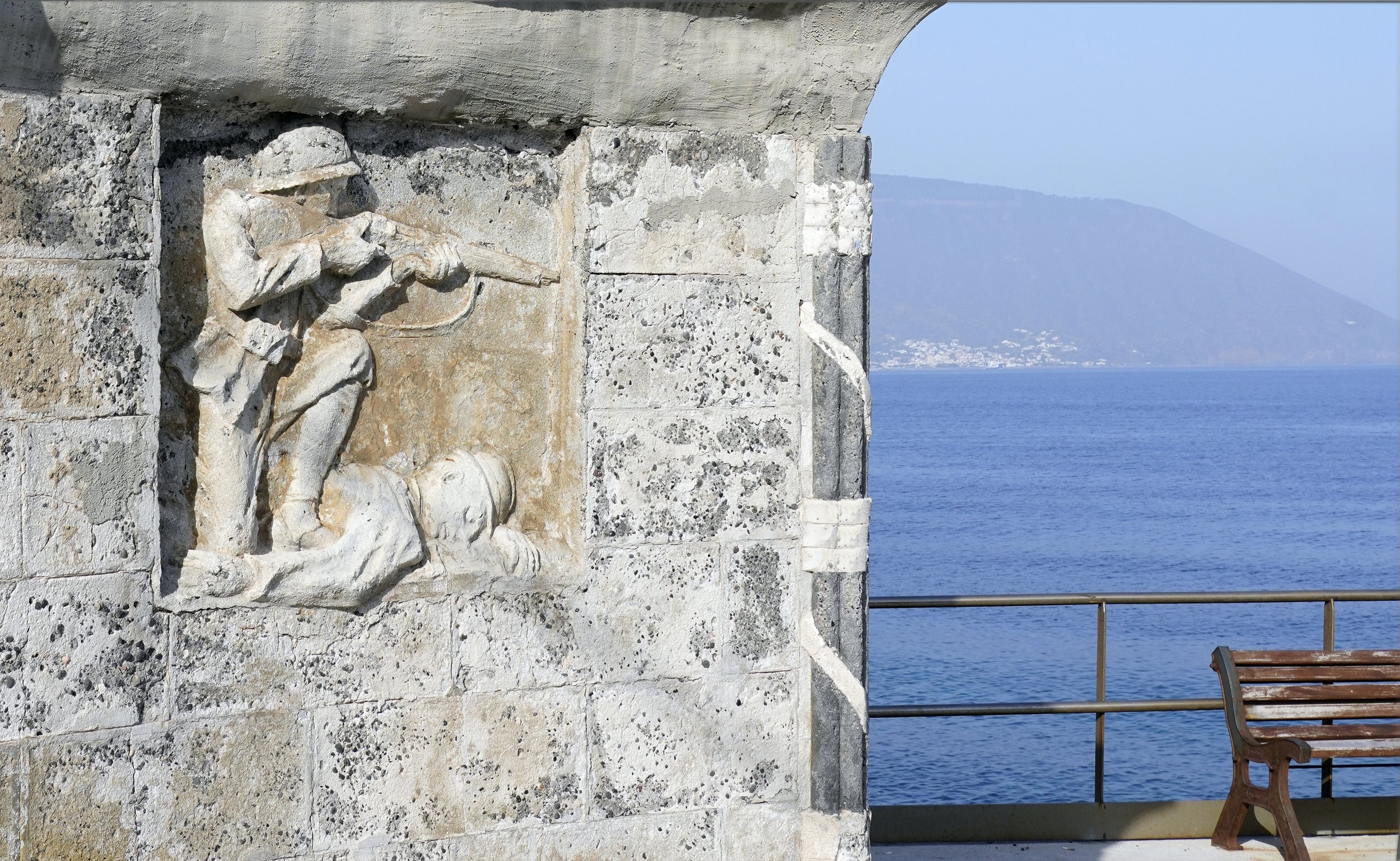
Mussolini’s fascist regime ruled from 1922 to 1945. The bound sticks on the edges of the monument are called fasces and were Roman symbols of power and authority. However, the fasces came to be associated with right-wing extremism when it was adopted by Benito Mussolini for his fascist movement (the term fascism itself is derived from the word fasces ). The fasces became the most well-known symbol of fascist Italy, and thus of fascism itself.


In the eastern side of Lipari, about 1¼ miles north of Lipari town, along the town of Canneto is this lovely beach sitting in a beautiful bay. The Canneto beach is made up of mostly pebbles mixed with sand.
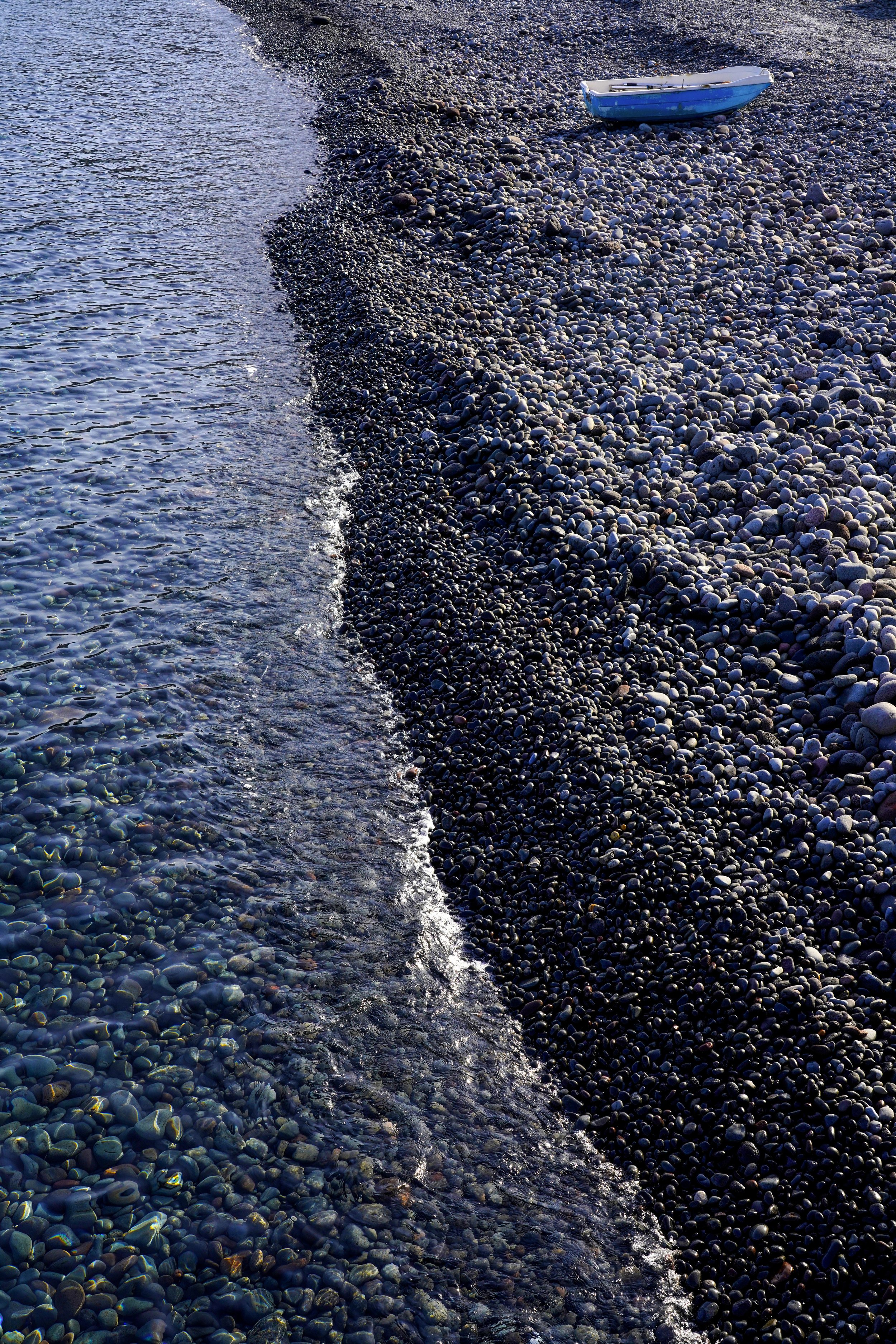
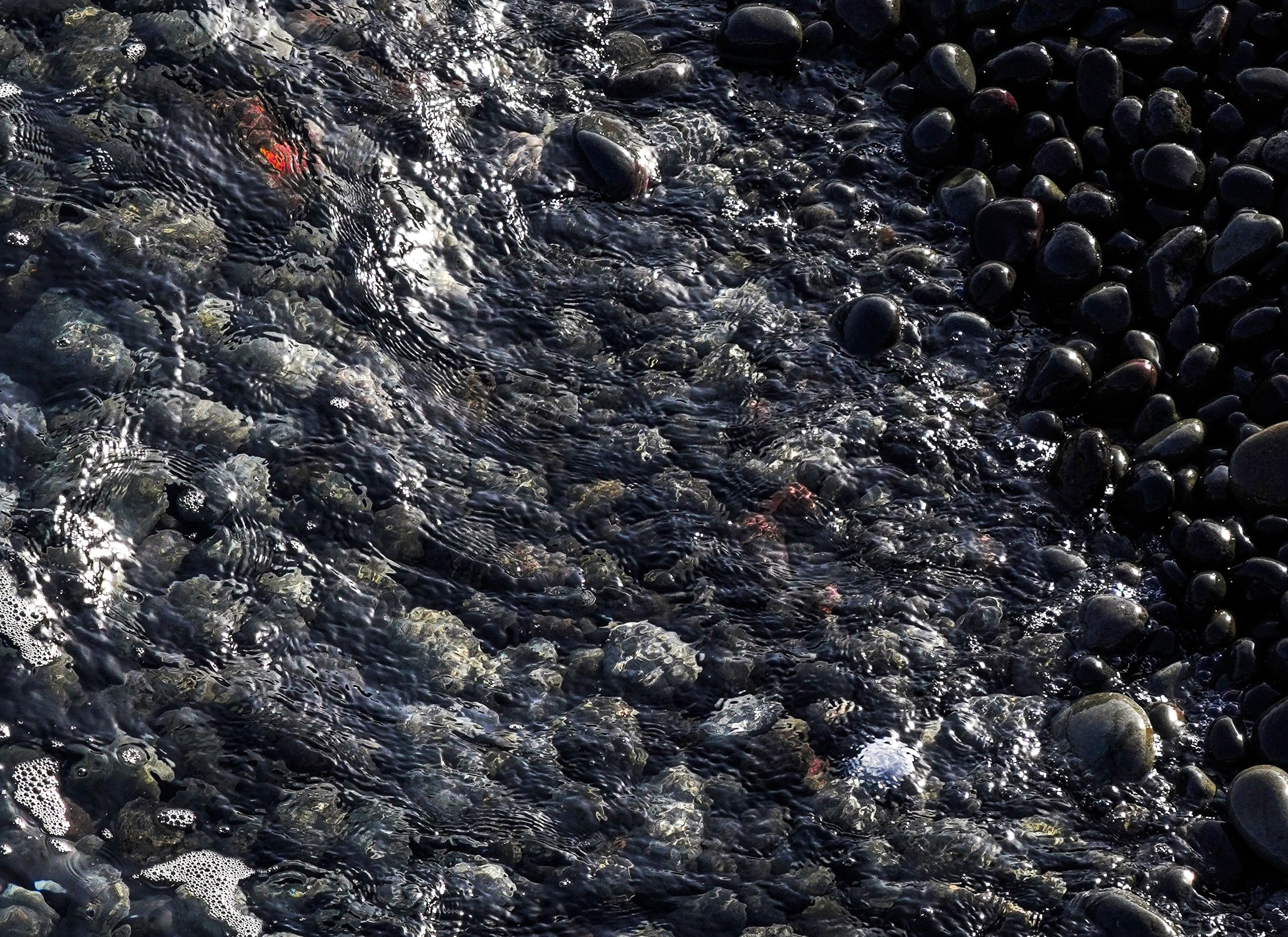
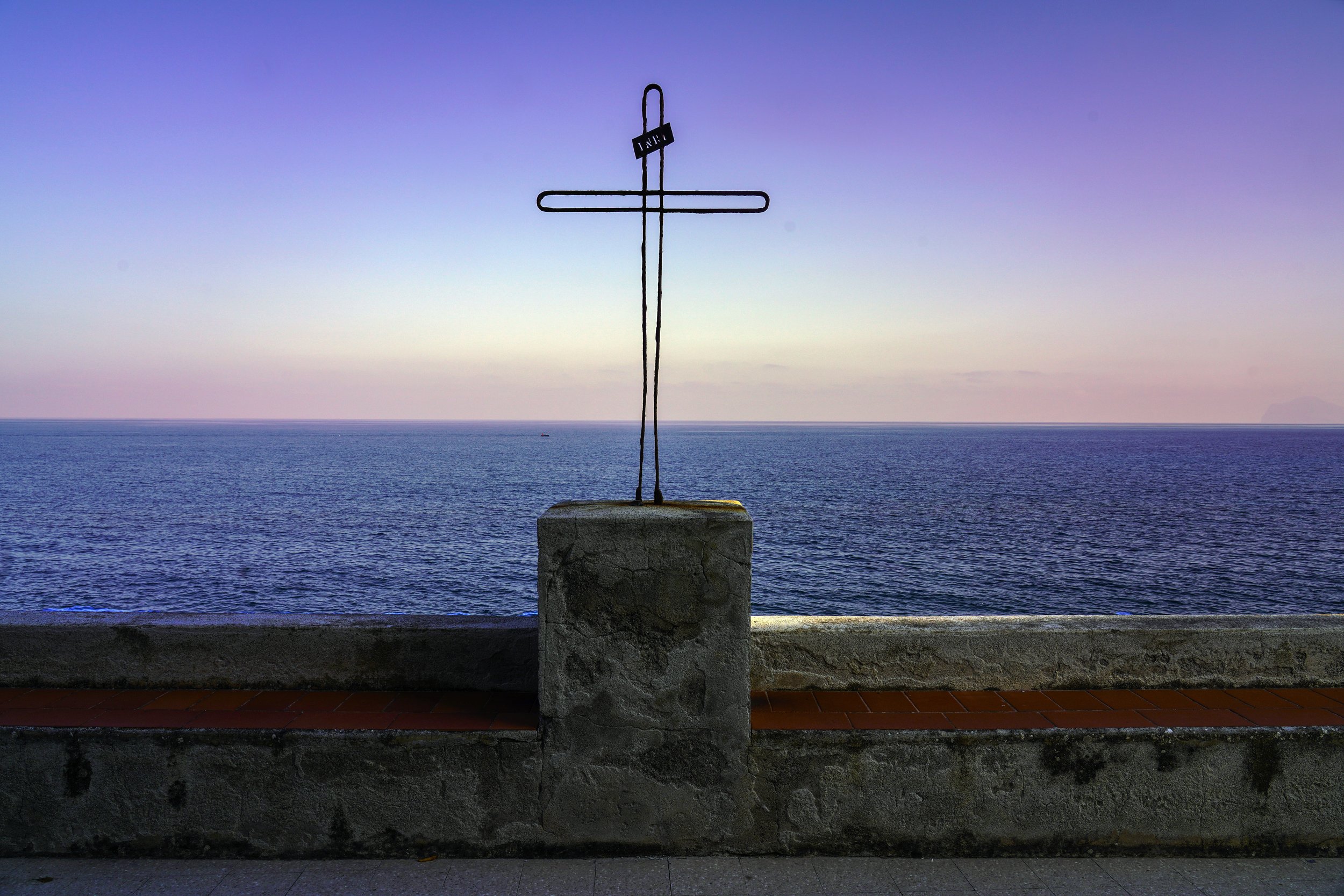
According to the Gospel of John, 19:19-22: Pilate also had an inscription written and put on the cross. It read, “Jesus the Nazorean, the King of the Jews.” … and it was written in Hebrew, Latin, and Greek. So the chief priests of the Jews said to Pilate, “Do not write ‘The King of the Jews,’ but that he said, ‘I am the King of the Jews.’” Pilate answered, “What I have written, I have written.” The inscription Pilate had written is depicted on crucifixes with the abbreviation INRI.
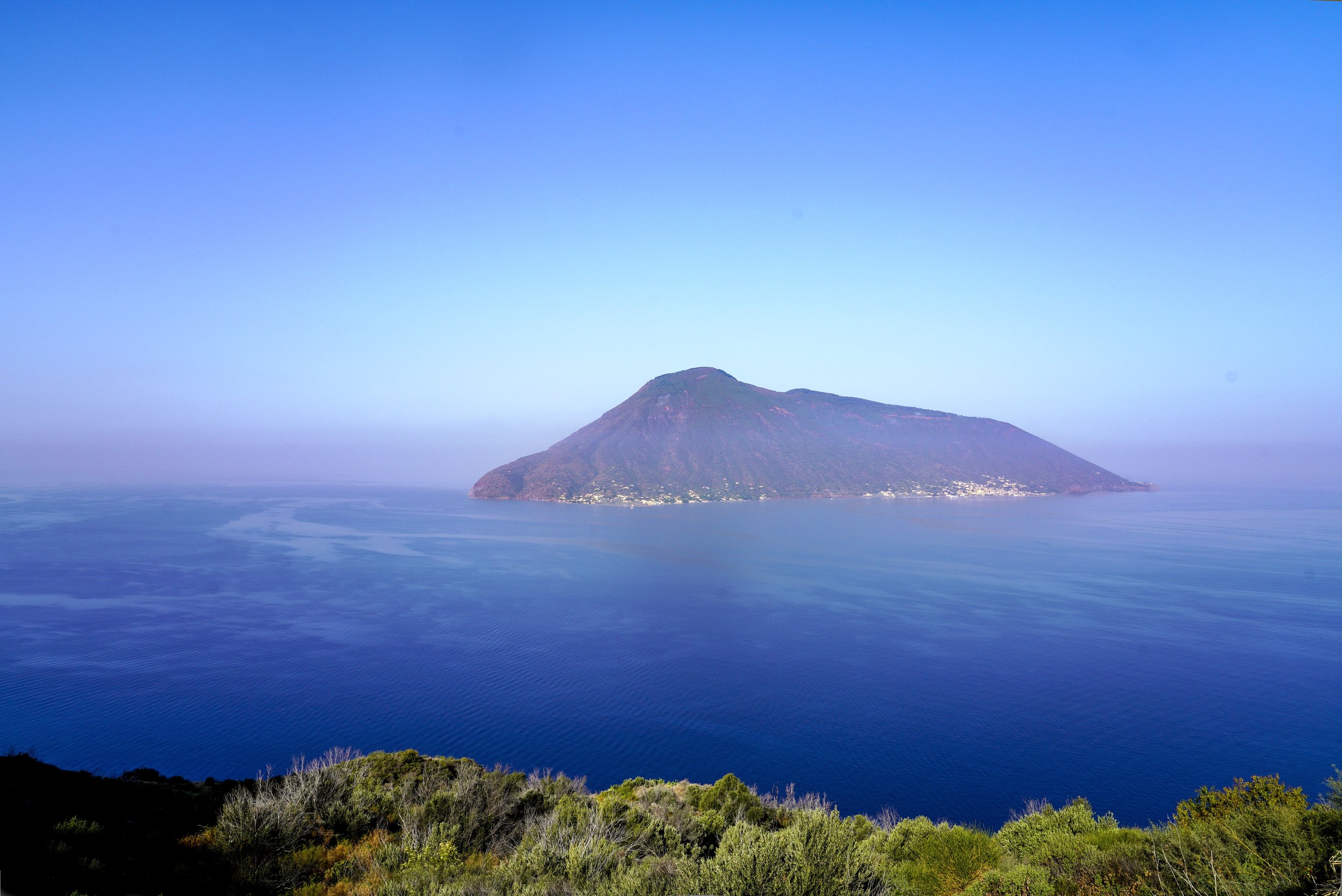
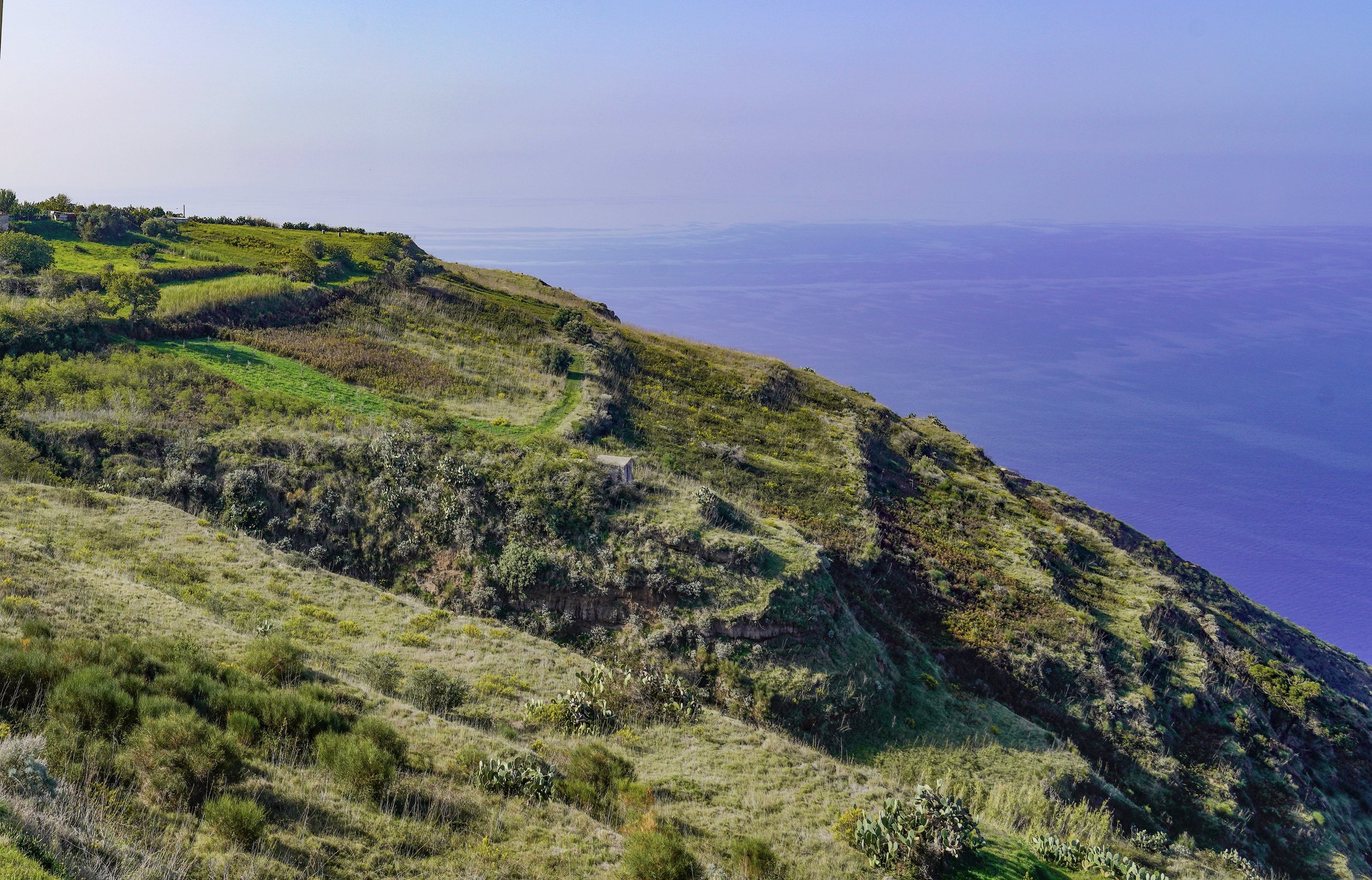

The Sanctuary of Maria Santissima della Catena (Sanctuary of the Most Holy of the Chain) is also known as the Chiesa Vecchio, Old Church, and its construction dates back to 1588. Inside there is an oil painting on canvas from the 18th century and a wooden statue of Our Lady of the Chain from the same period.
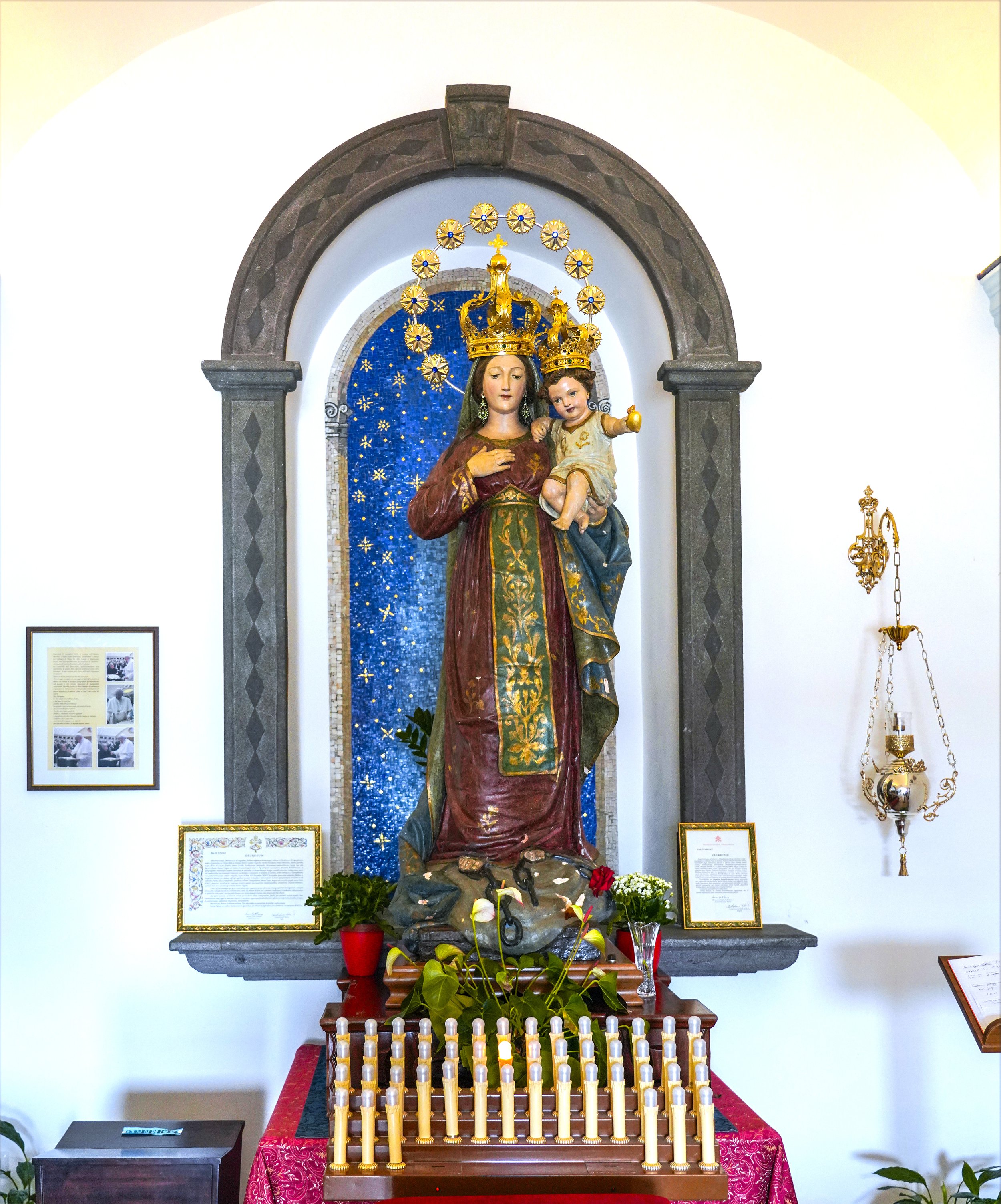
To make a long story short, and you might really enjoy the entire tale, In the year 1392, while Martin I reigned over Sicily, three young men were condemned to die on the gallows. Through a series of events, which included a raging storm, sheltering in the Church of Mary of the Port, chained prisoners and doors, prayers, sleeping guards, unchained prisoners and doors, directions from the image of the Virgin Mary, escape and recapture, and the people pleading to the king, the King stated, “The Blessed Virgin Mary has set them free, so will I.”
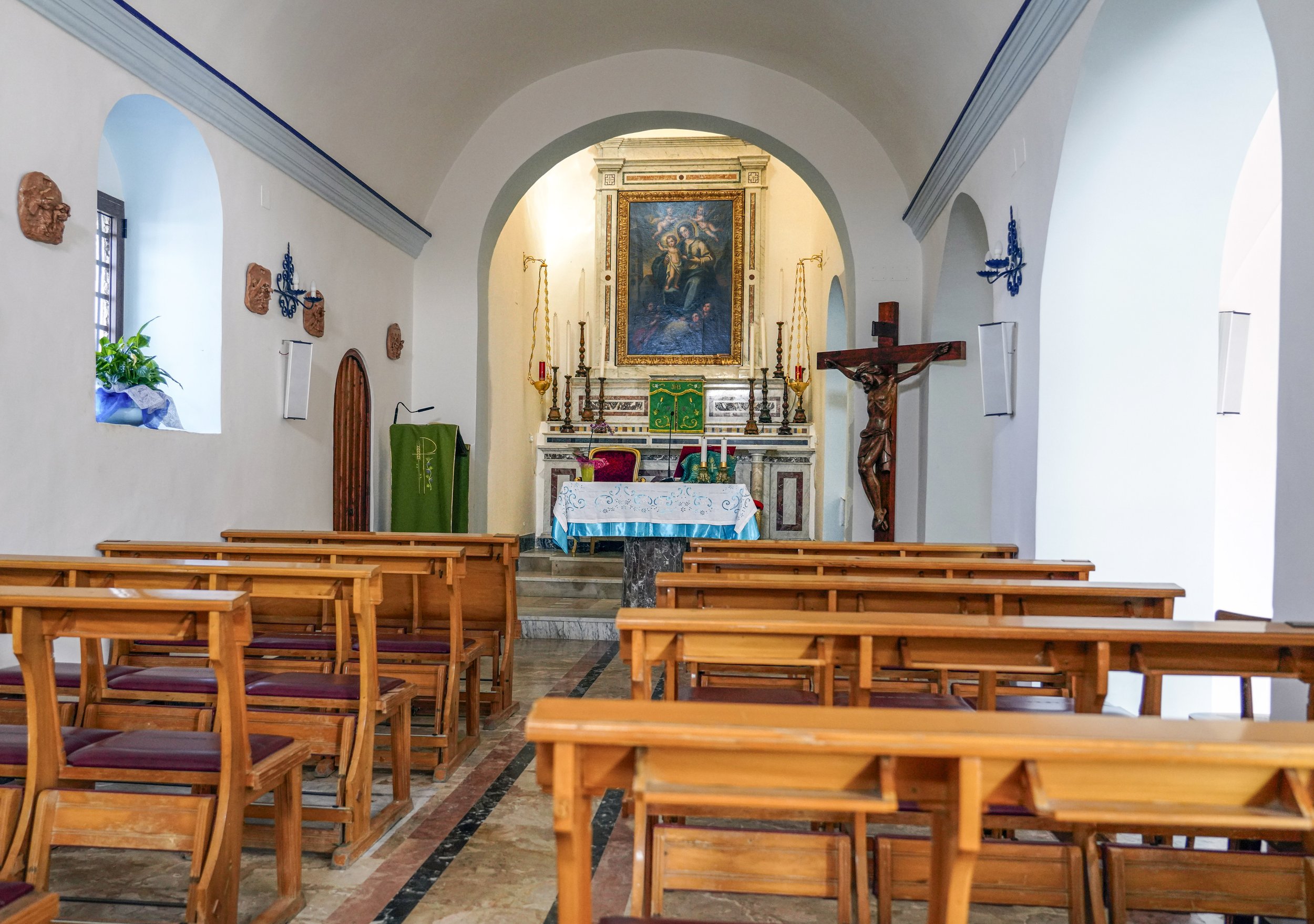
The nave and main altar of the “Old Church” includes the Holy Virgin with Child oil painting on canvas from the 18th century.
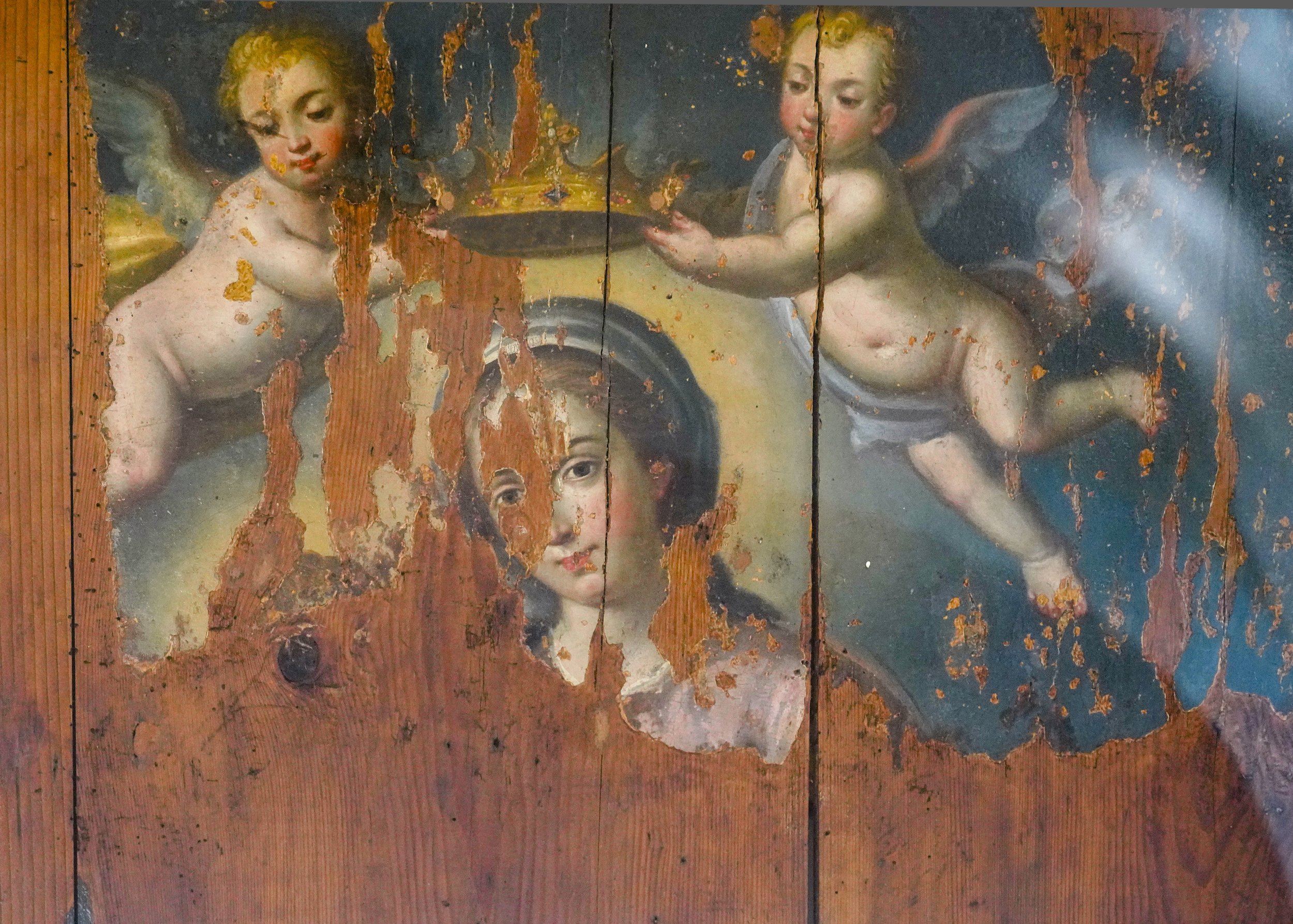
Mary is sometimes shown, in both Eastern and Western Christian art, being crowned by one or two angels, signifying that she is Queen of Heaven. This badly damaged painting was executed on wood panel. Panel paintings were made on a flat panel of wood, either a single piece or a number of pieces joined together. Until canvas became the more popular support medium in the 16th century, panel painting was the normal method, when not painting directly onto a wall (fresco). In the Netherlands the change took about a century longer; e.g., the young Rubens preferred it for the greater precision that could be achieved with a totally solid support.
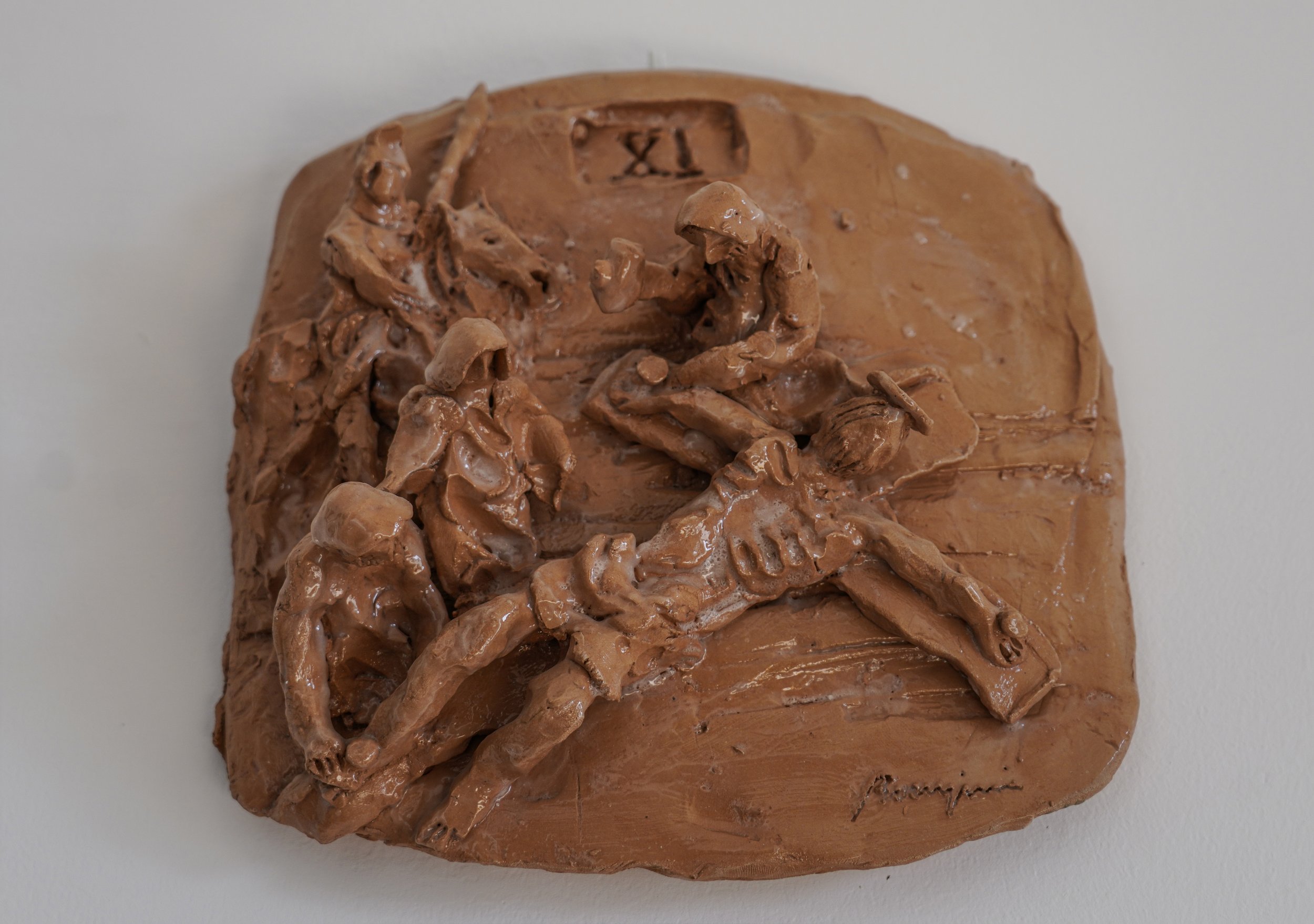
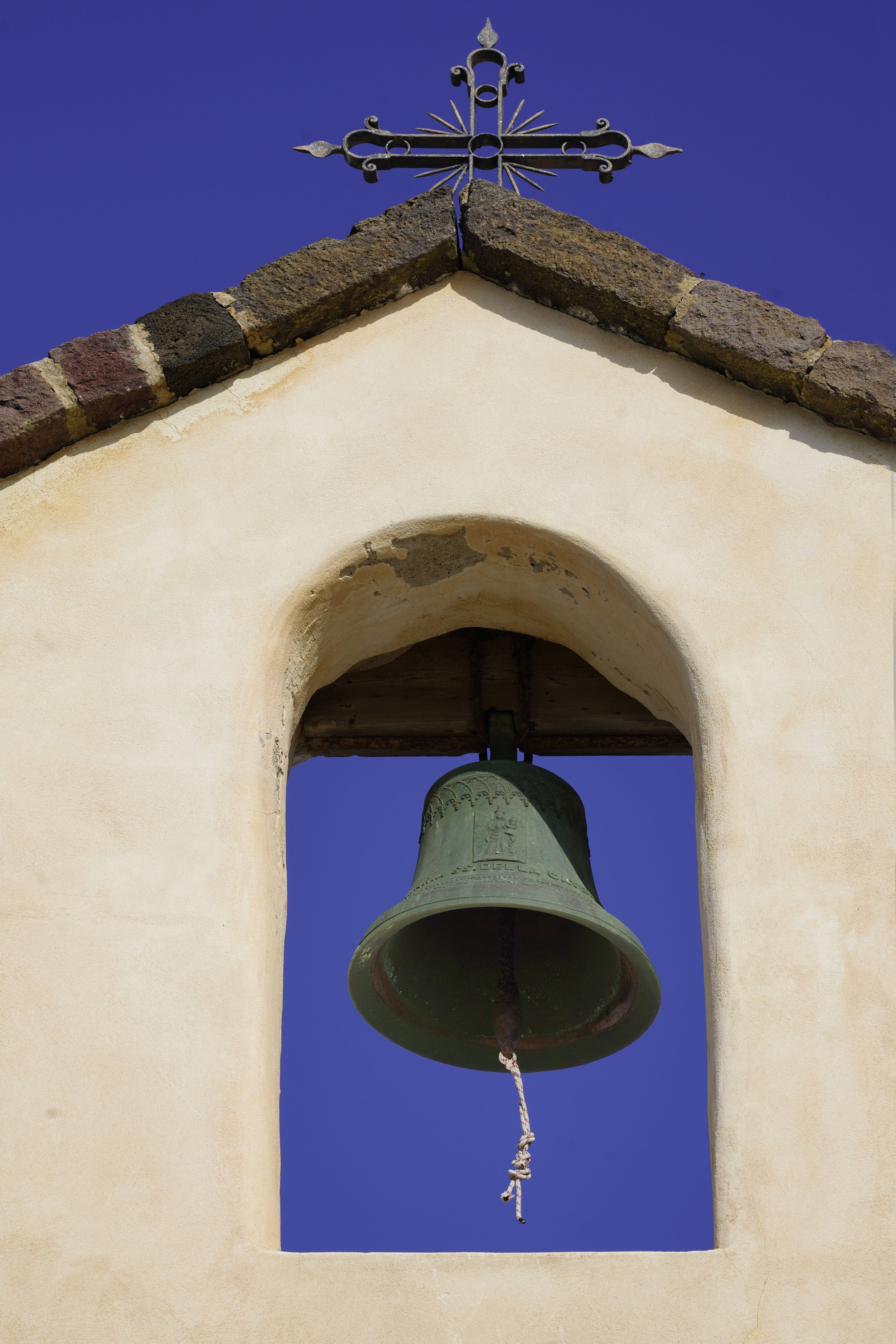

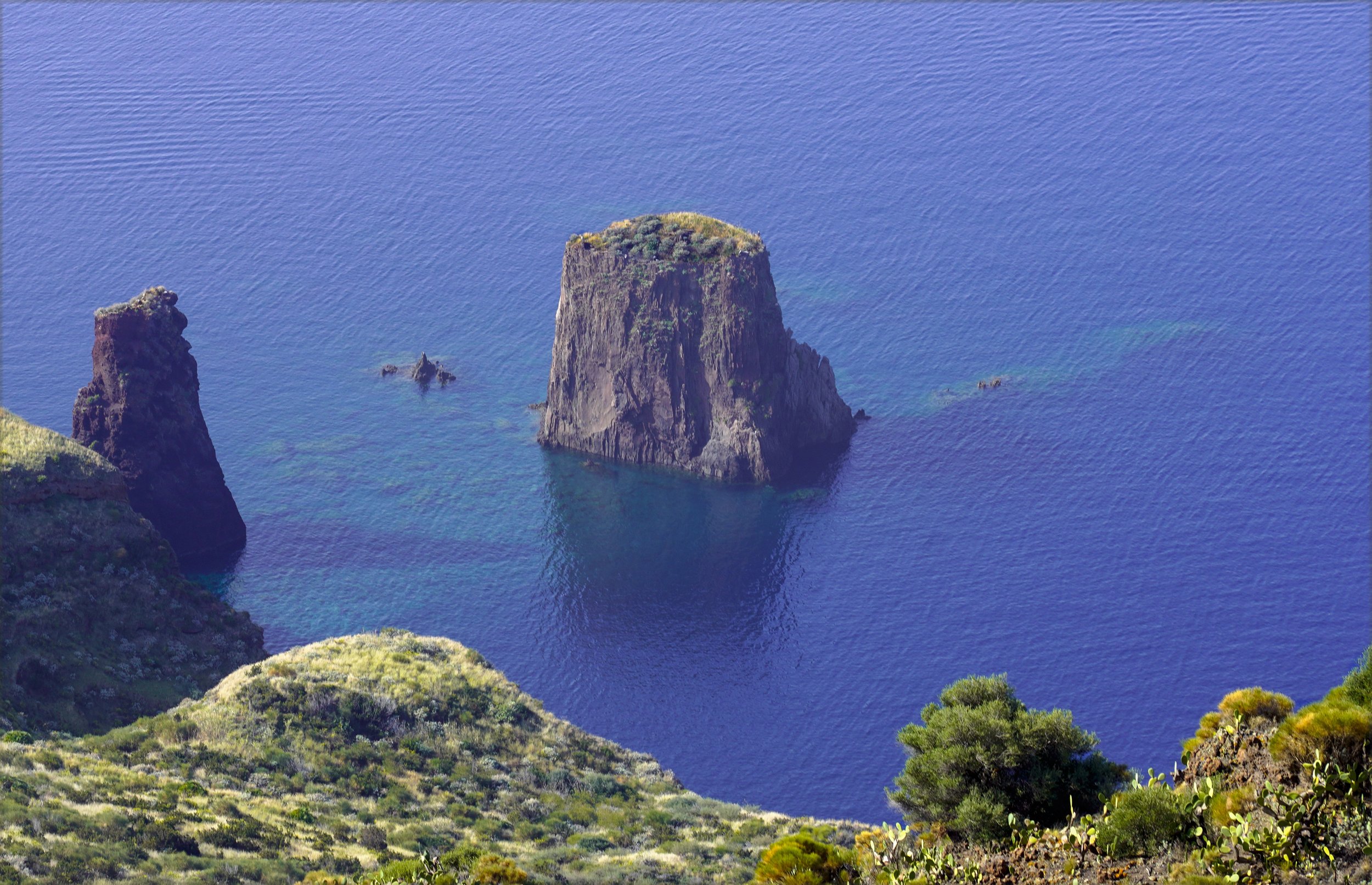
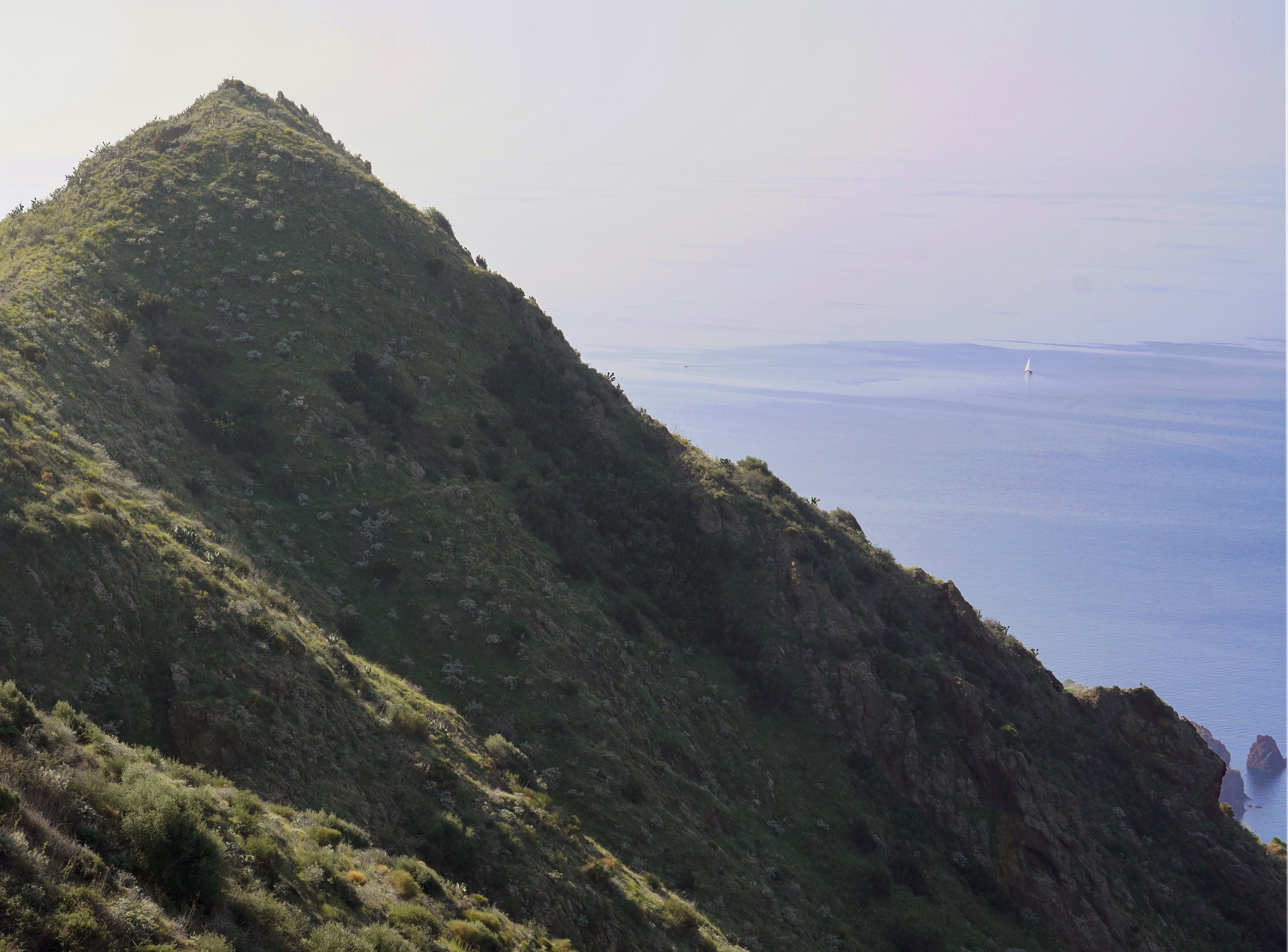
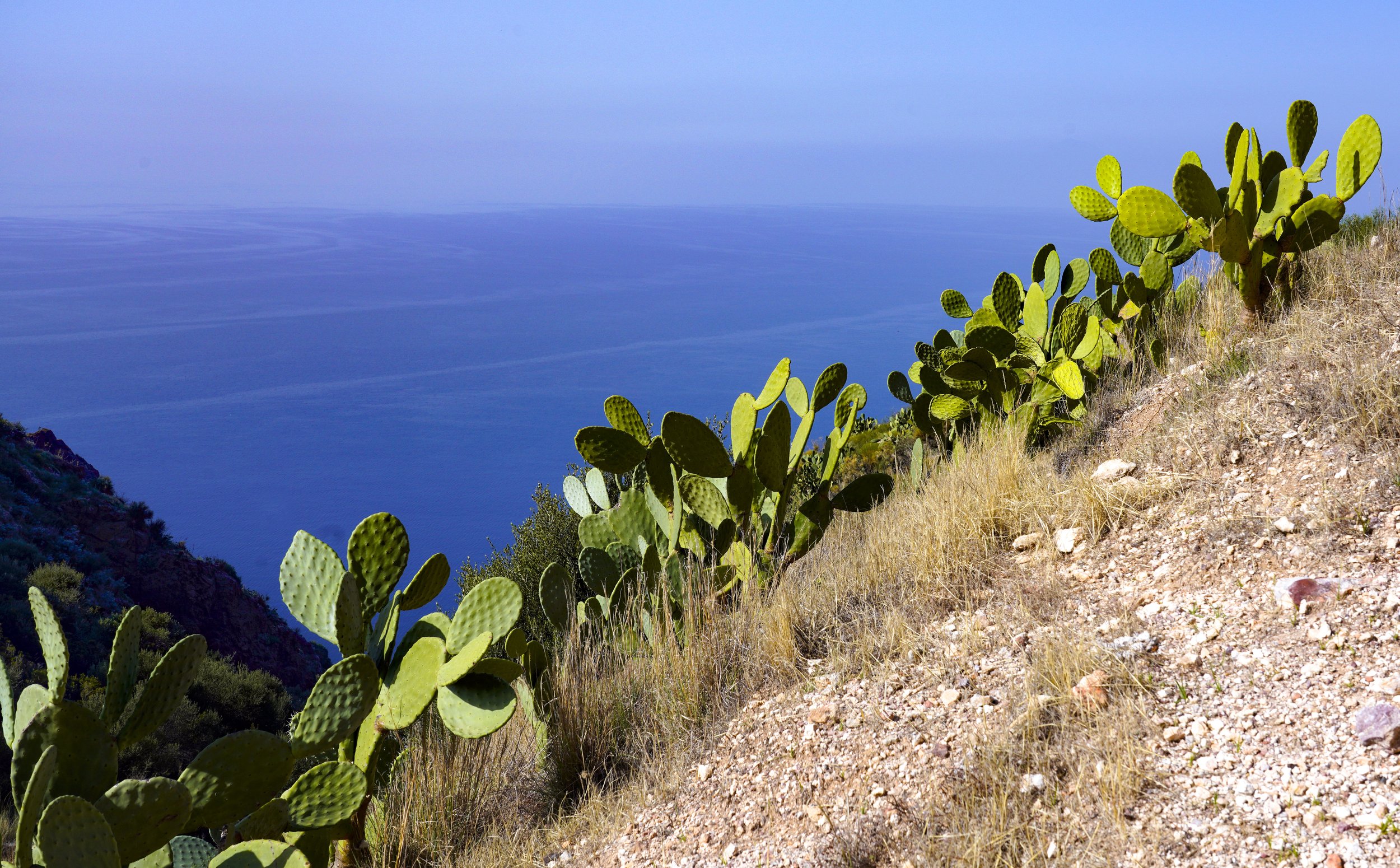
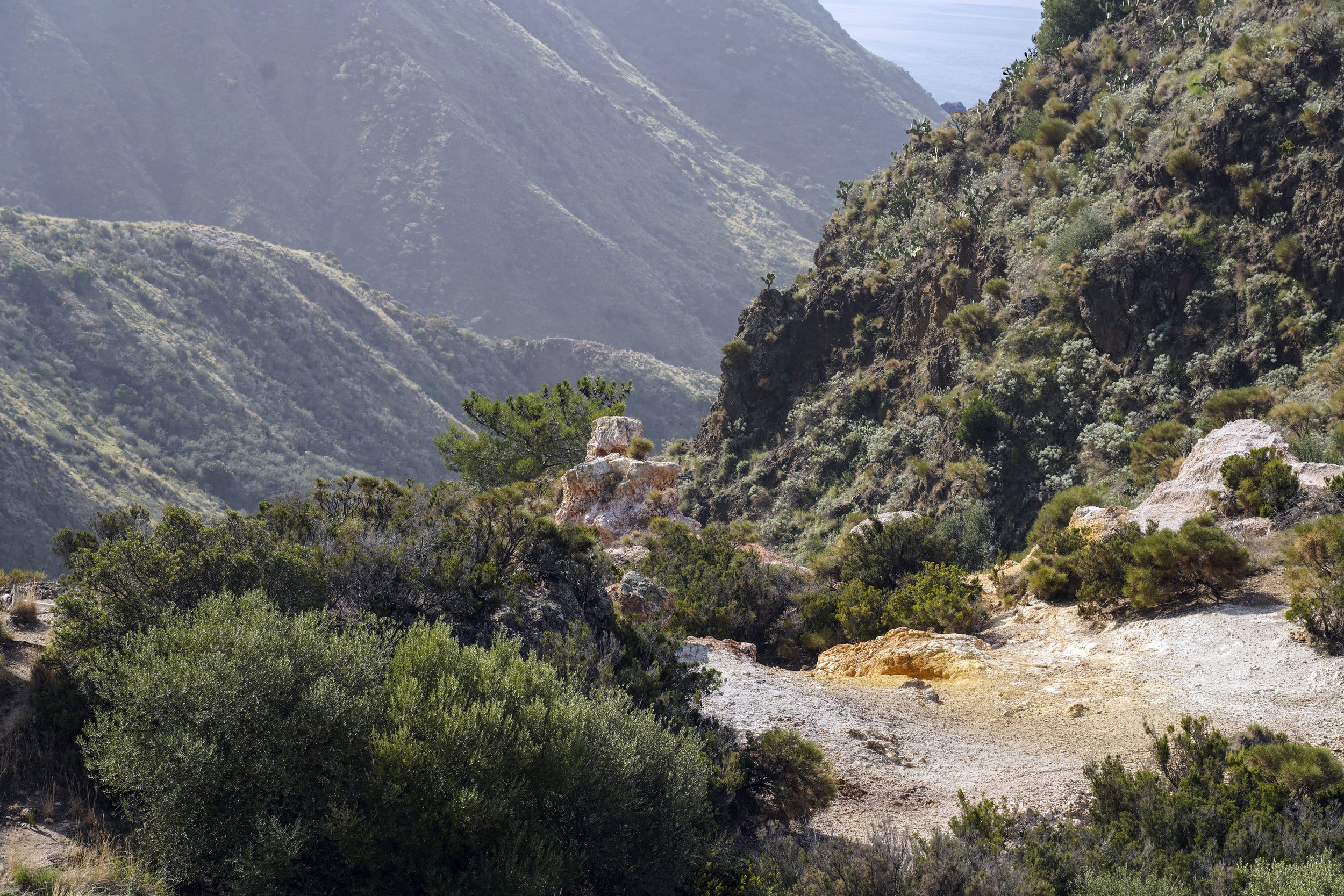
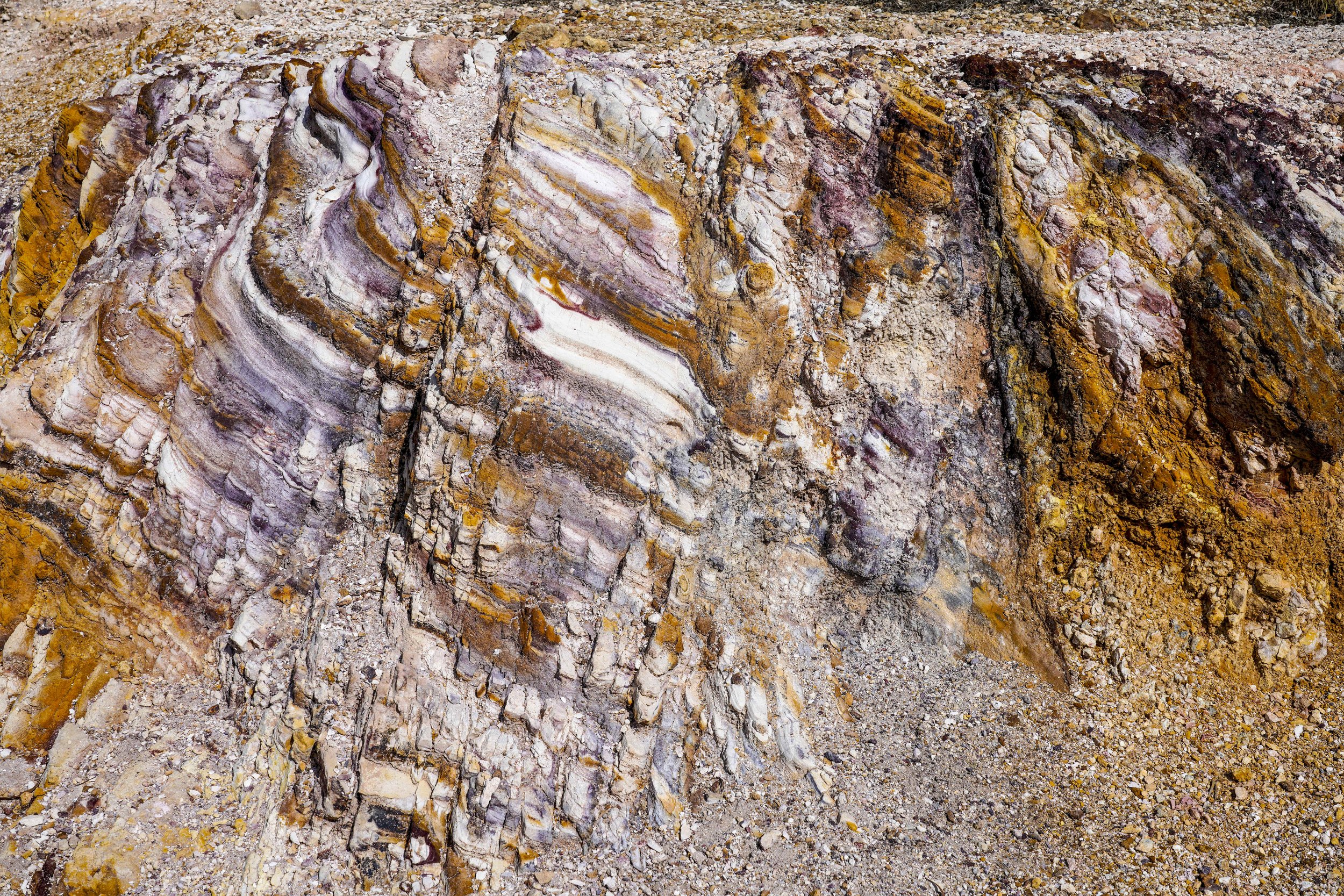
The main constituent in kaolin is hydrous aluminum silicate. Kaolin mostly forms when some events of secondary volcanism occur. Kaolin had been extracted in Lipari quarries since the Greek Age. Local artisans applied it for creating and painting pottery, among them the Painter of Lipari is worth to be mentioned (end of the 4th century – second half of the 3rd century BC).
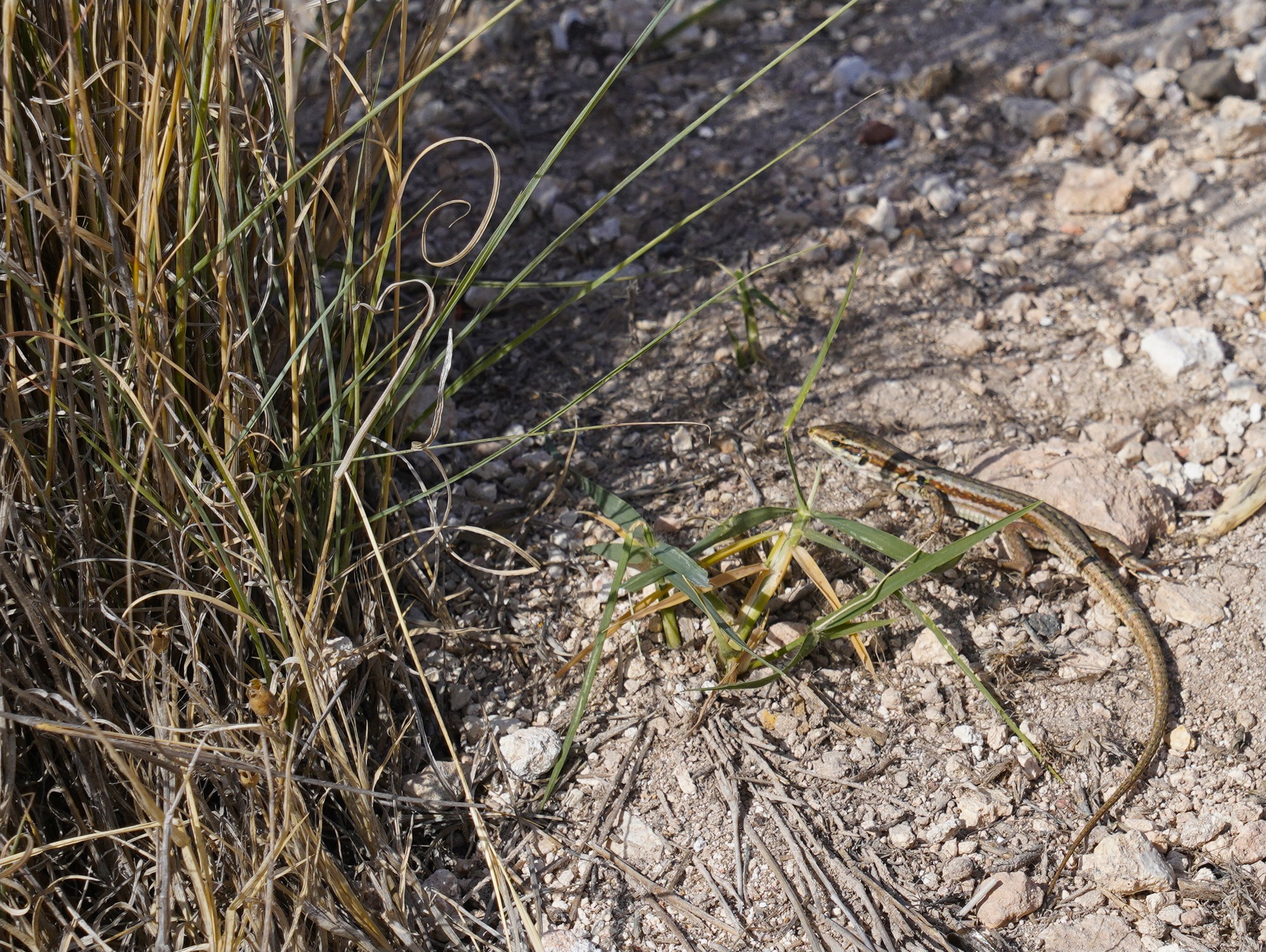
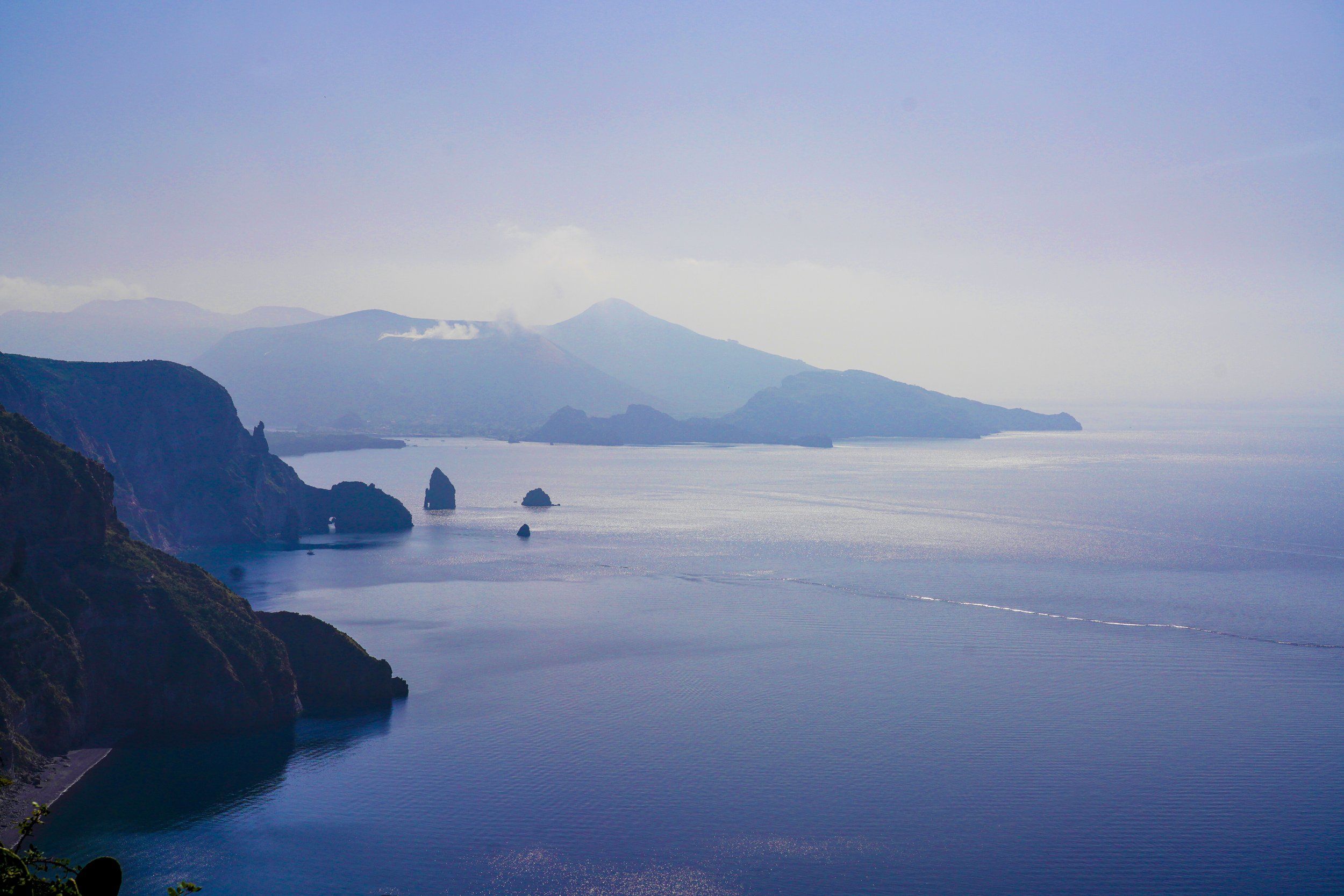
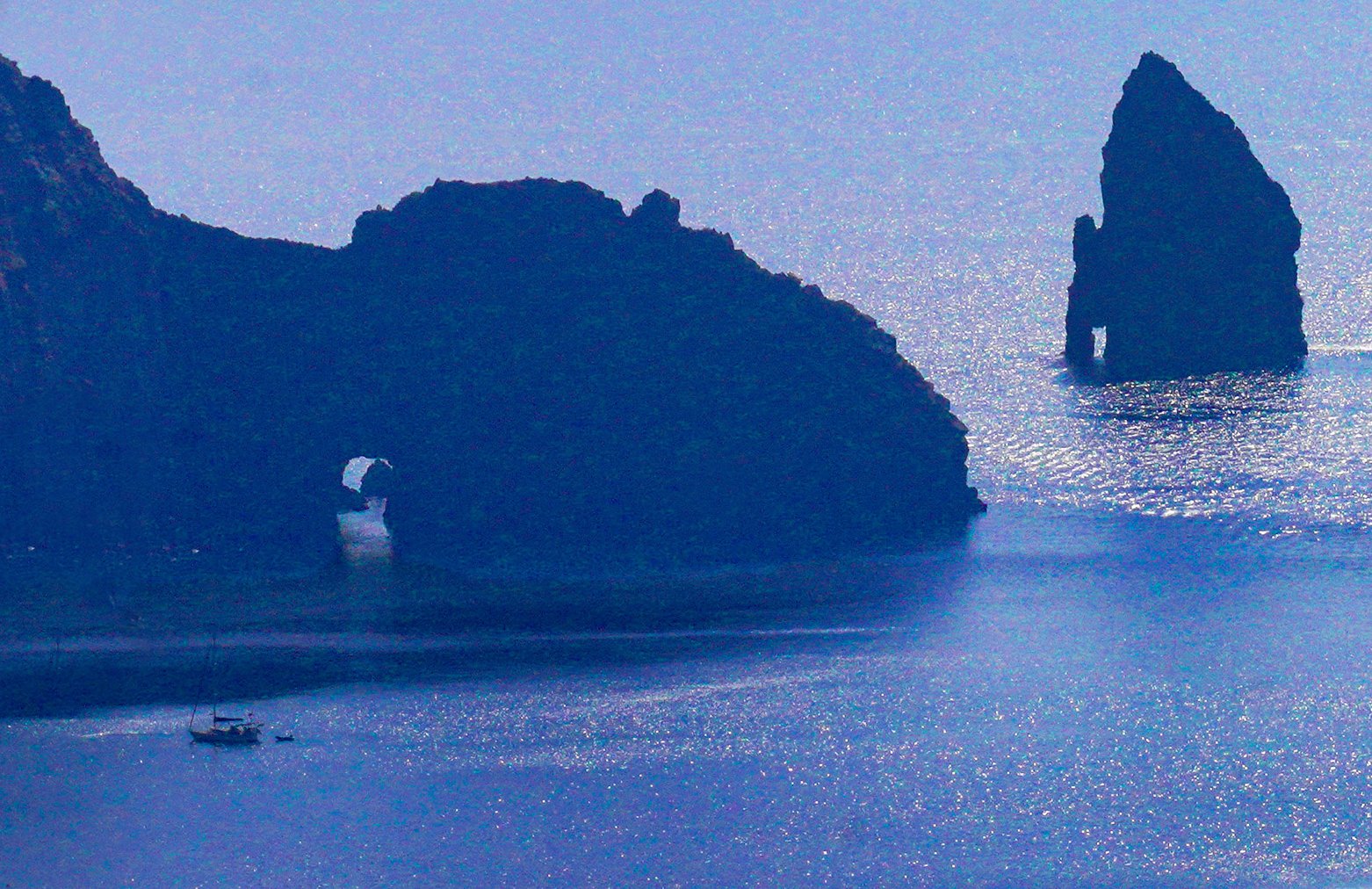
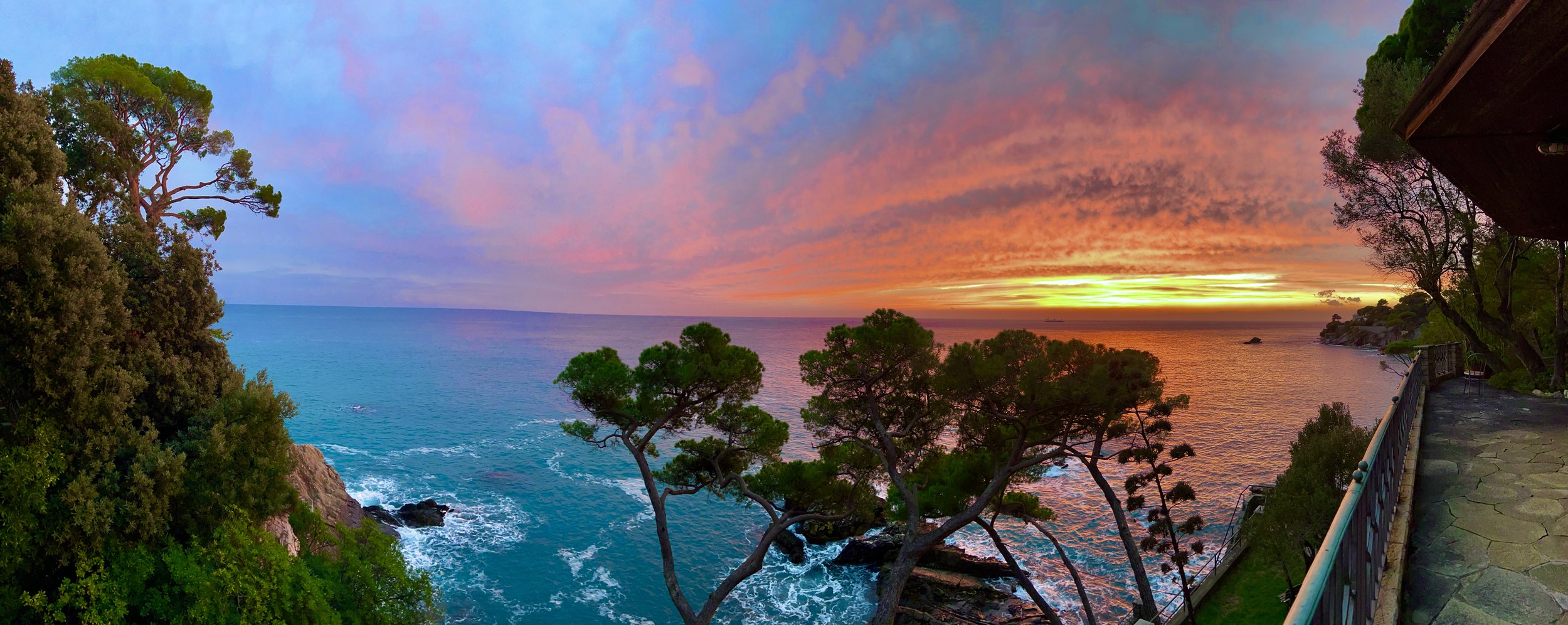
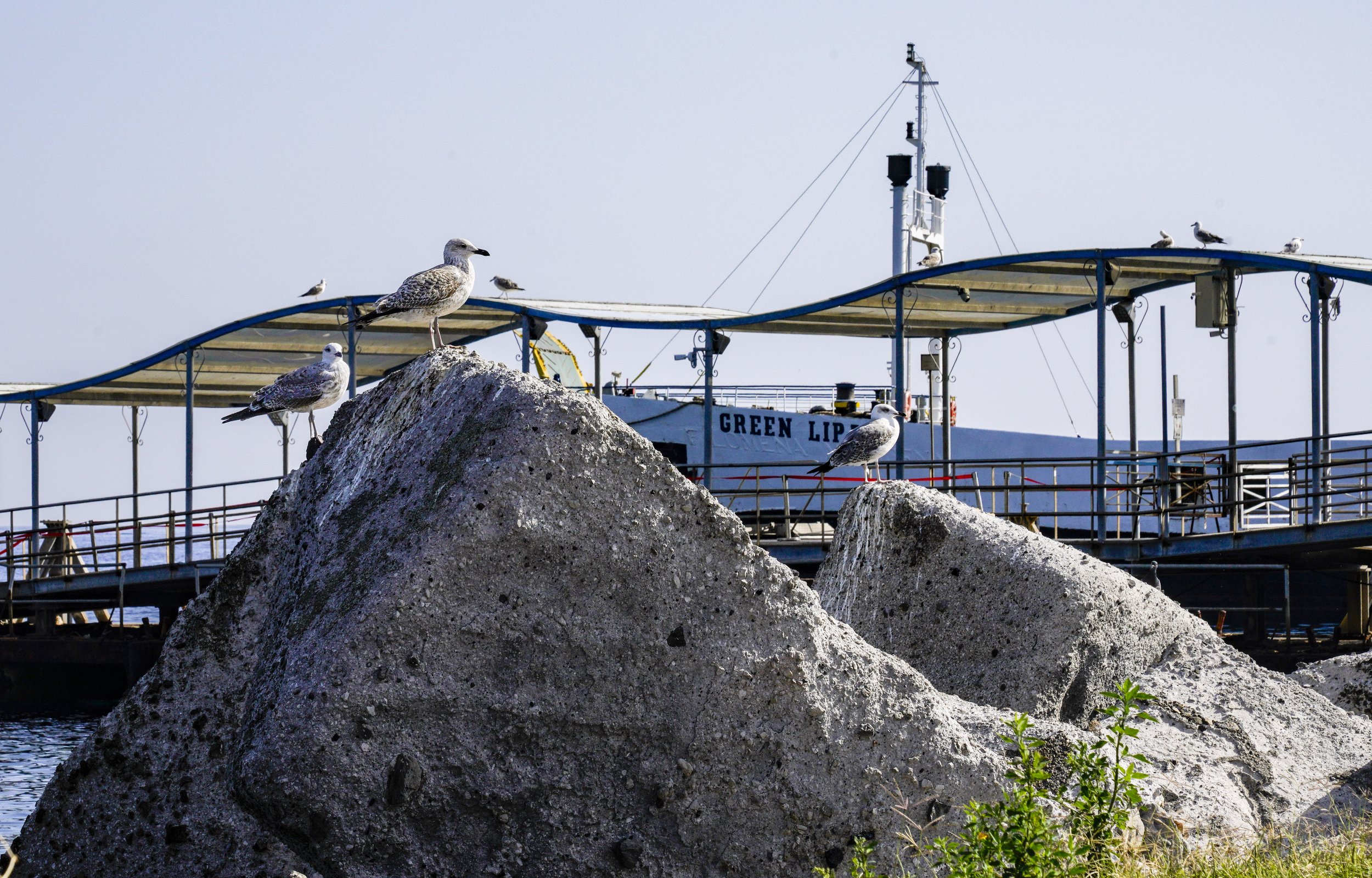
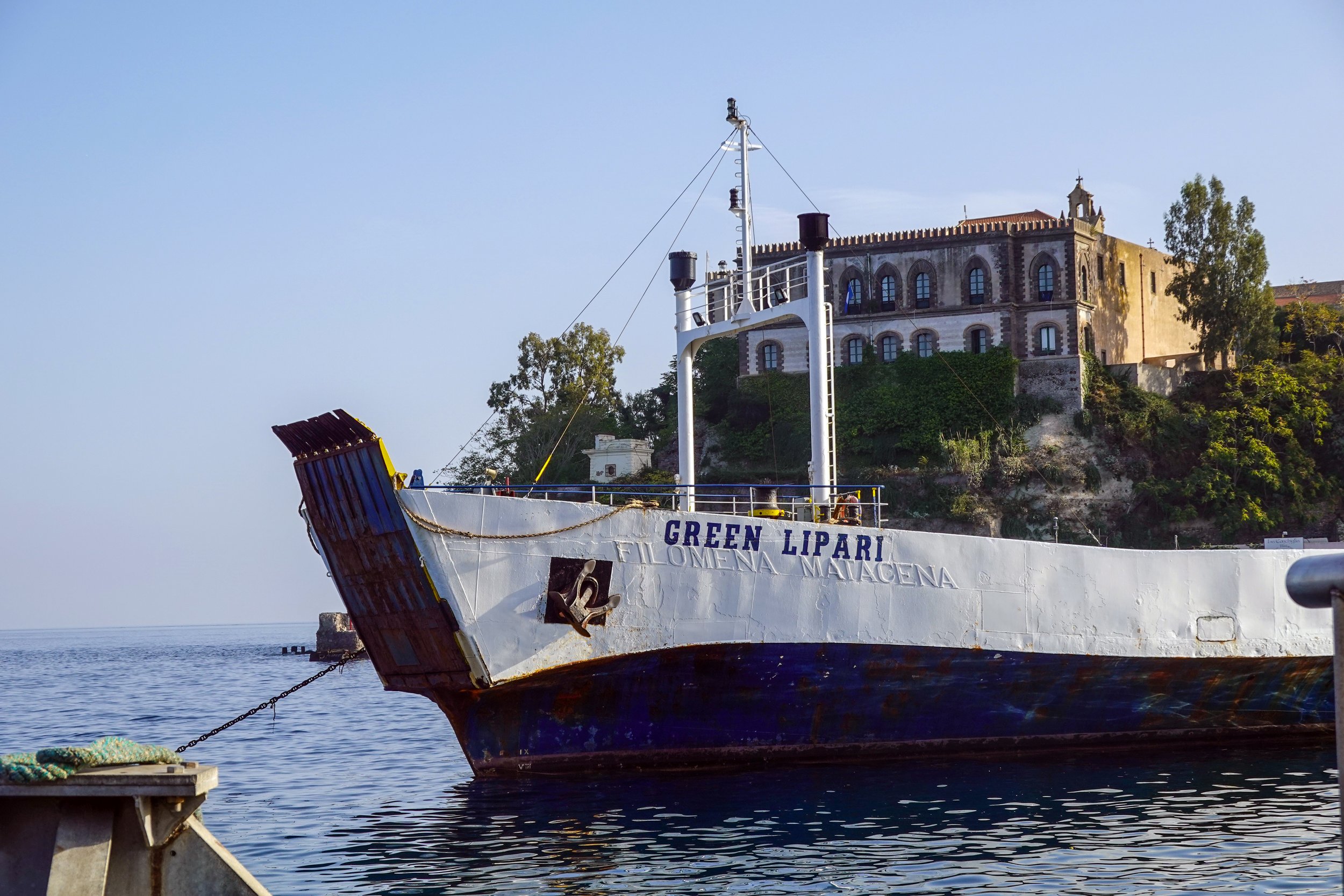

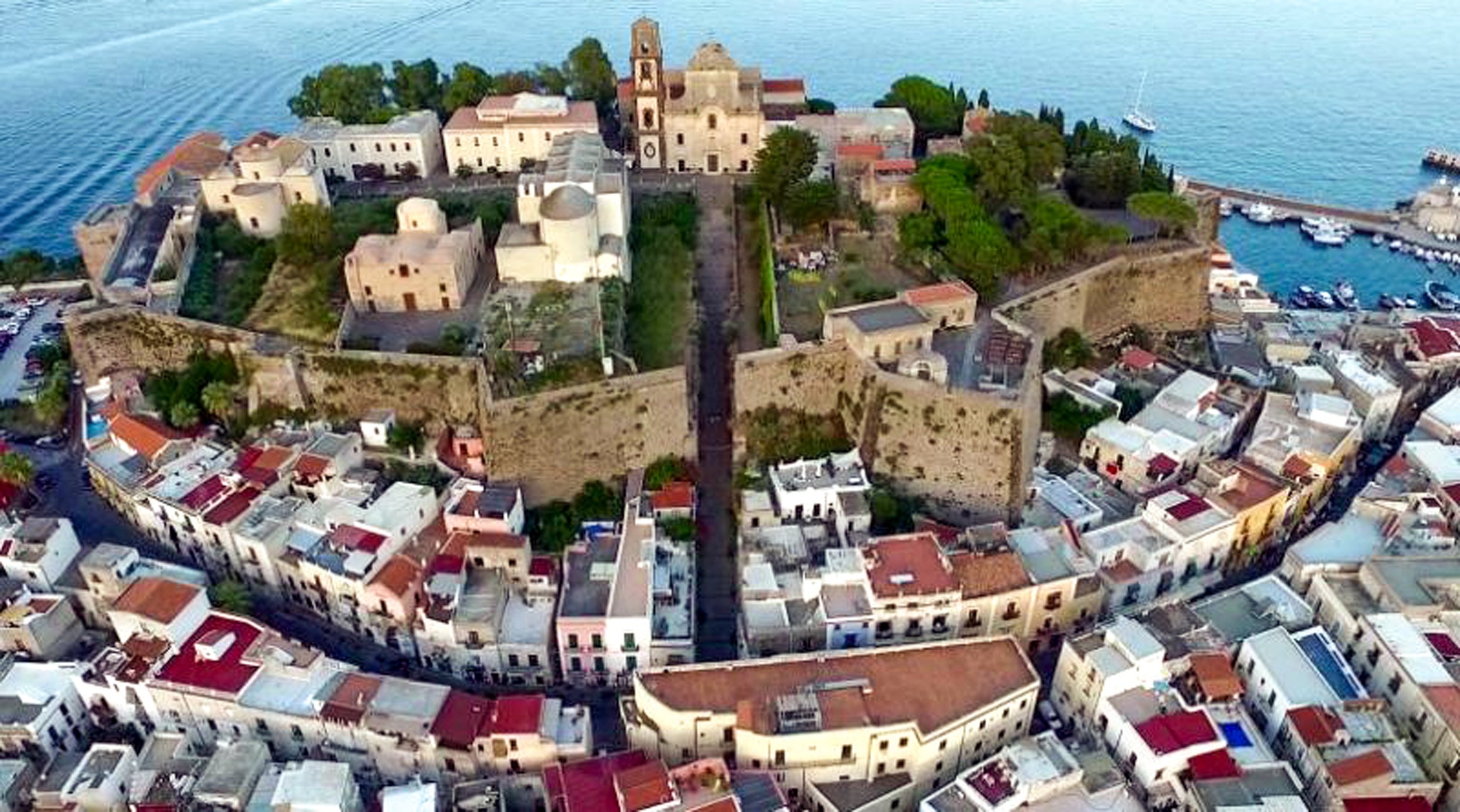
Lipari’s castle area had been populated from the Neolithic era (4000 B.C.), and every civilization which settled there left an indelible print upon the area’s architecture. The walls, built by the Spaniards in the 16th century, of the imposing fortifications are well preserved; they include previous fortifications of the 13th century with sheer defense towers and one tower, part of the Greek wall, which still has 23 rows of square blocks of the same thickness. (Above picture from: https://www.archeome.it/archaeology-the-acropolis-of-lipari-and-the-castle-overlooking-the-mediterranean/)

In 1544, a Franco-Ottoman alliance army ransacked Lipari and enslaved the entire population. A number of the citizens were ransomed in Messina and eventually returned to the islands. Charles V, Emperor of the Holy Roman Empire and King of Spain, with its possessions of the southern Italian kingdoms of Naples, Sicily and Sardinia, had his Spanish subjects repopulate the island and built the massive city walls atop the walls of the ancient Greek acropolis (high city) in 1556. The walls created a mighty fortress, part of which you can see in this photo. While these walls protected the main town, it was not safe to live on the rest of the island until Mediterranean piracy was largely eradicated in the 19th century.
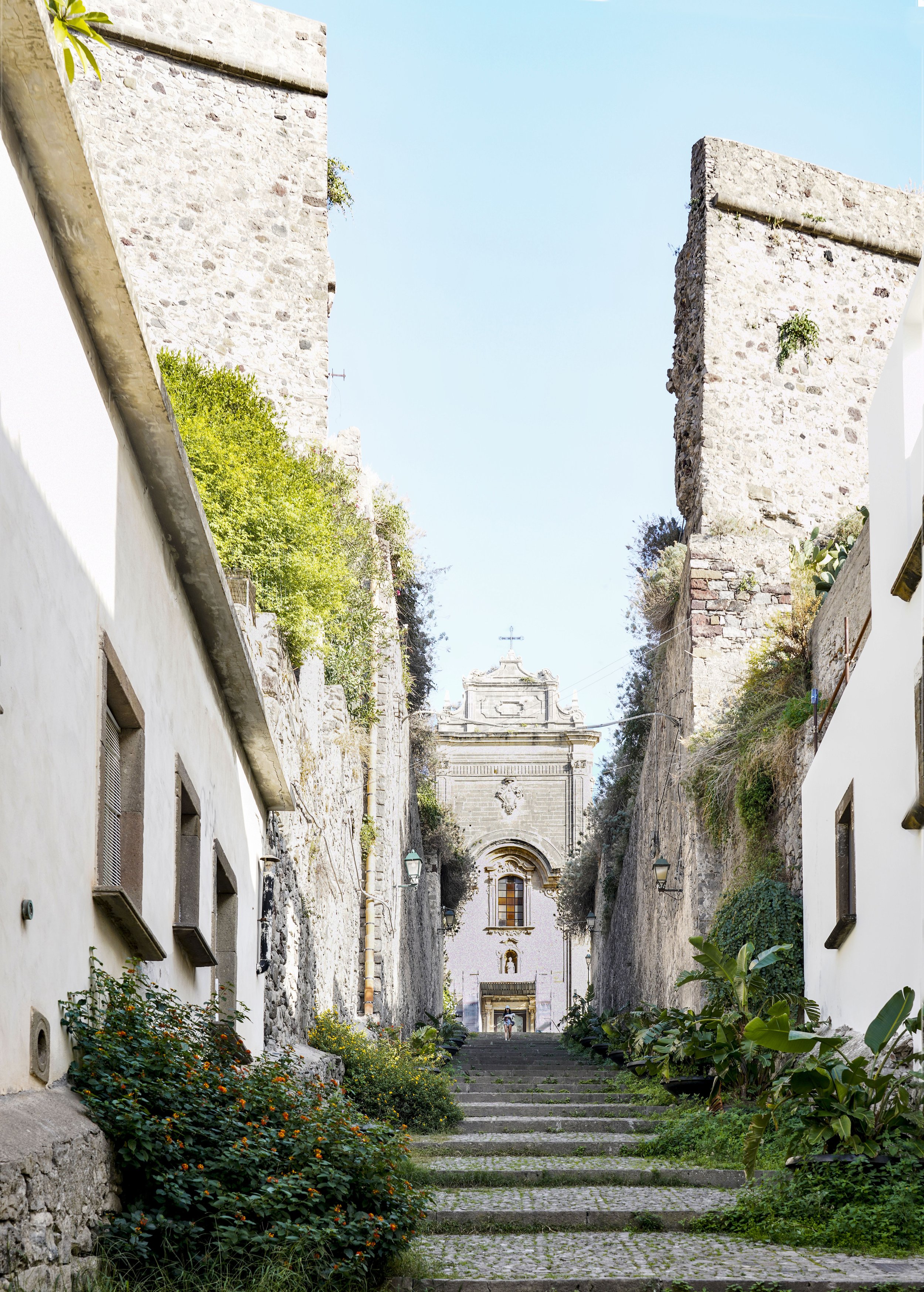
The conversion of the inhabitants of Lipari dates to the middle of the 3rd century AD, from which point a place of prayer has existed on the island. For safety reasons the cathedral was built over the foundations of a pre-existing Greek temple within the fortified upper citadel. However, the cathedral was destroyed between 836 and 837, when the archipelago was attacked by the army of al-Fadl ibn Yaqub and then by Abu'l-Aghlab Ibrahim ibn Abdallah ibn al-Aghlab. The building was rebuilt and it was expanded between 1450 and 1515, but was burnt in July 1544 after an attack by the Ottoman corsair Hayreddin Barbarossa.
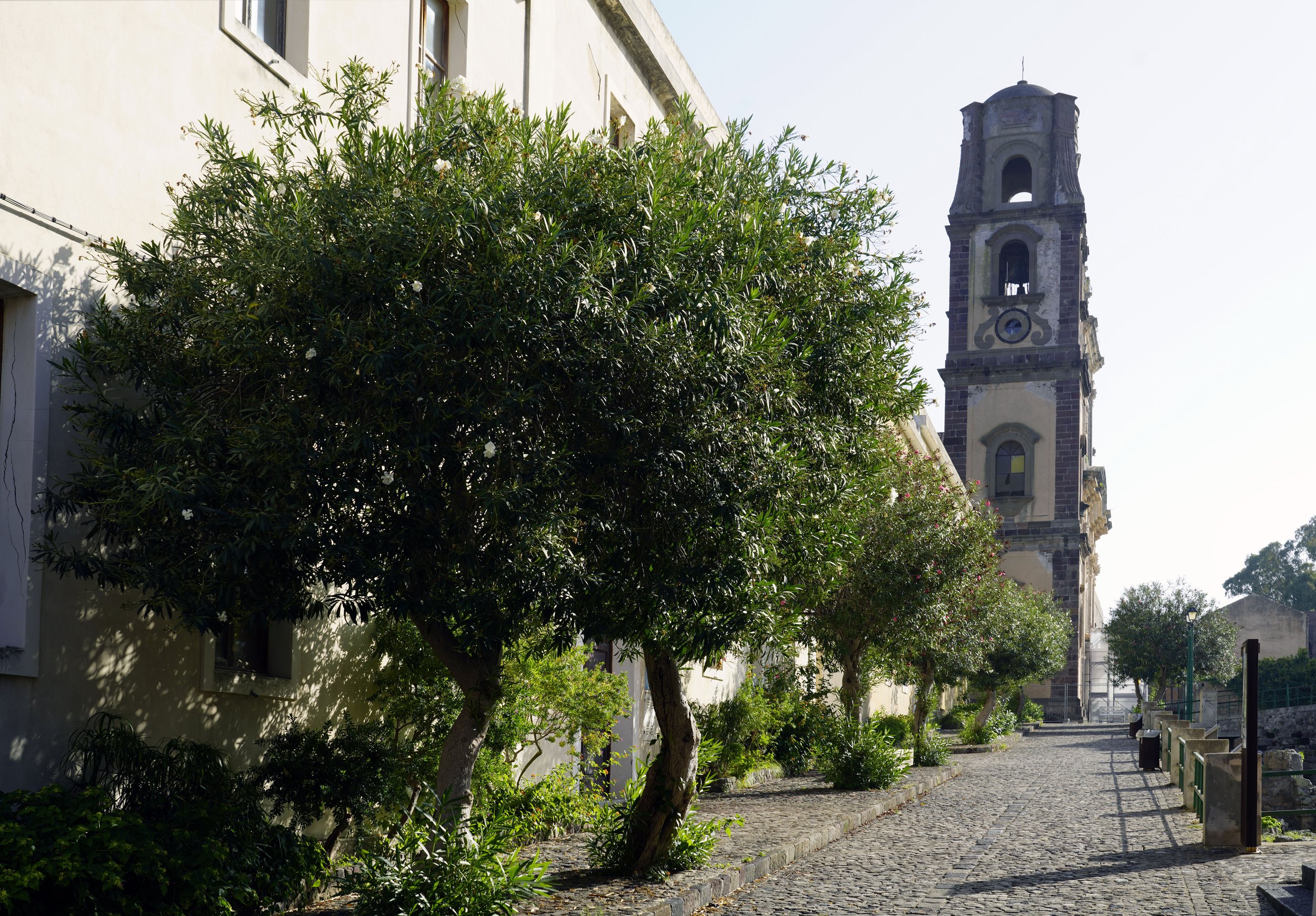
In 1516, Holy Roman Emperor Charles V led a campaign against Hayreddin Barbarossa, who retreated to Africa. After that, reconstruction work began in Lipari: the cathedral was rebuilt with barrel vaults as a living symbol of the islanders' Christian faith. The Baroque style facade of Lipari Cathedral is characterized by the contrast between the light stone of the lower order and the dark stone of the upper order. Completing the elevation is the imposing bell tower, made in the second half of the 18th century.
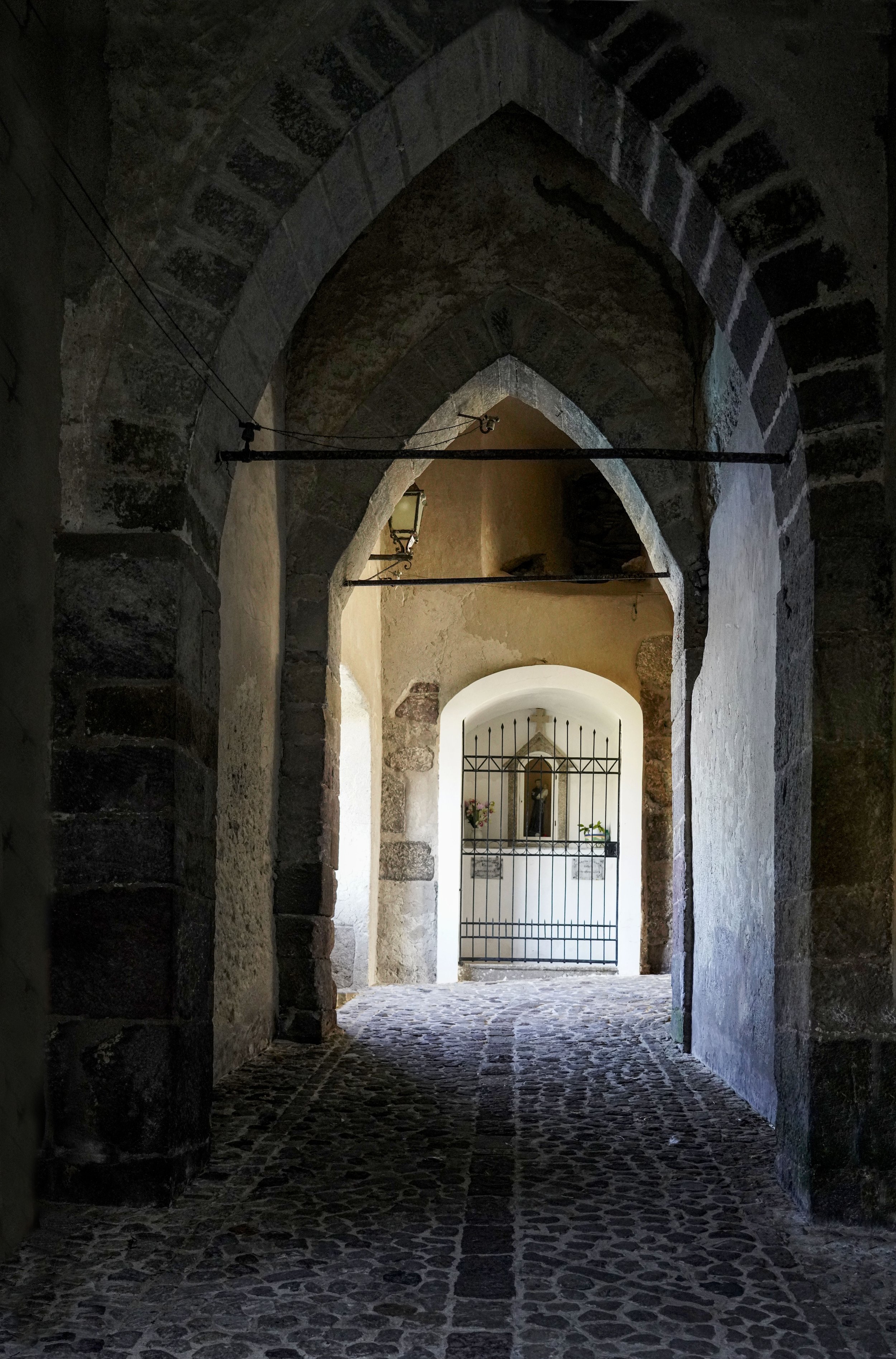
The Archeological Museum of Aeolian Region complex on Lipari is situated upon the Neolithic rock of the “Castello” of Lipari, a kind of a natural fortress, used by populations settled down on the island to defend themselves from attacks and invasions. The museum is the evidence of all the cultures and populations which have settled the territory. It contains the Bronze Era huts, some of the Greek-Roman buildings, and the urban plant of the 2nd B.C. The museum of Lipari is divided into six large areas, which are: the pre-historic section, the epigraphic section (ancient inscriptions), the classic section 8th c. BC to 5th c. AD), the section of the minor islands, the volcanologic section, and the paleontological section (prehistoric human and proto-human fossils).
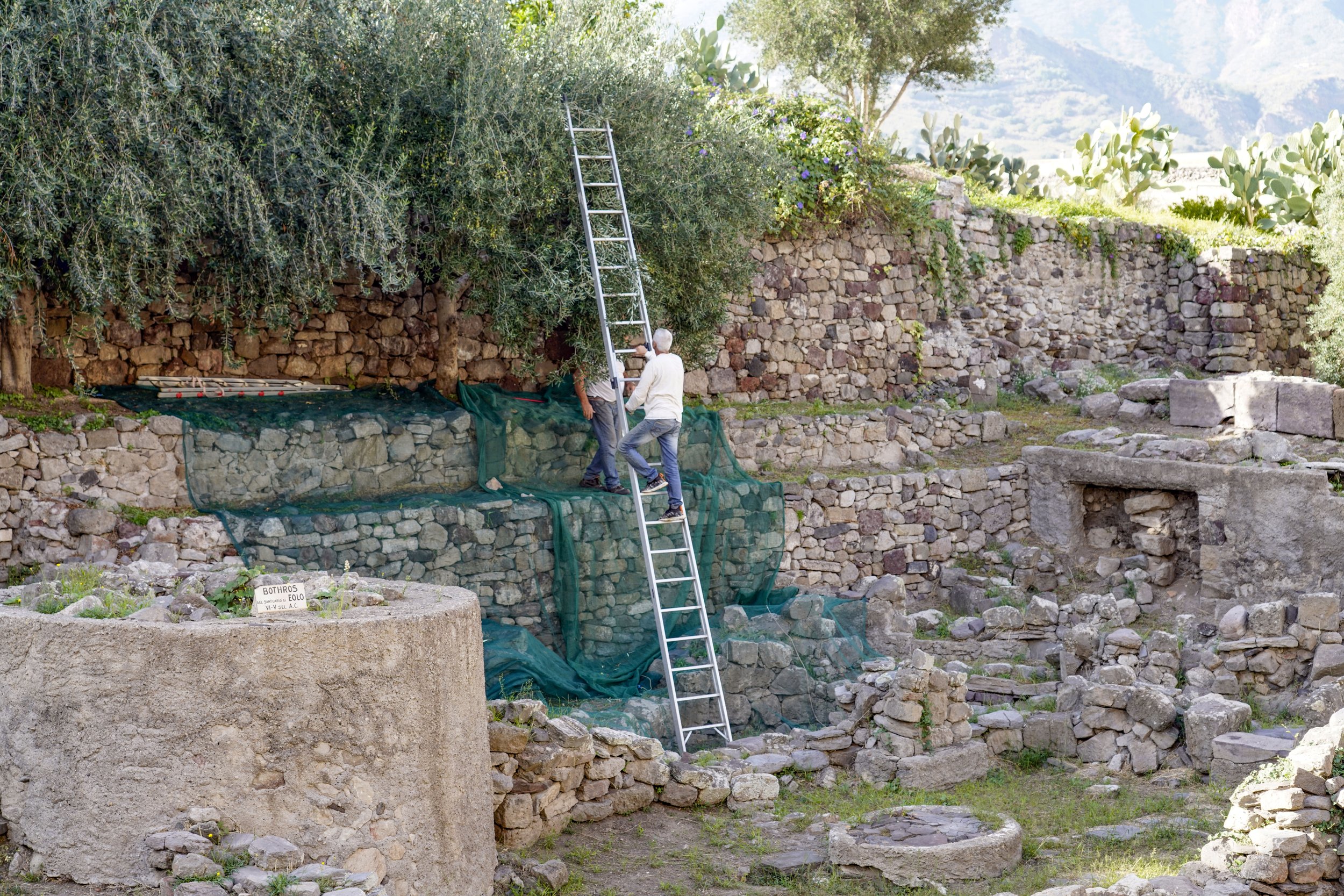
Work continues within the 16th century walls of the natural fortress of the Castle rock, a geological structure of volcanic origin, which dominates the two landing places of the island and has been continuously inhabited for six thousand years. The area of the Acropolis, called the Castle, which lies within the perimeter of the walls, is where populations of the Neolithic, those of the first half of the Iron Age, the Bronze Age and the existing remains of the Hellenic Age had their centers as is demonstrated by archeological findings.
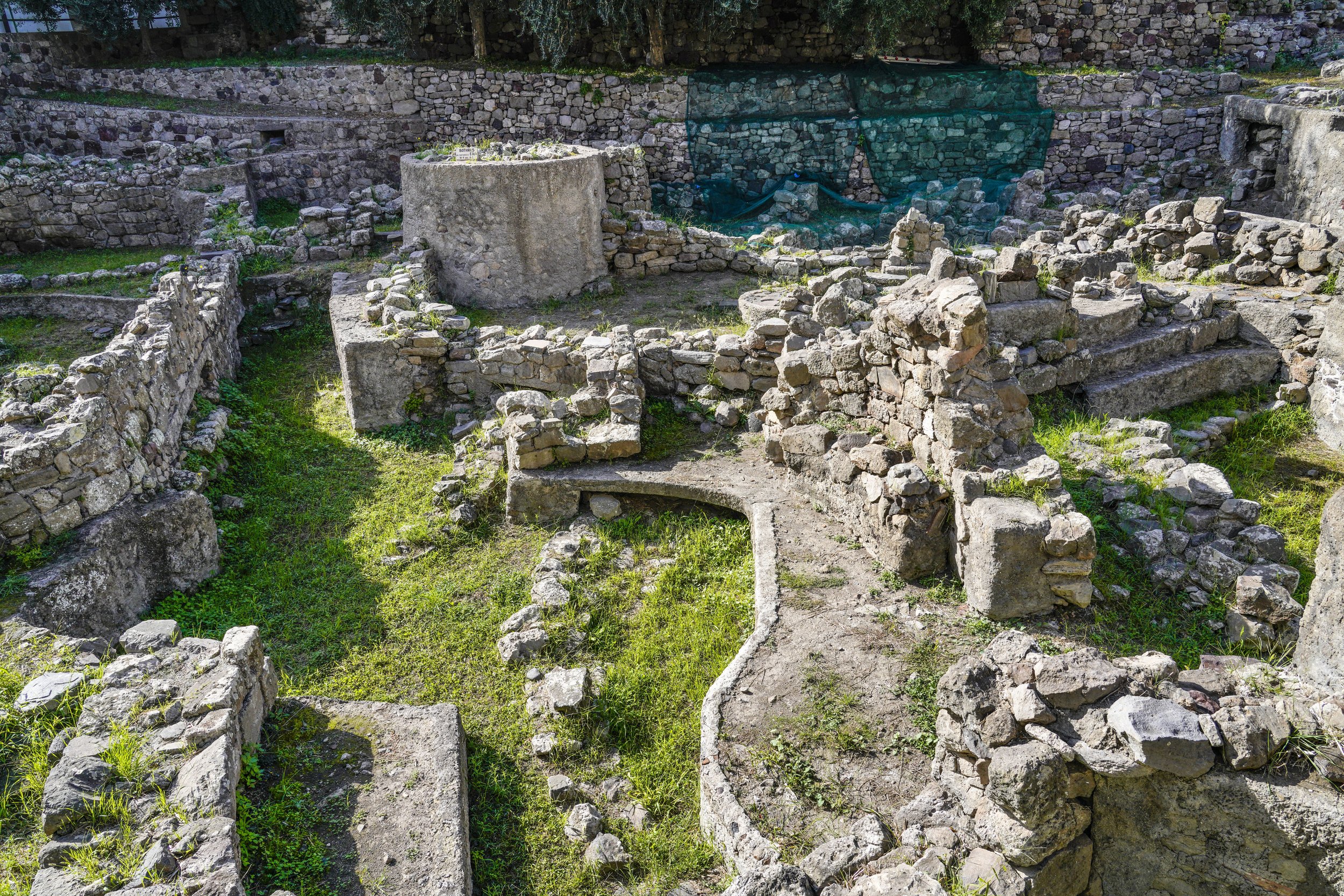
Huts in the village had an oval plan and were built using double-sided dry stone walls and polygonal blocks that had a thickness from 20 to 32 inches. There were discovered 19 huts. Each of the huts from I to Vl had an area of about 118-129 square feet. The structure Vl is the most complex because it is divided into two rooms and a minor one of rectangular shape (IV). One of the two rooms had a completely paved floor. The hut XII, is the largest of polygonal shape with seven sides and a surface of 690 square feet. Numerous fragments of Mycenaean pottery comes from this hut.

Obsidian was so rare that the obsidian flow (9,000 BC) defined Lipari as a center for tools and trading in the middle Neolithic (5,000 years B.C.). An obsidian rock quarry, dated to 4,000 years B.C., was discovered when they recently put in a local road. Pottery (in this Archaeological Museum) shows evidence of almost continuous occupation in Lipari since that time. There is also evidence that the people here trading throughout the Mediterranean and northern Africa. Basically, this area has attracted human settlers and traders since humans were able to navigate the Mediterranean.
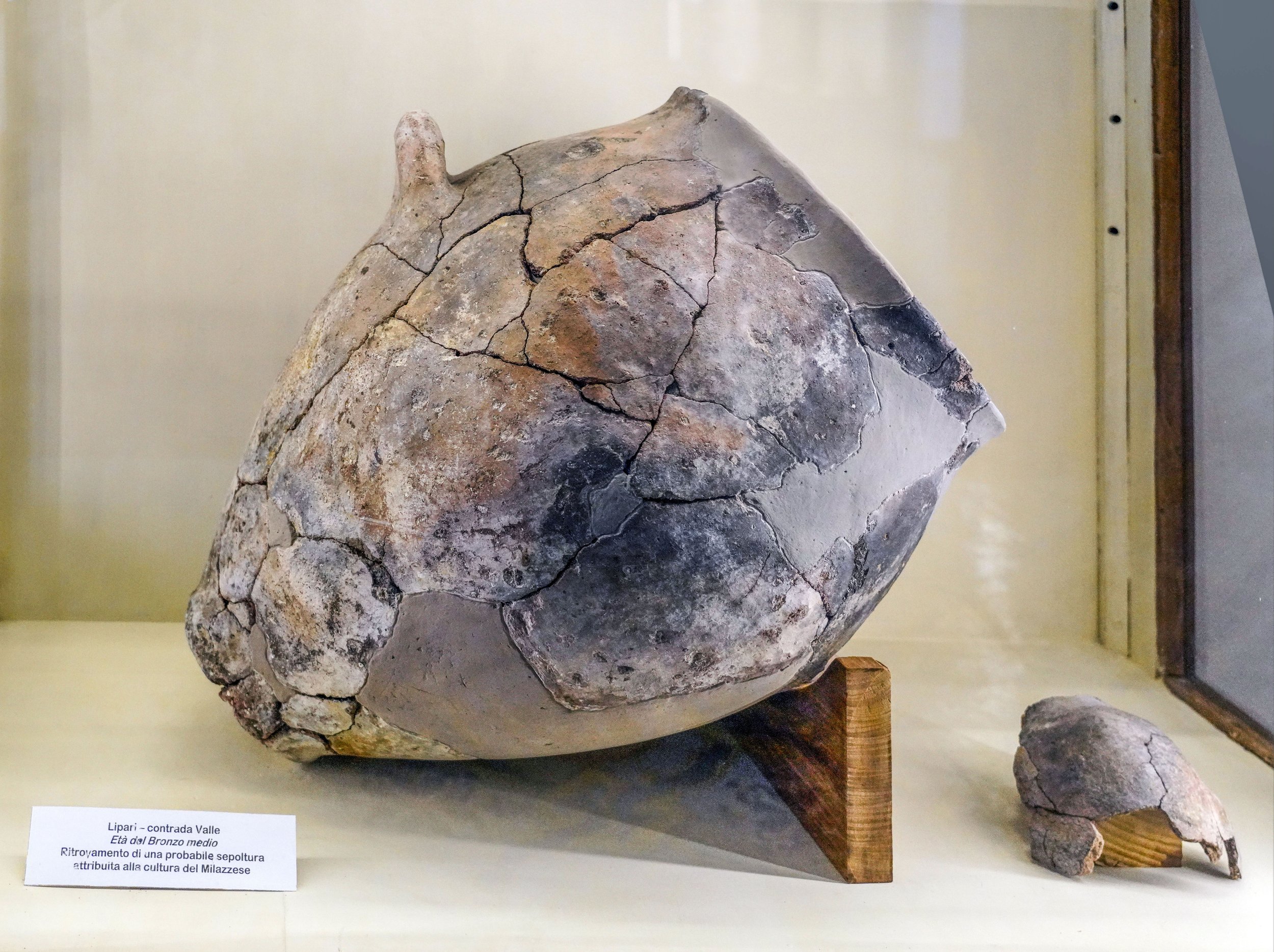
After 1500 BC the Sicilian culture of Thapsos (near Syracuse) established itself. On the Aeolian islands it developed an exclusive aspect called “Milazzese”, from the settlement discovered in Panarea on the Milazzese peninsula (northeast Sicily). The funerary rite, known in Milazzo, follows a tradition diffused in eastern Sicily. They used to bury their dead in a crouched position inside large jars (pithoi) resting on a pile of stones, closed with a stone slab or ceramic pan, and buried.
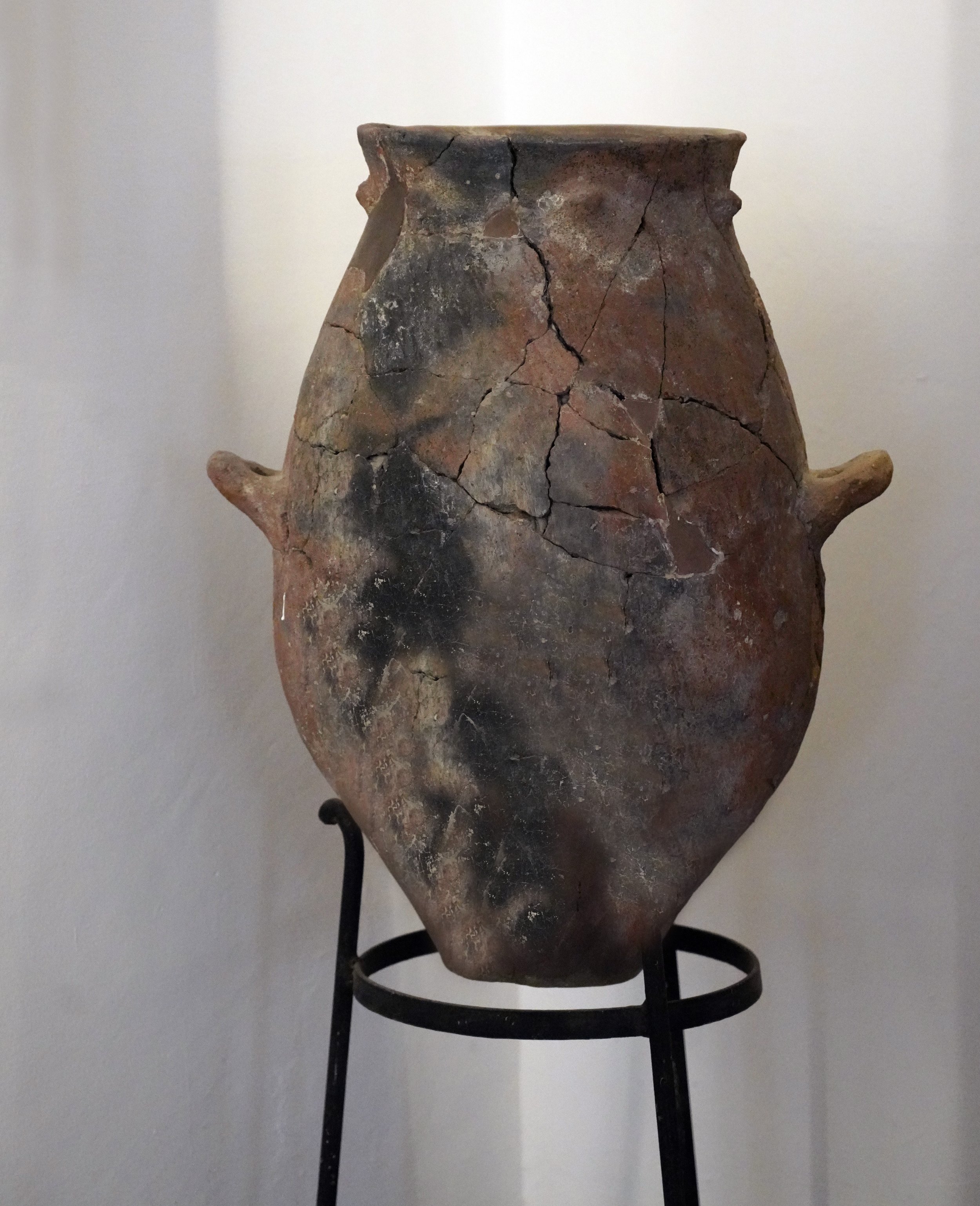
Pithoi were widely used in the ancient Mediterranean and Near East regions, mainly for the storage and transportation of goods. These storage containers were typically found half-buried in the floors of pantries and warehouses, where olive oil, water, honey, salt, and cereals were kept. However, pithoi were also used as coffins in which huddled skeletons were placed. Such burials were called enchytrismos burials.
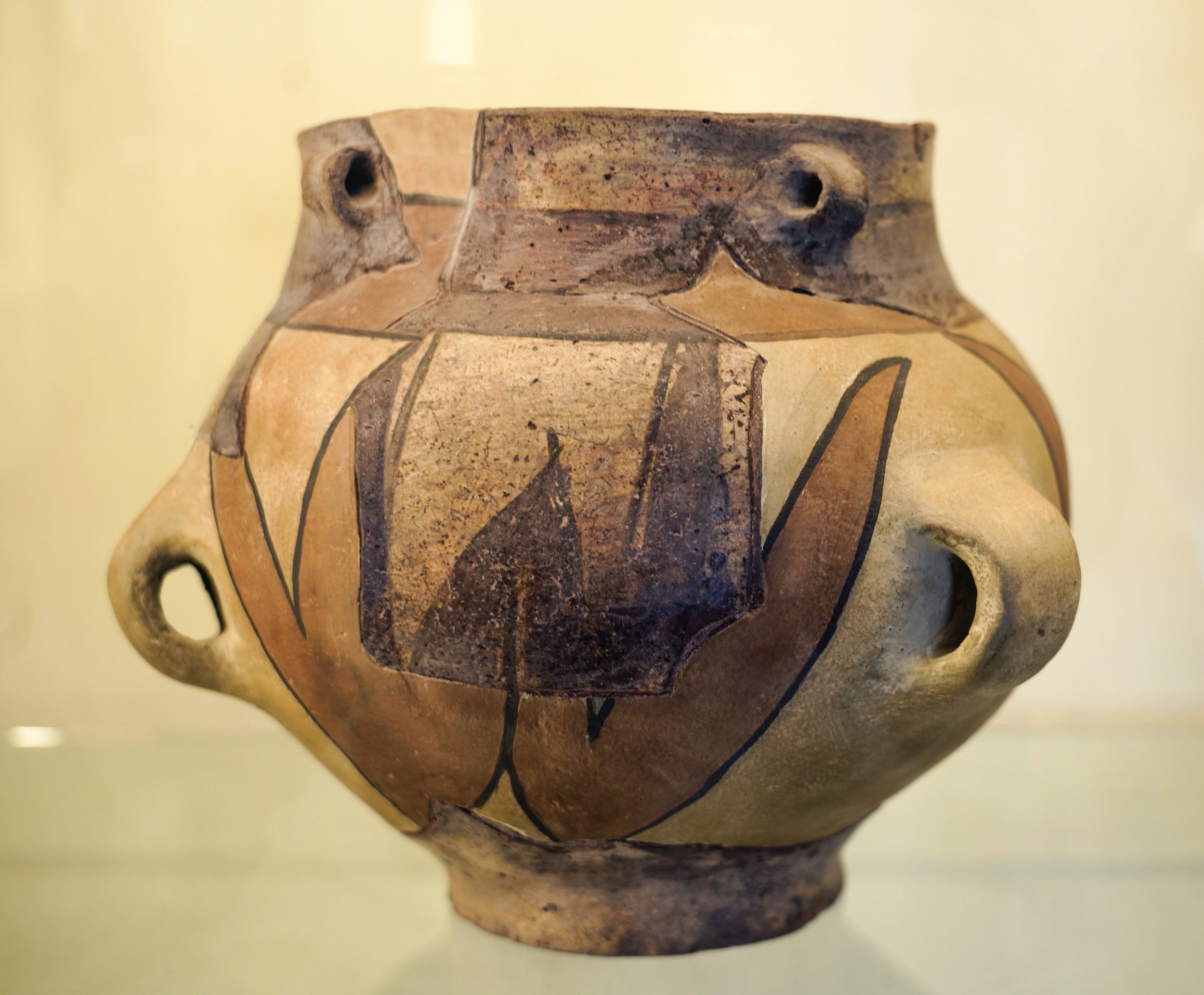
Trichromic pottery is characterized by three colors: the yellow surface of the clay, the red color of the painted bands and the black of the lines around the bands. This pottery made of a depurated impasto was imported but also manufactured in Lepari with non-local clay, which came as trade goods for obsidian.
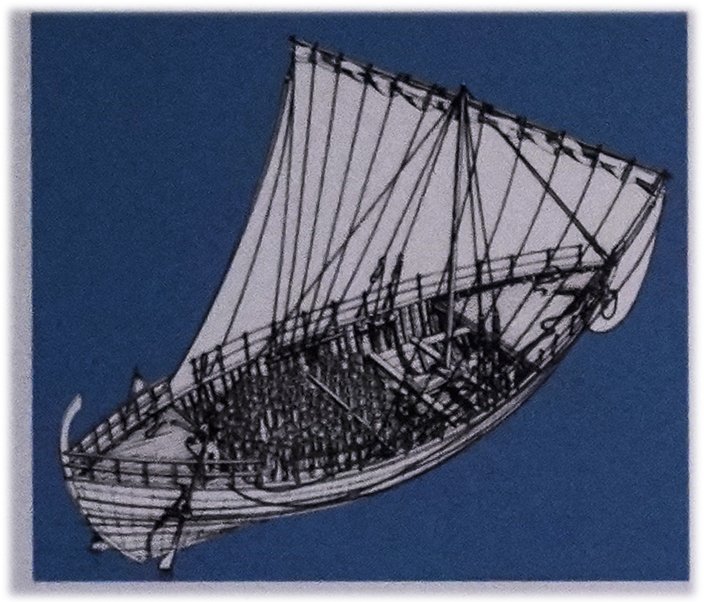
The navigation on the Mediterranean has never been easy. The sea surrounding the Aeolian Islands preserves shipwrecks with the entire cargo of goods and objects on board. The Mycenaean ship had a sharp bow, curved stern. a central mast with a square sail. This model lasted until the Roman age (625 BC to 476 AD). Ships sailed only in certain periods, preferably from April to October, to take advantage of the coastal winds and breezes. Transporting every kind of goods, from agricultural products to construction materials, across the sea was much faster and less expensive than by land. Sailing routes and the construction of ports reached the technological peak in Roman times.

An amphora is a type of container with a pointed bottom and characteristic shape and size which fit tightly (and therefore safely) against each other in storage rooms and packages, tied together with rope and delivered by land or sea. The size and shape have been determined from at least as early as the Neolithic Period. Amphorae were used in vast numbers for the transport and storage of various products, both liquid and dry, but mostly for wine.

In the holds, the amphorae were placed in parallel rows on top of each other, using the spaces between handle and handle in the row below by placing the tips of the row above. The amphorae of the bottom row had the tips inserted in the sand to maintain the stability of the load. In this way it was possible the compaction of the load using all the possible space. Depending on the size, the ship could have up to 4 or 5 levels of amphorae, which amounts to more than thousand containers. To prevent the amphorae were broken by the rolling of the ship, the interstices between one and the other were filled with straw and twigs to make the ship's cargo solid.

Between 1550 BC and 300 BC, the Phoenicians developed a maritime trading culture that expanded their influence from the Levant to North Africa, the Greek Isles, Sicily, and the Iberian Peninsula. Through contact and trade, they spread not only their alphabet but also their knowledge of viticulture (cultivation and harvesting of grapes) and winemaking, including the propagation of several ancestral varieties of the Vitis vinifera species of wine grapes. In Portugal, however, the Phoenicians were known to trade amphorae of wine for local silver and tin.

Italian Dressel 1B amphoraa was made with a thick, near vertical collar-rim, a long heavy cylindrical body, long oval-shaped rod-like handles and a solid spike. Key : 1: rim; 2: neck; 3: handle; 4: shoulder; 5: belly or body; 6: foot

Since prehistoric times the amphorae, with different shapes over time, were transport containers. The shape of the Greek and Roman amphorae corresponds to specific practical needs such as stowage on ships trading. They have a strong edge made to withstand Impacts, strong handles and the lower tip that served as the grip for tipping and emptying the container and it also guaranteed a good stowage into boats. Also, the bases probably were held by some sort of rack, and ropes passed through their handles to prevent shifting or toppling during rough seas.

Cinerary urns were used for placing the cremated bones of the dead. The life expectancy of the Early Bronze Age and its contemporaries was around 35-40 years. People died at a very young age. Infant and child mortality was very high. The limited food resources and infectious diseases were factors.
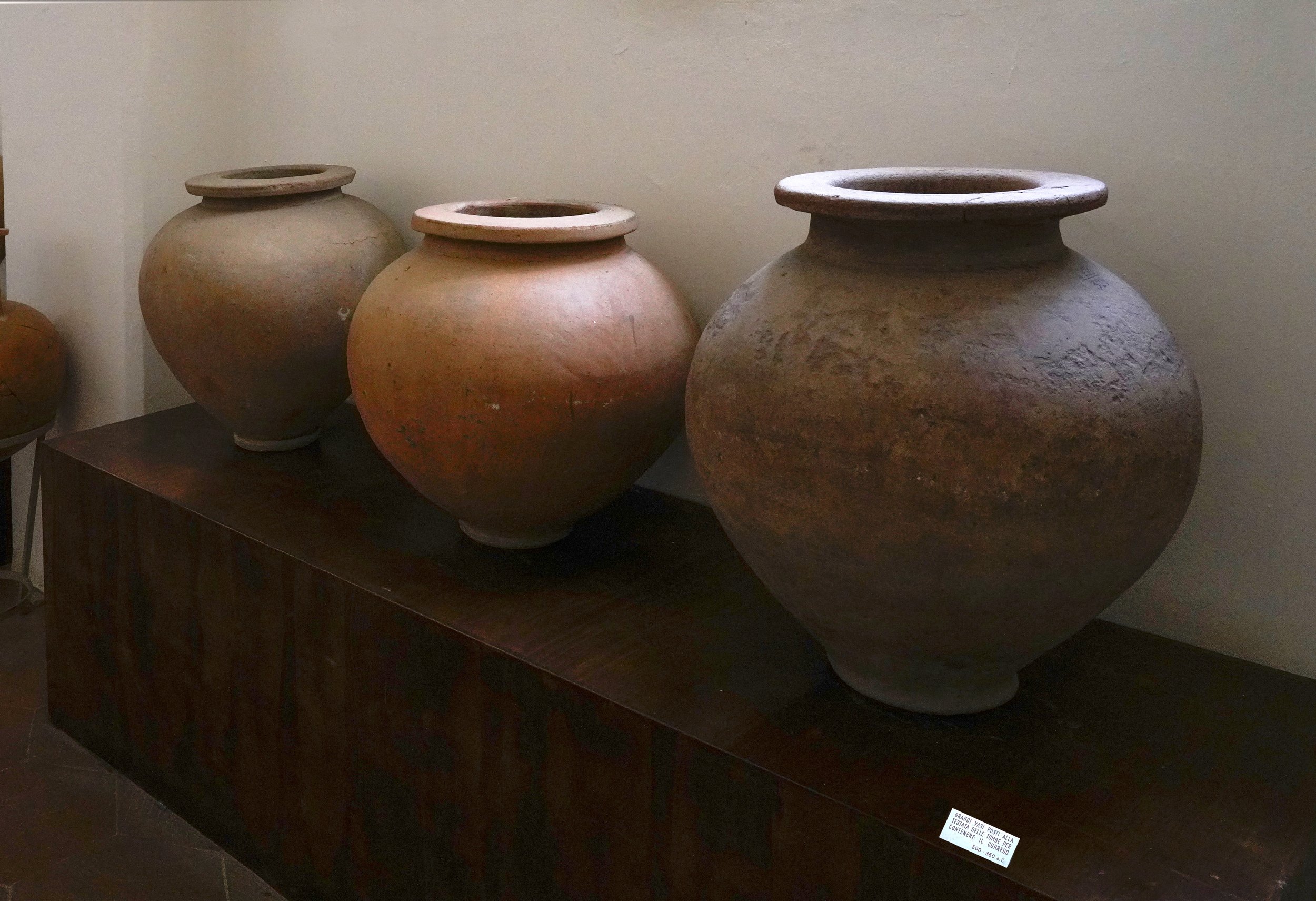
Grave goods are usually personal possessions, supplies to smooth the deceased's journey into an afterlife, or offerings to gods. Most grave goods recovered by archaeologists consist of inorganic objects such as pottery and stone and metal tools, but organic objects that have since decayed were also placed in ancient tombs. If grave goods were to be useful to the deceased in the afterlife, then favorite foods or everyday objects were supplied.
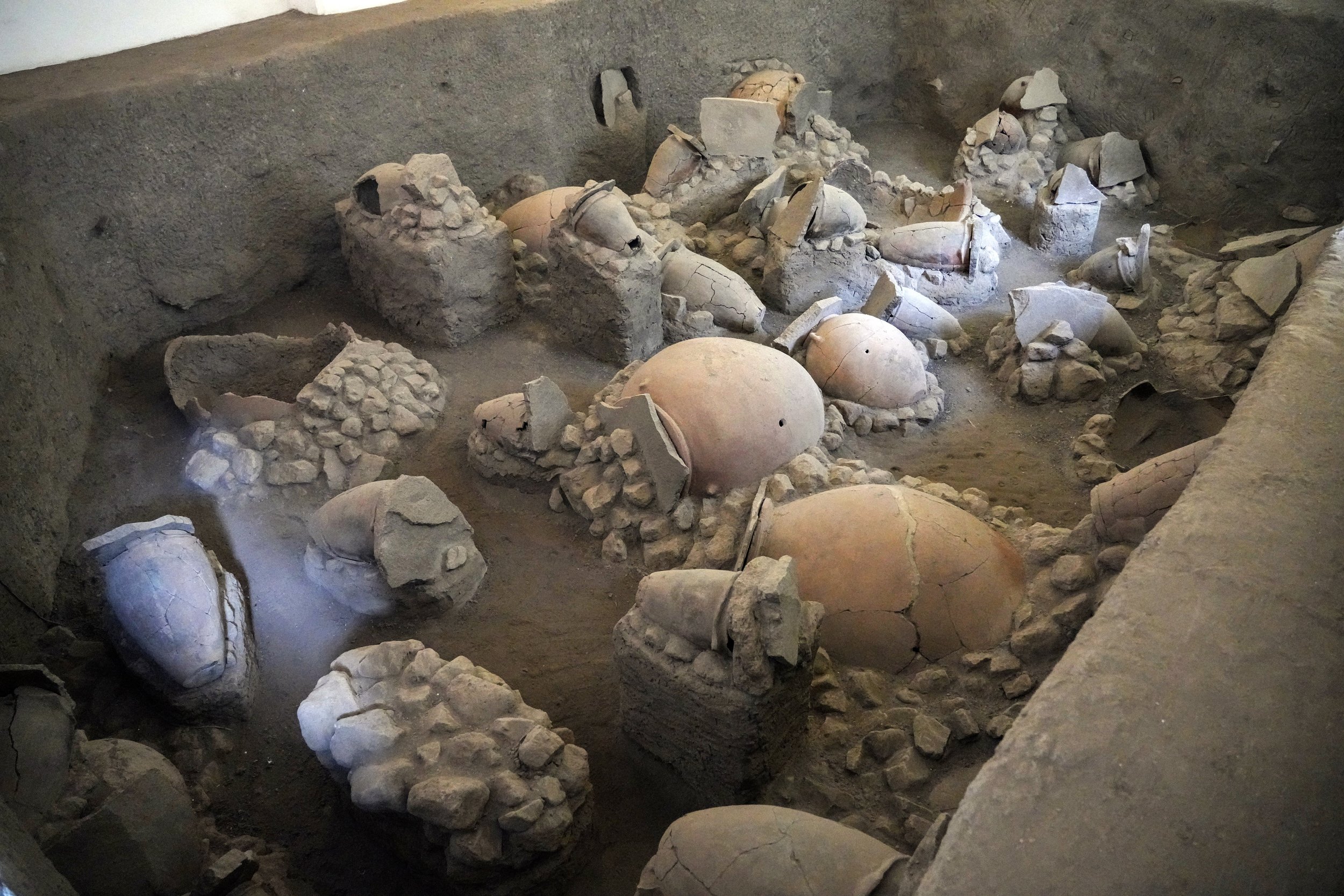
Two different burial rites have been identified: inhumation (practice of burying the dead) inside jar and cremation graves within situla (vessels shaped like a bucket). In the latter, ashes of the deceased were collected in the urn that then was deposited in a little pit covered with dry stones. The majority of late Bronze Age cremations that have been found across Europe were performed in the “urnfield tradition”, where cremated remains were kept in urns along with other goods and offerings, which were then buried in fields.
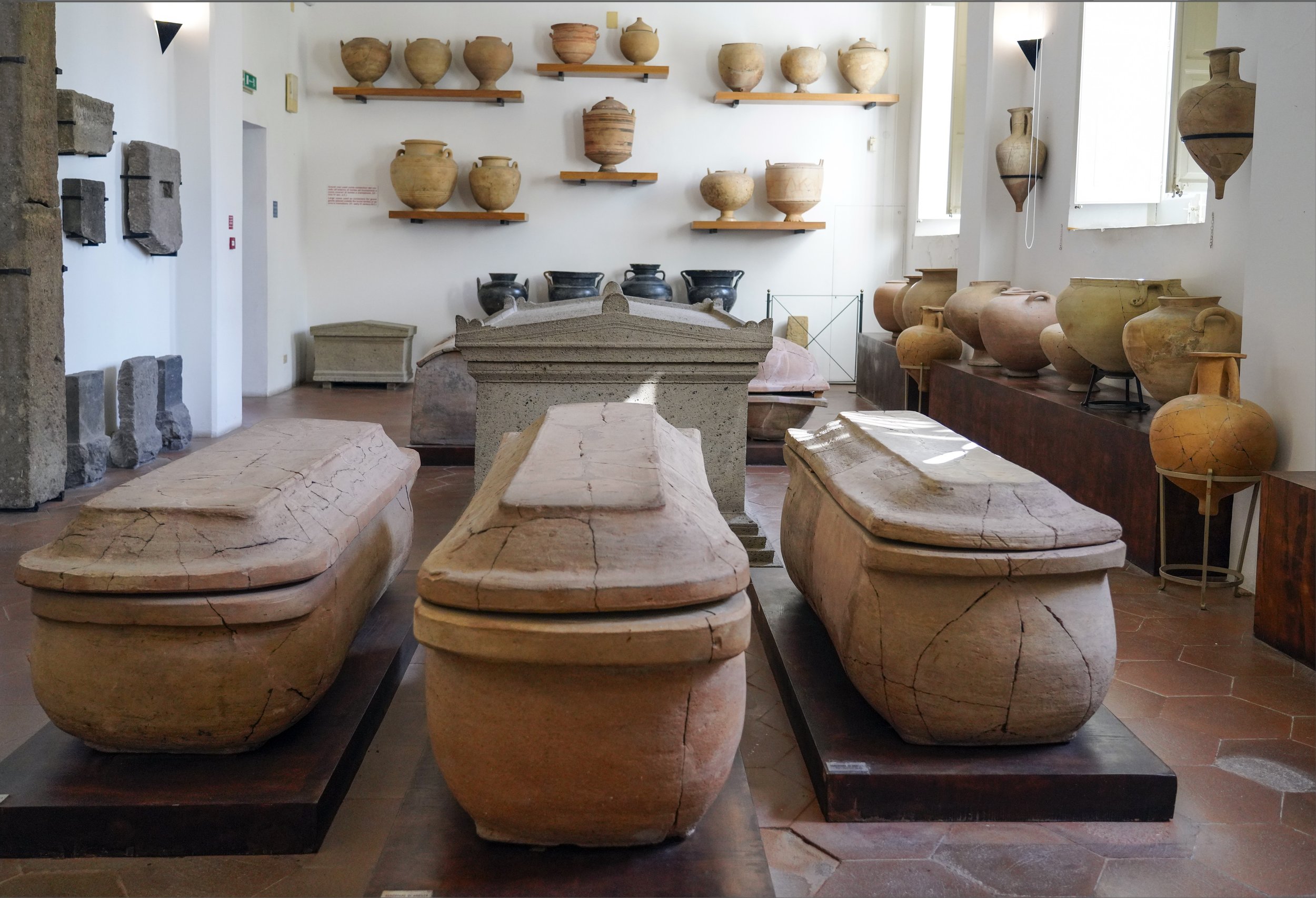
The oldest sarcophagi were made from clay in the shape of a tub or trunk together with another kind that was made in stone using blocks by Monte Rosa in the Pennine Alps (6th – 5th century BC). These blocks were only roughly fashioned on the outside. Moore than 500 examples have been found. From the end of the 5th century to the mid-3rd century BC these stone sarcophagi were made of four monolithic slabs well worked and smooth, with moulded frames and with gabled covers. Another kind was made of clay bricks and covered by tIles. The large grey stone sarcophagus differs from the others.
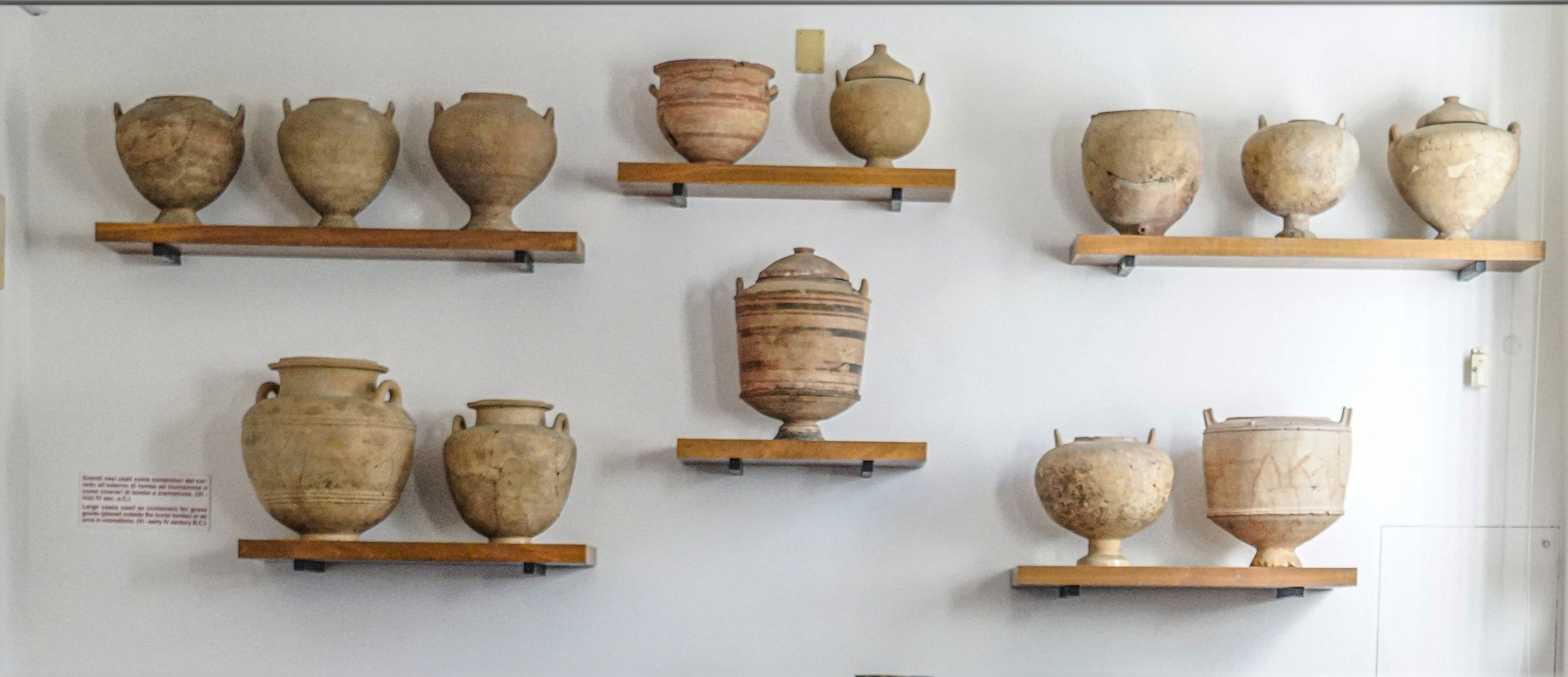
Wealthier graves may have included earrings, necklaces, and exotic foreign materials such as amber. Common binary societies had women perform duties such as mothering, processing activities, cooking, etc. and men perform duties such as hunting and fighting. For example, these societies would bury their women with jewelry and their men with axes.
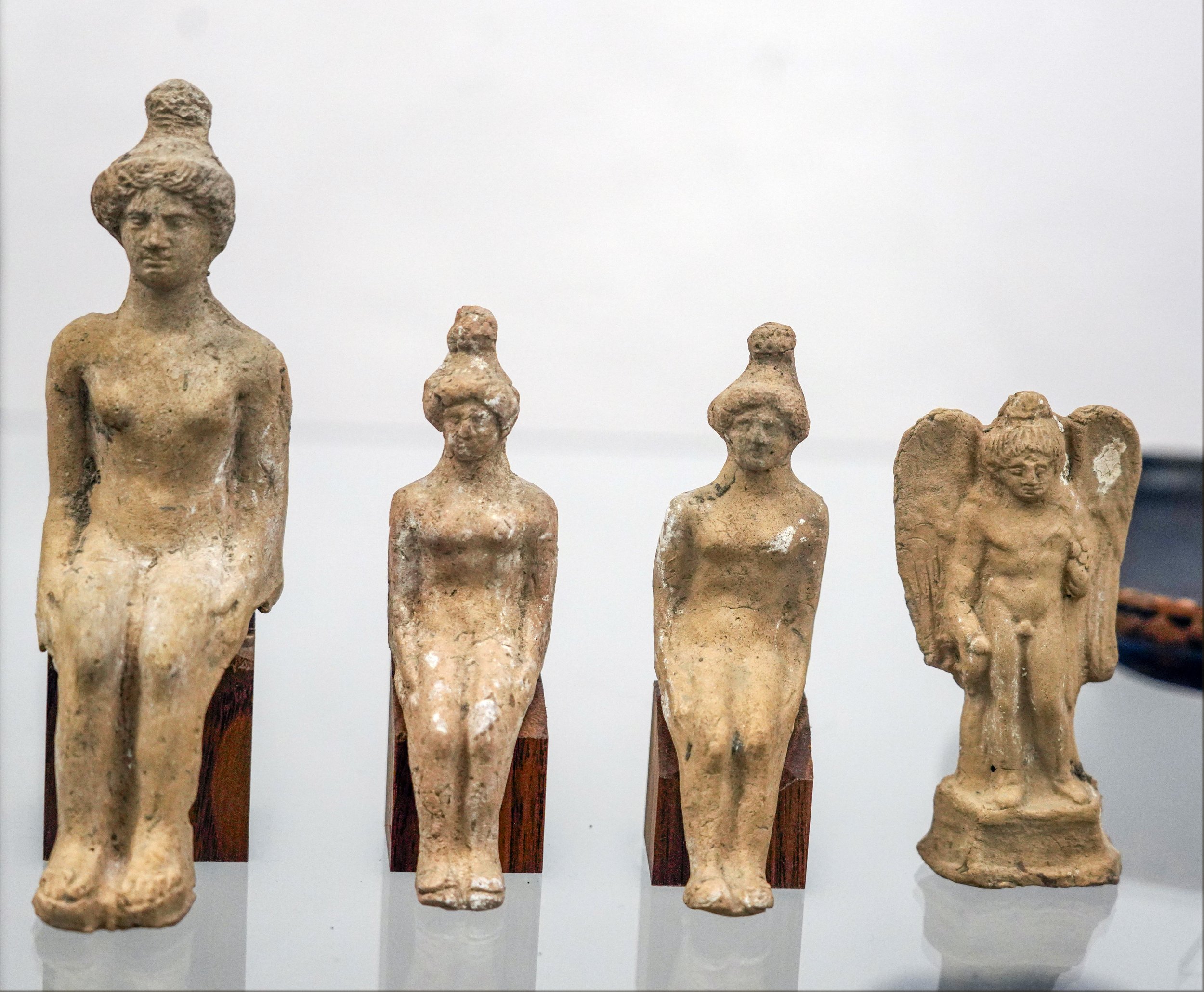
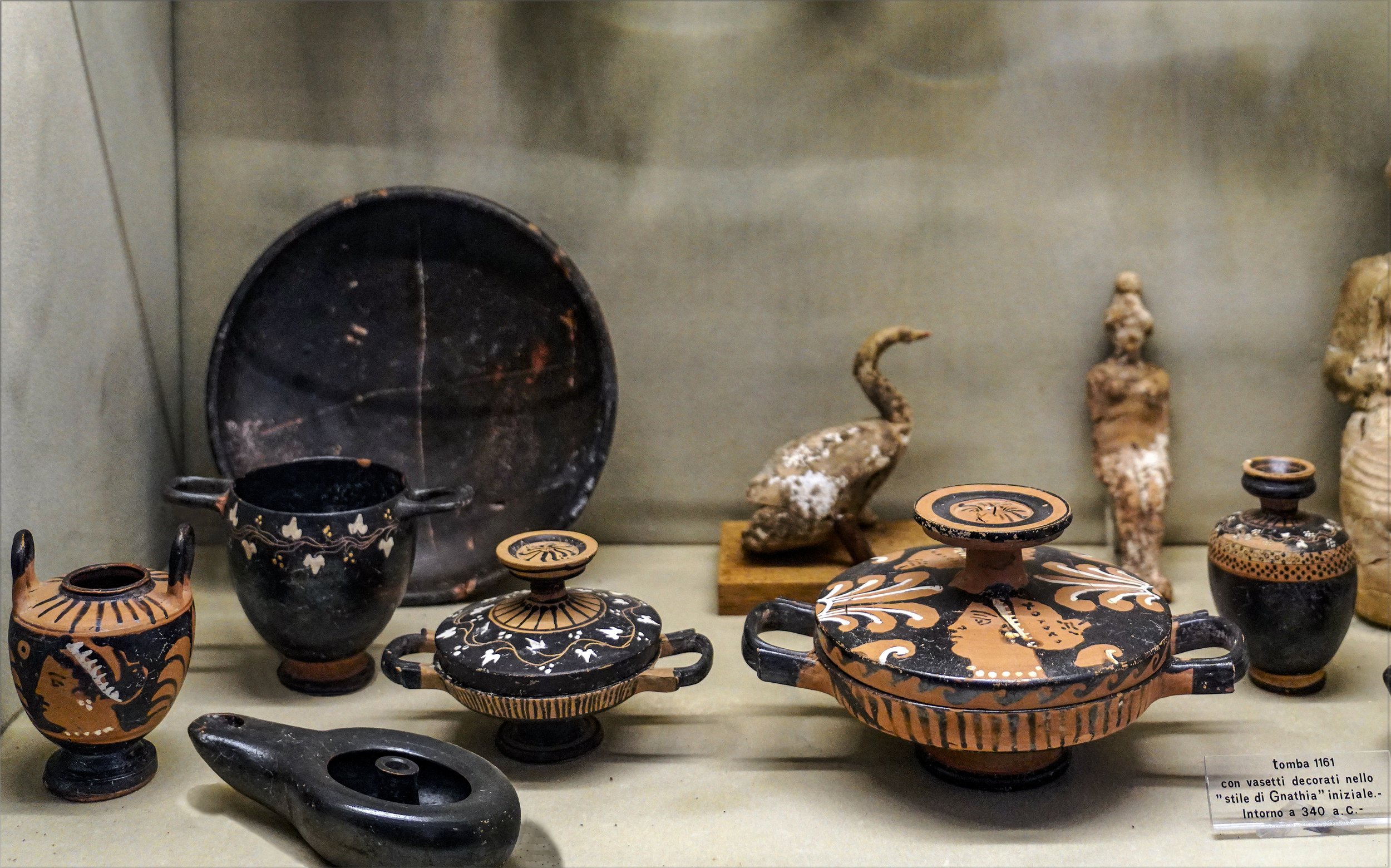
Tomb contents with vases decorated in the initial “Gnathia style,” named after the ancient city of Gnathia (now Egnazia) in Eastern Apulia (Italian, Puglia). After 330 BC the extensive use of white paint dominated this style. As can seen above, the decoration was panted in white color with touches of yellow and red, and was applied on the black burnished vase. The new colors were fixed with a second firing. At the same time, the thematic range was reduced, limiting itself to tendrils of vine, ivy or laurel, theatrical masks, and, within the tendrils, male and female heads, doves and swans.

Ushebti figure with wig and agricultural tools: hoe and sickle, in Egypt ritually deposited in tombs, symbolic companions of the dead in afterlife. Hieroglyphic inscription not legible. Ushabtis were placed in tombs among the grave goods and were intended to act as servants or minions for the deceased, should they be called upon to do manual labor in the afterlife. The figurines frequently carried a hoe on their shoulder and a basket on their backs, implying they were intended to farm for the deceased. They were usually written on by the use of hieroglyphs typically found on the legs. They carried inscriptions asserting their readiness to answer the gods' summons to work.
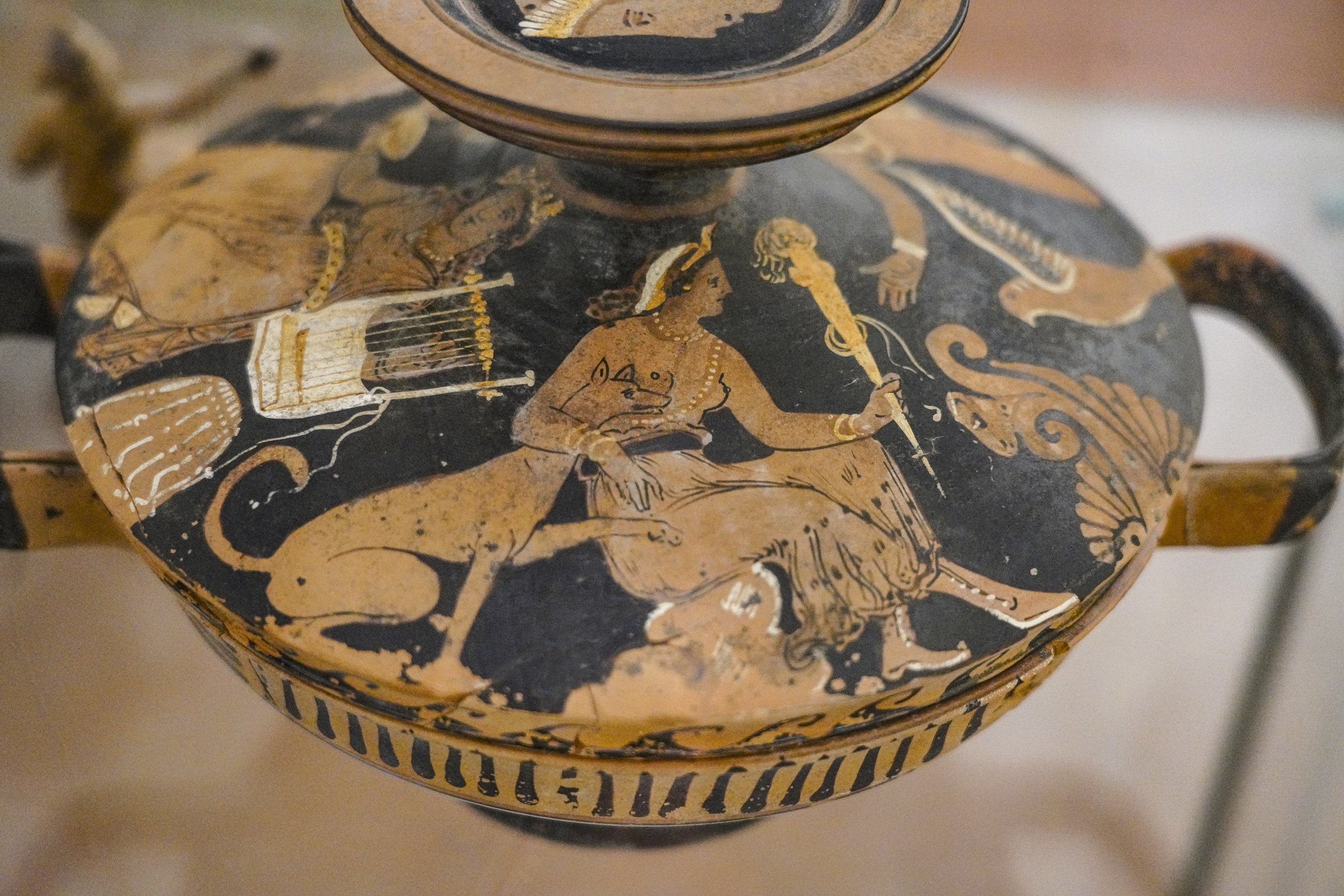
Hecate, shown here with a hound and torch, was most notably in ancient Greek religion the goddess of magic, witchcraft, the night, light, ghosts, necromancy, and the moon. Further, she was the goddess and protector of the oikos (house/household, and entranceways.
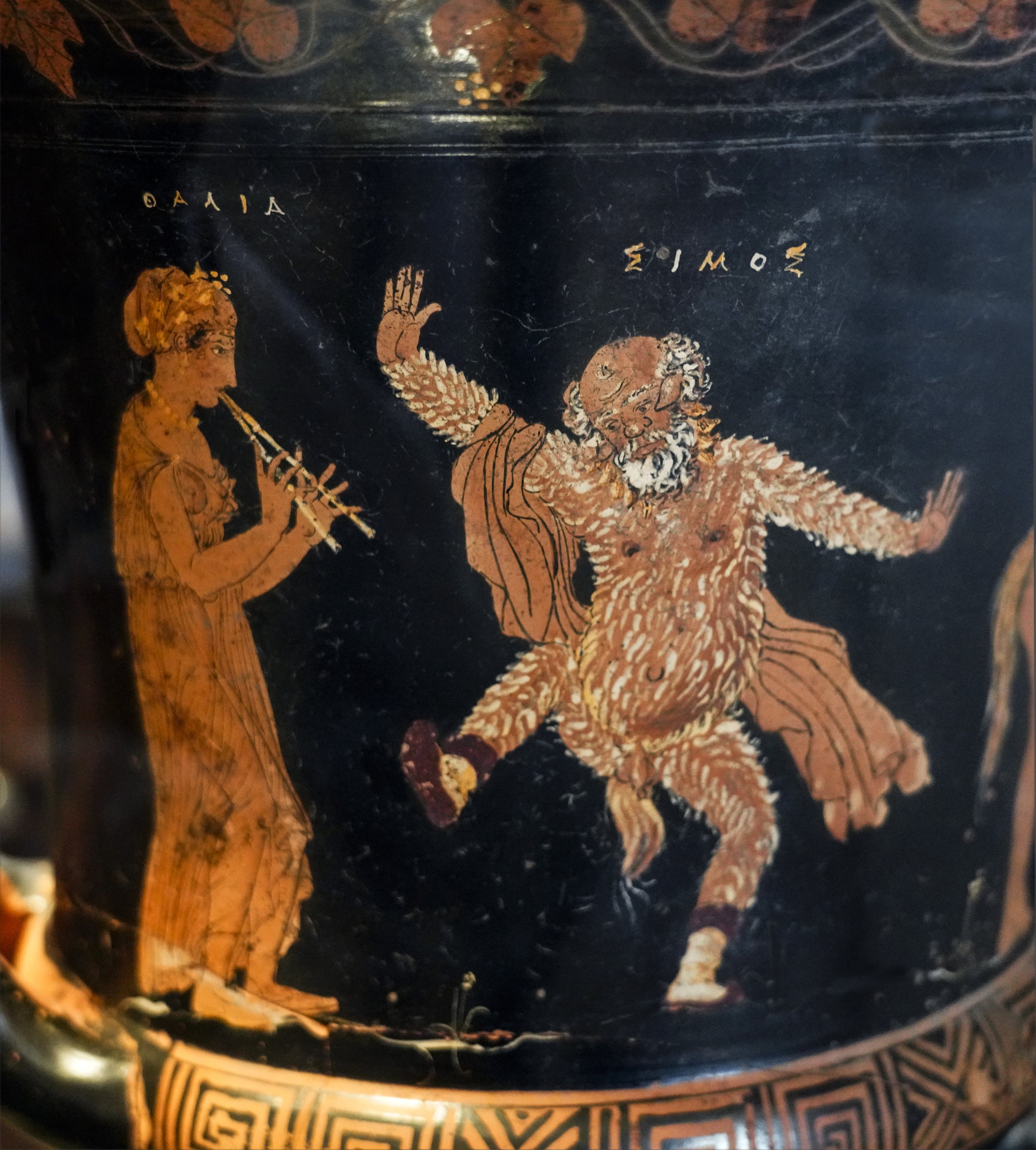
Euterpe is one of the nine muses, fathered by Zeus. All the muses were assigned various roles and Euterpe became the Muse of Music and Lyric Poetry. She is almost always depicted holding a flute. It is interesting to note that the flute playing was limited too certain occasions, as its sound seemed to the ancients to arouse enthusiasm and passion (Arisstotle, Politics, viii 3). For example, dramatic music was introduced with the Greek Drama, but limited to flute-playing.


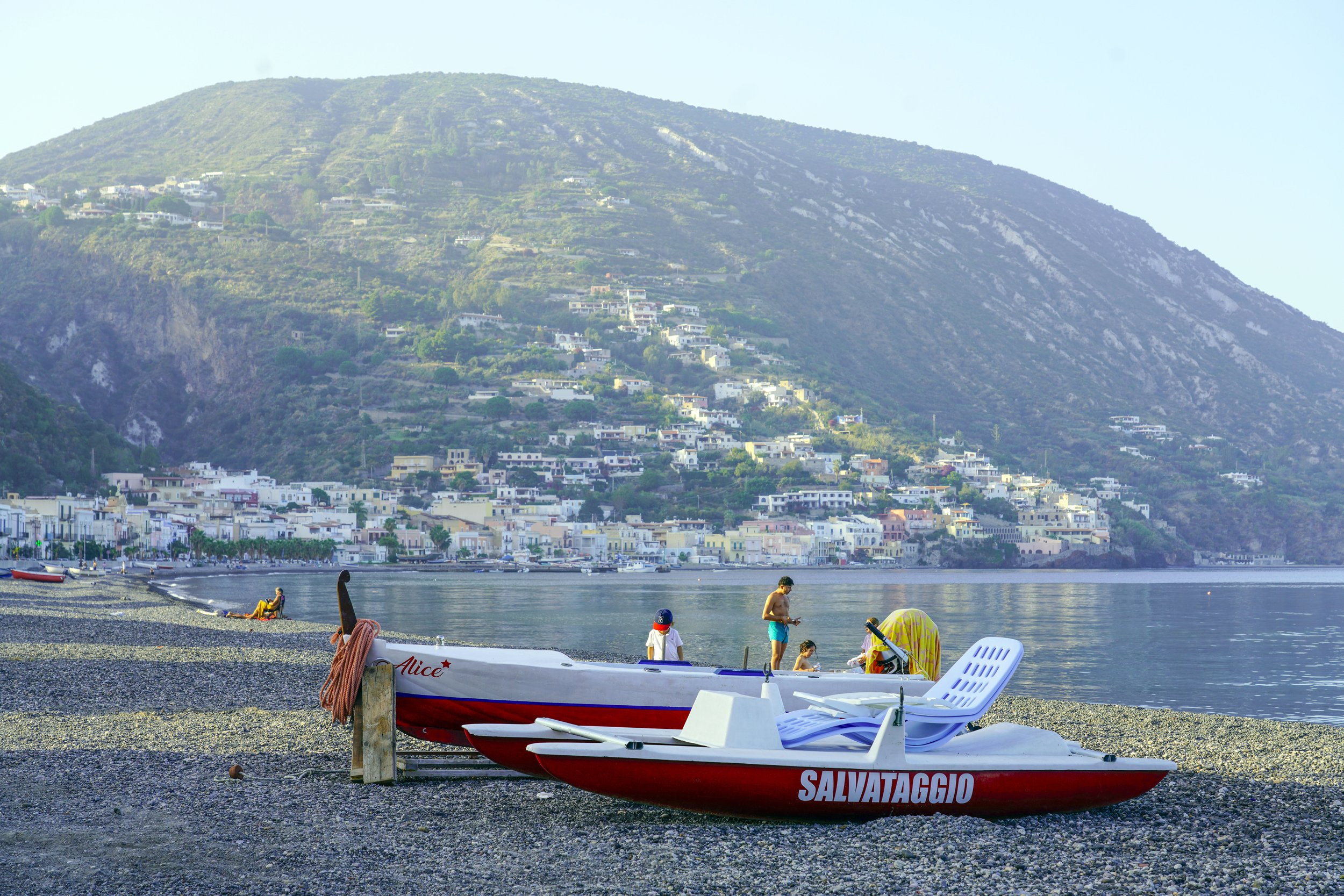
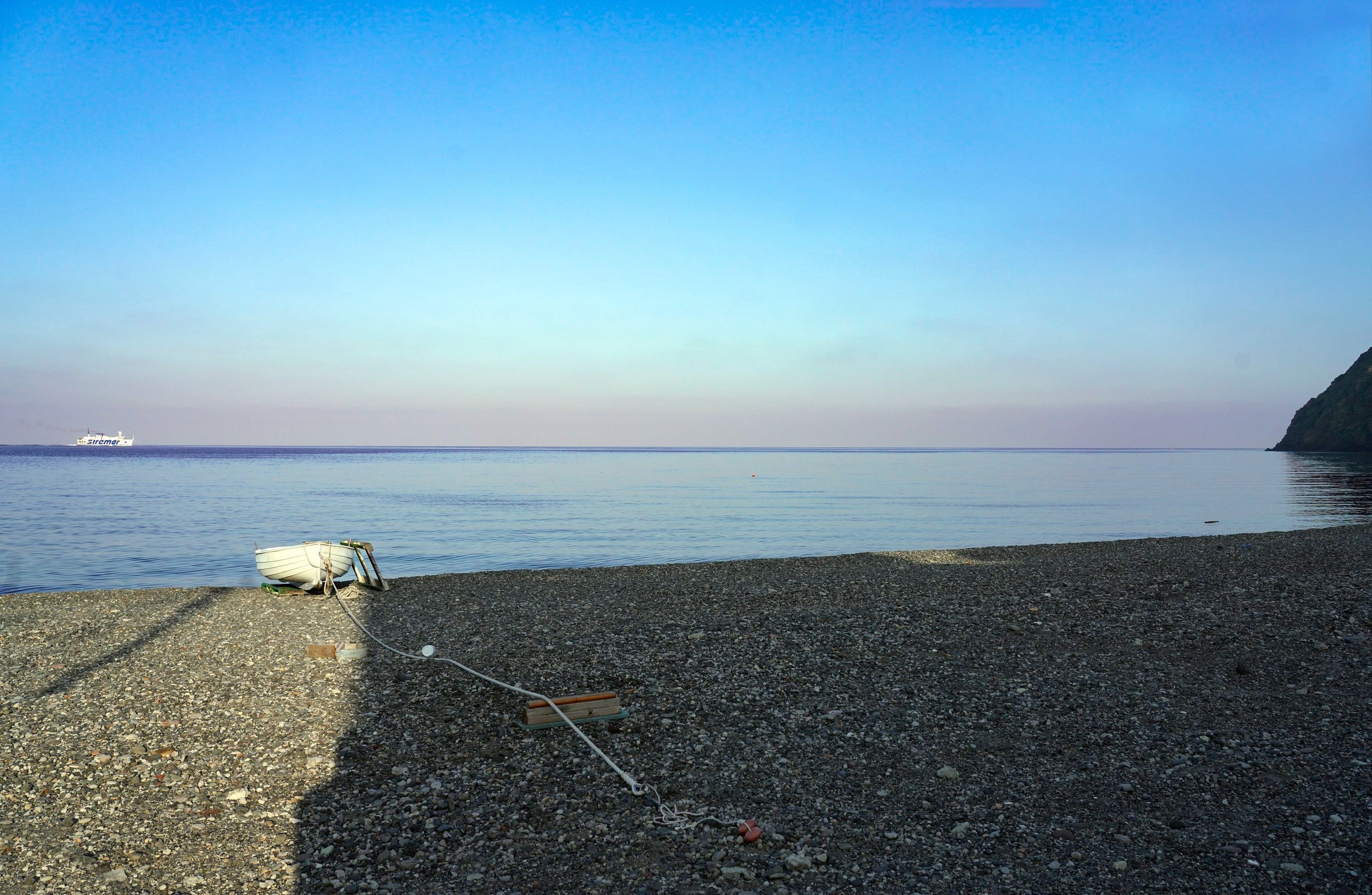
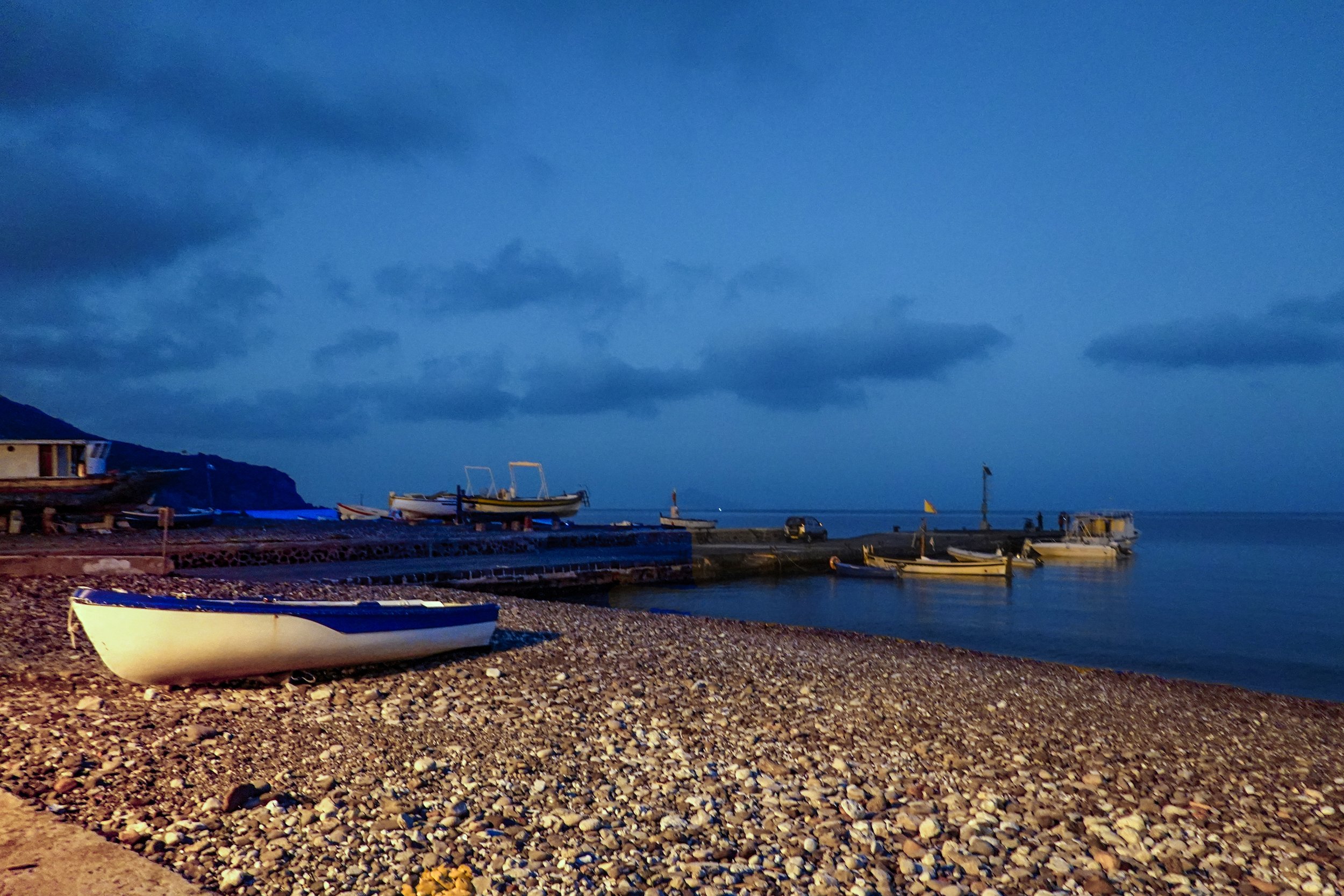
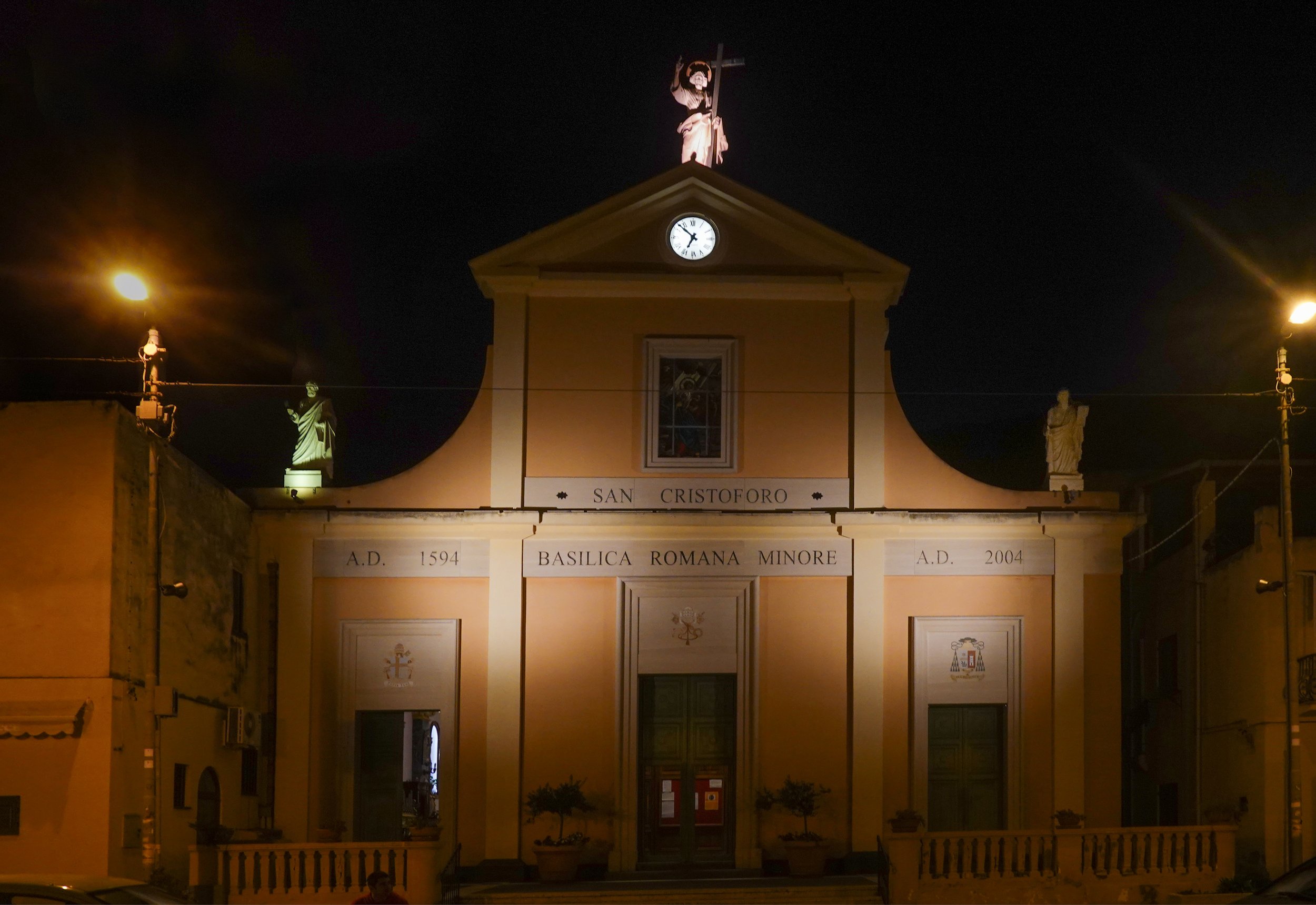

In 2006 the statues of Saints Peter and Paul were placed on the sides of Saint Christopher’s and that of Christ the Redeemer on the top, artifacts blessed in Rome by Pope Benedict XVI.

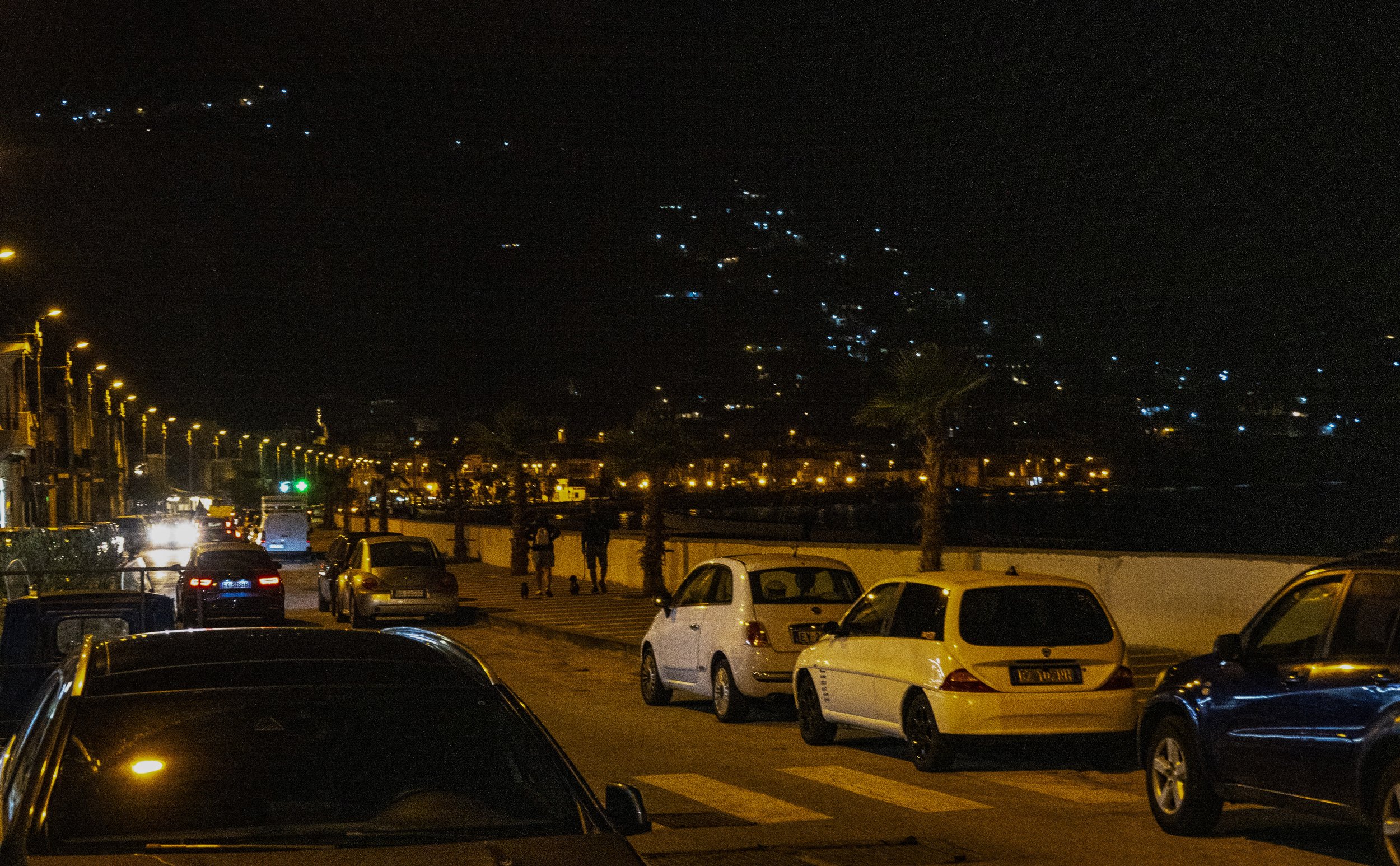
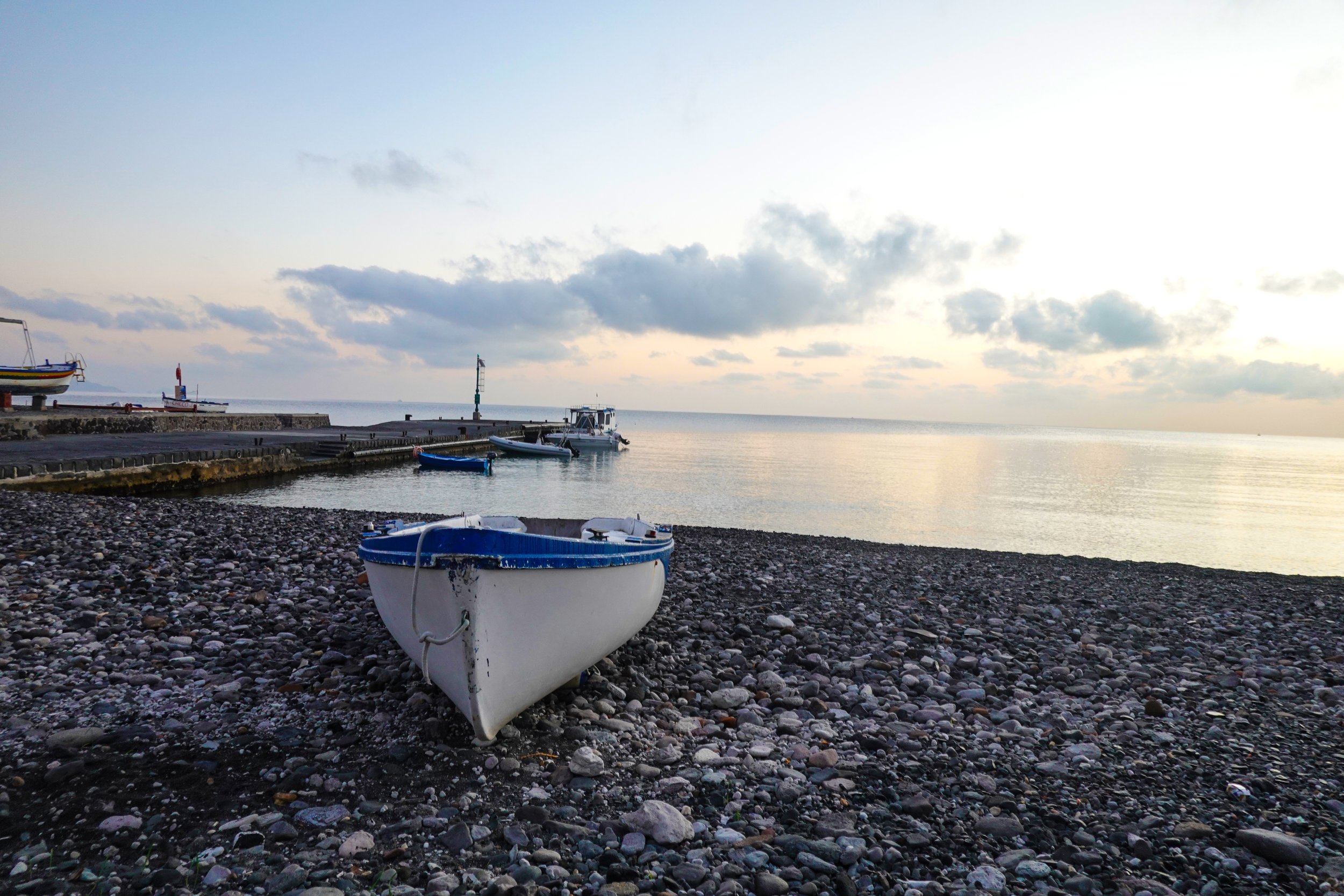
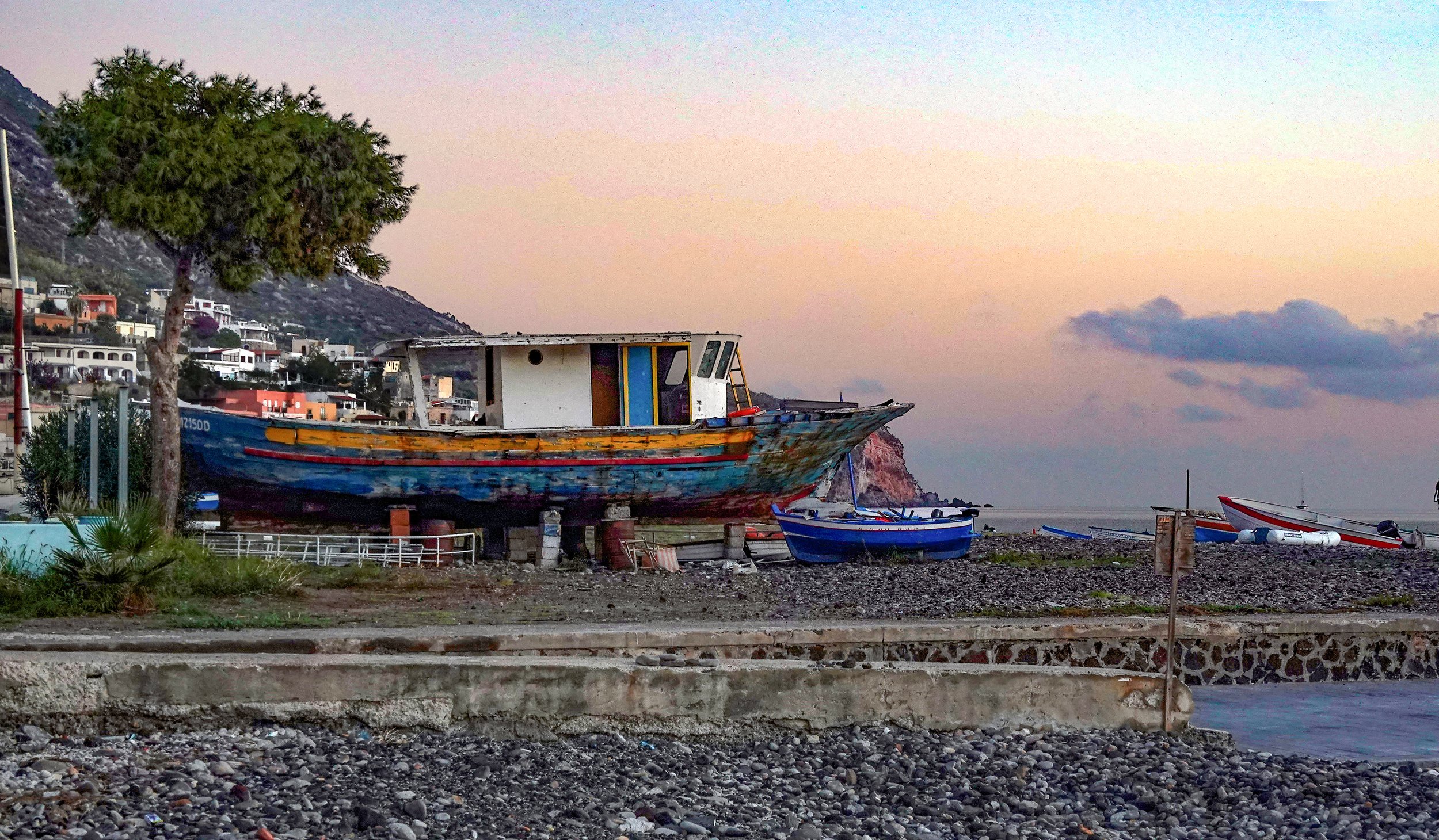
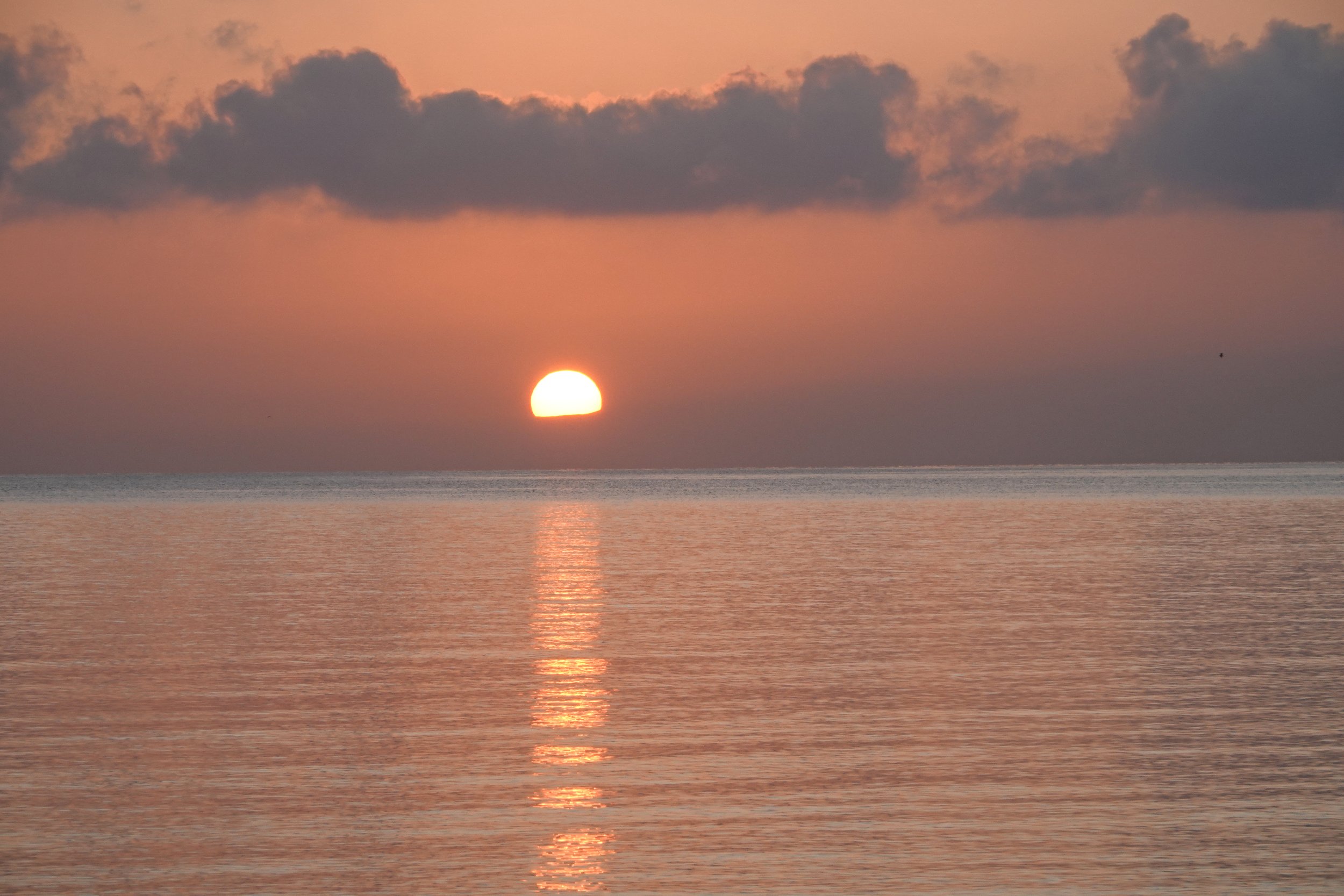
Sunrise over the Tyrrhenian sea


On the mirrors of flat seas and fireflies of stars, nebulous almost human outlines, plastic bodies with an intense life, round shapes full of mystery, are pregnant with silence and desire


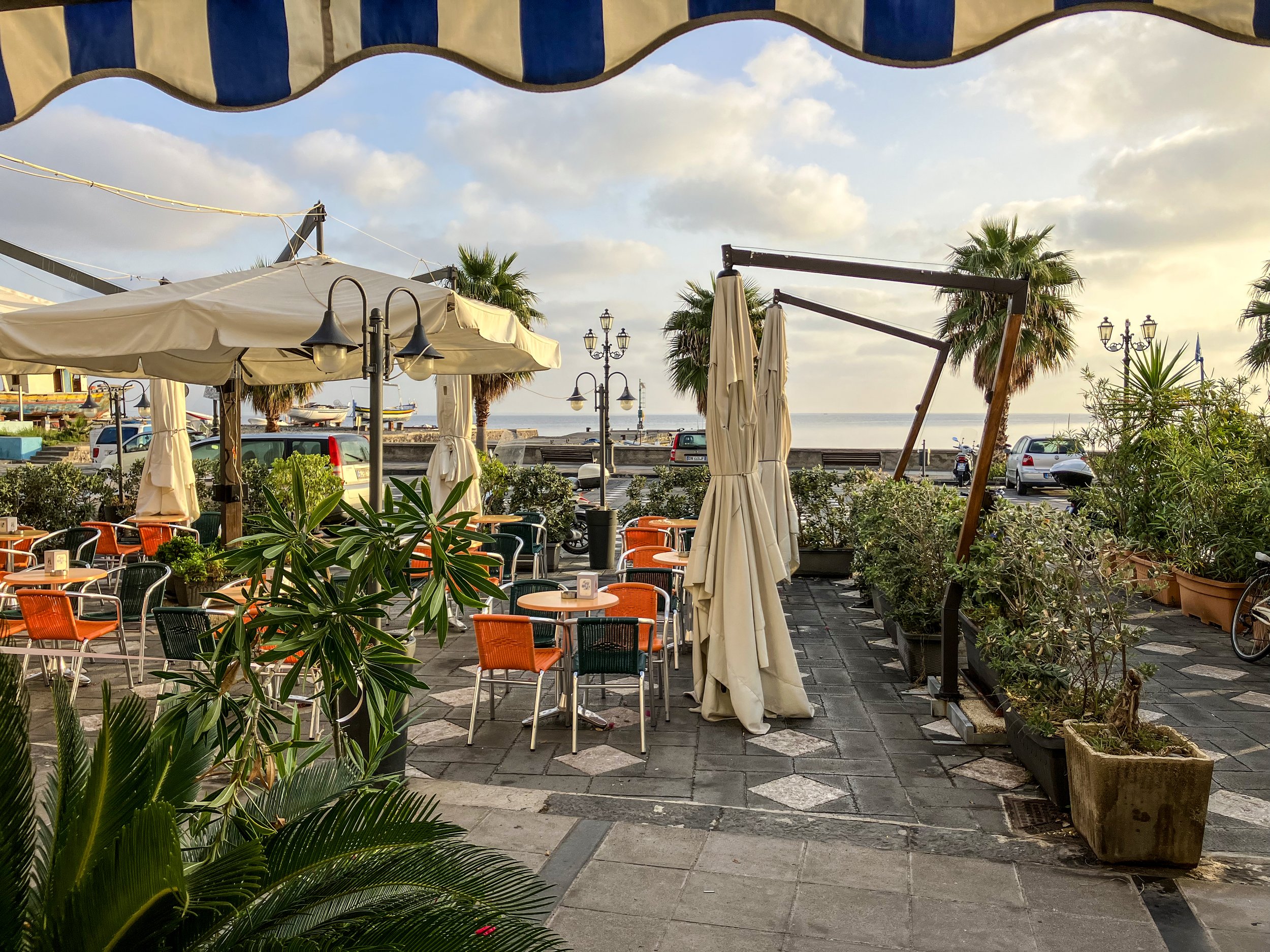
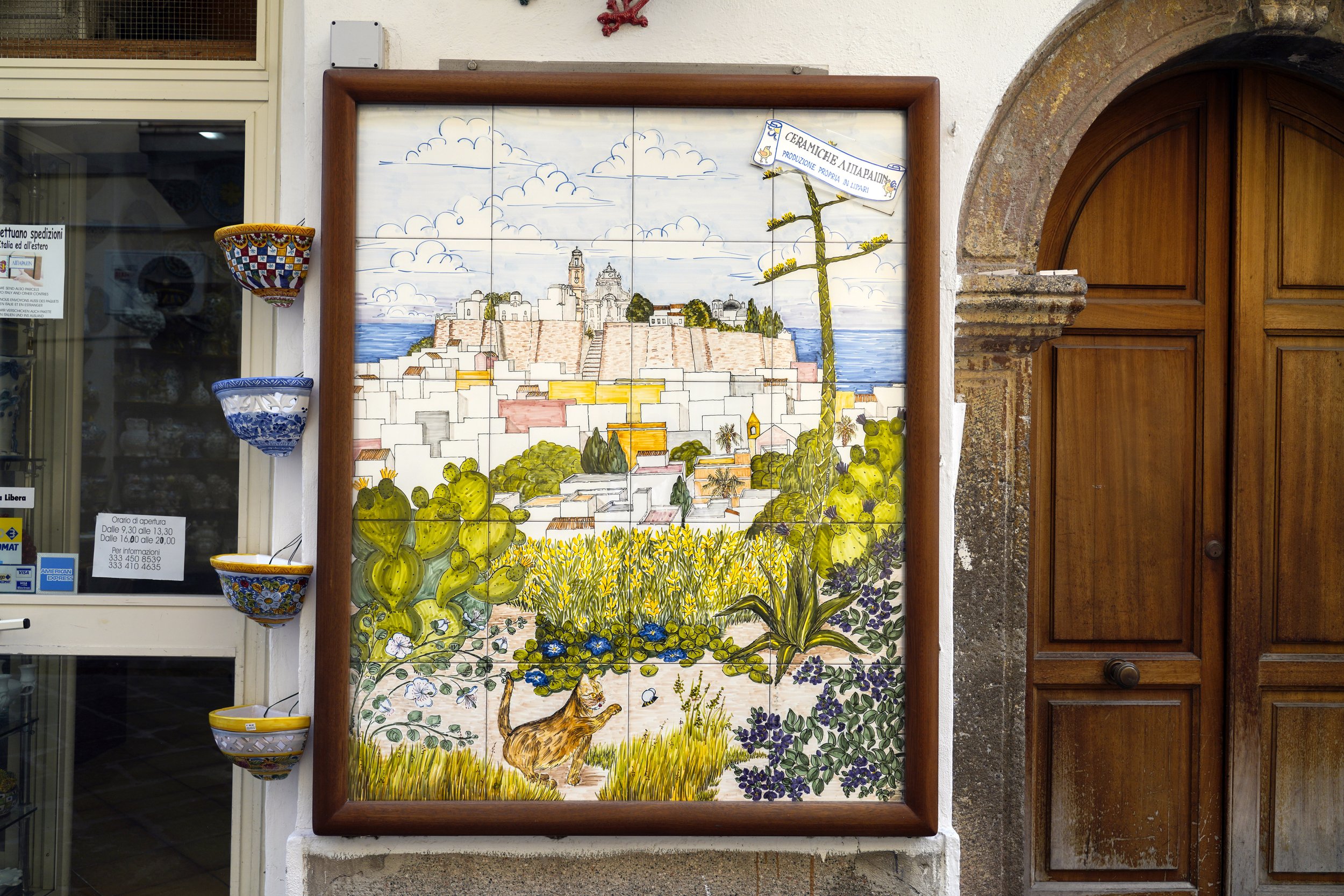

Vulcano Island has an area of 8 square miles. Although the last major eruptions were in 1888–90, fumaroles of sulfurous vapor testify to continuous volcanic activity, and its Gran Cratere is still active.
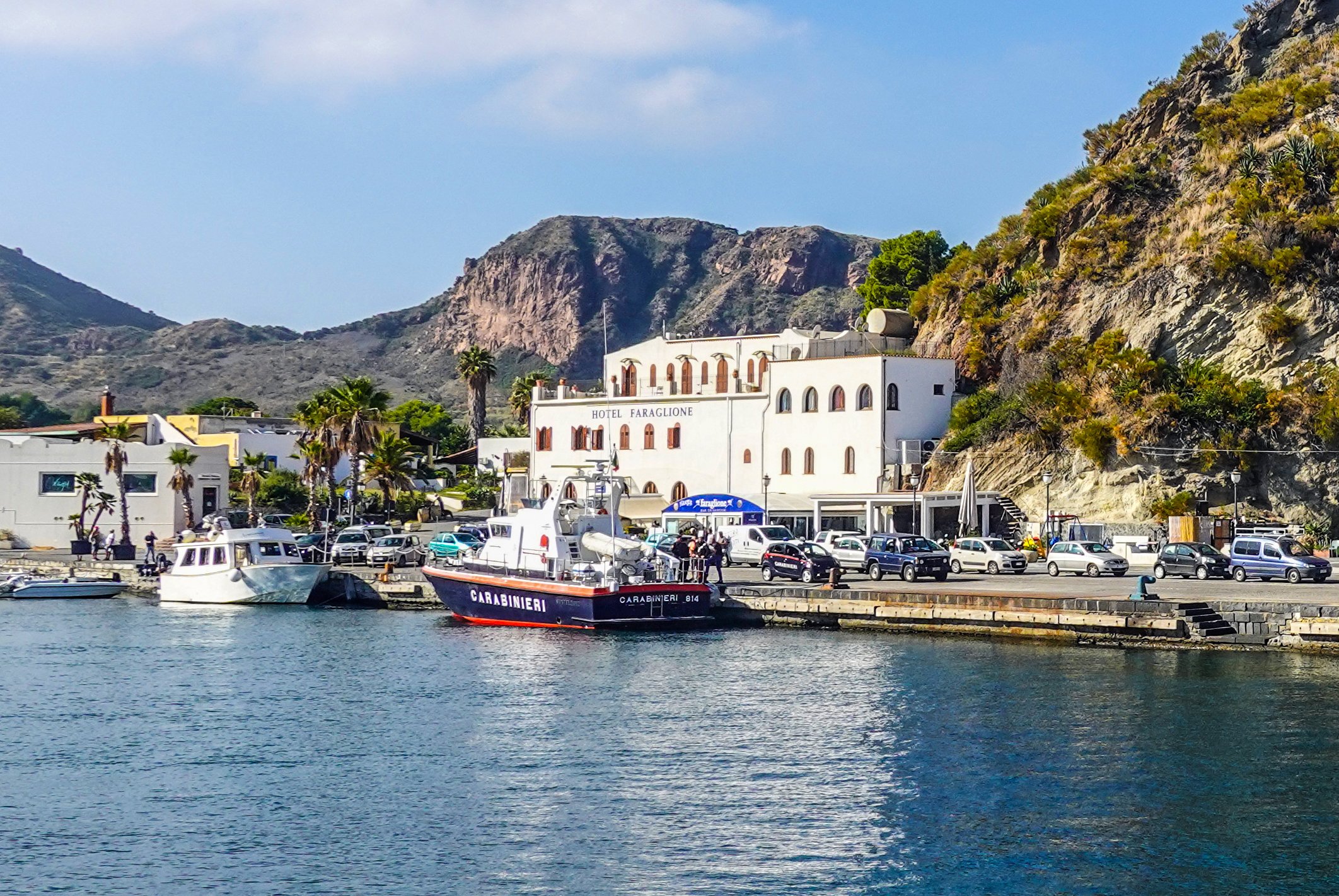
The Carabinieri is the national gendarmerie of Italy who primarily carry out domestic and foreign policing duties. It is a military force with law enforcement duties among the civilian population. The Carabinieri boats are deployed for public safety and security operations and to patrol coast and territorial waters.